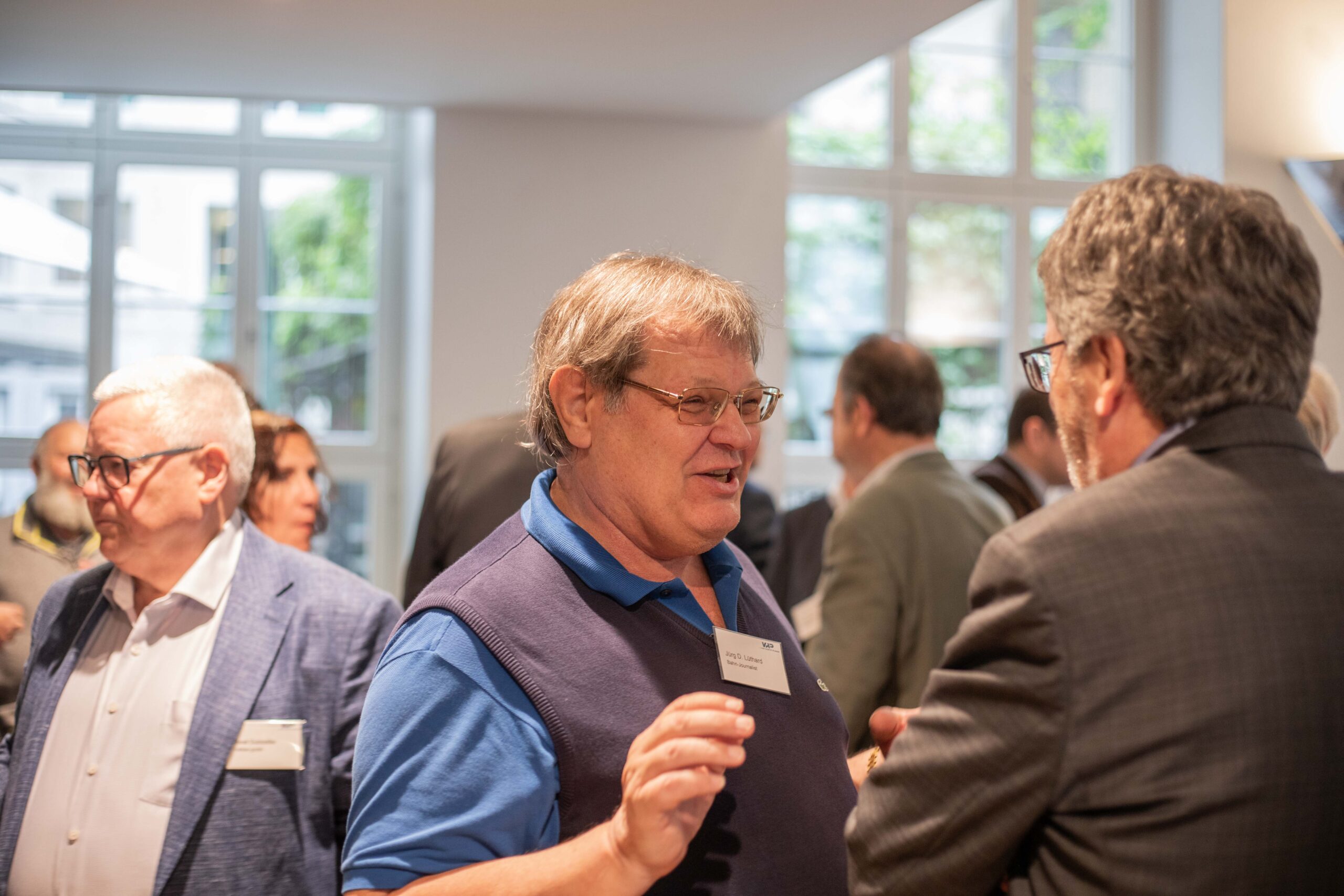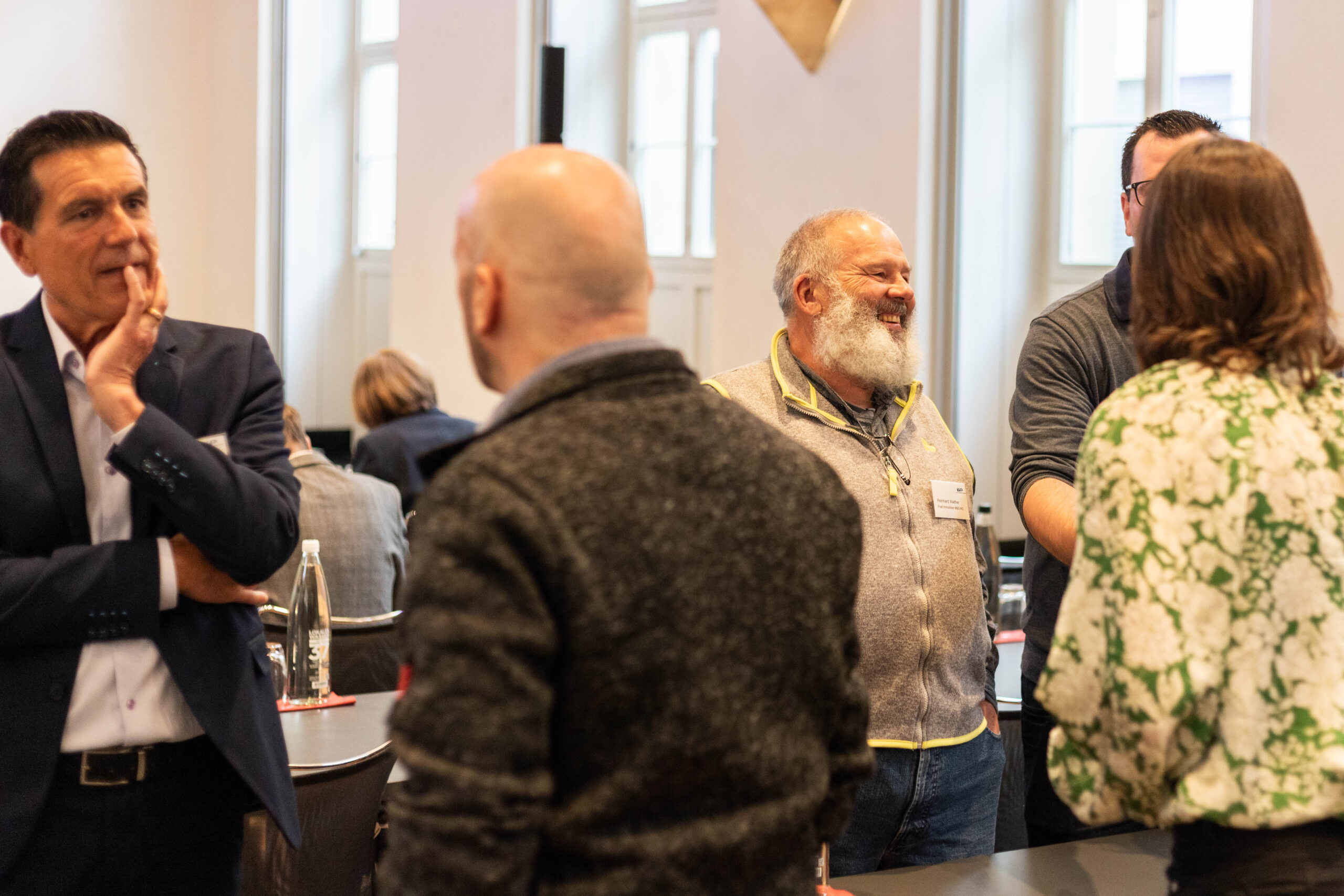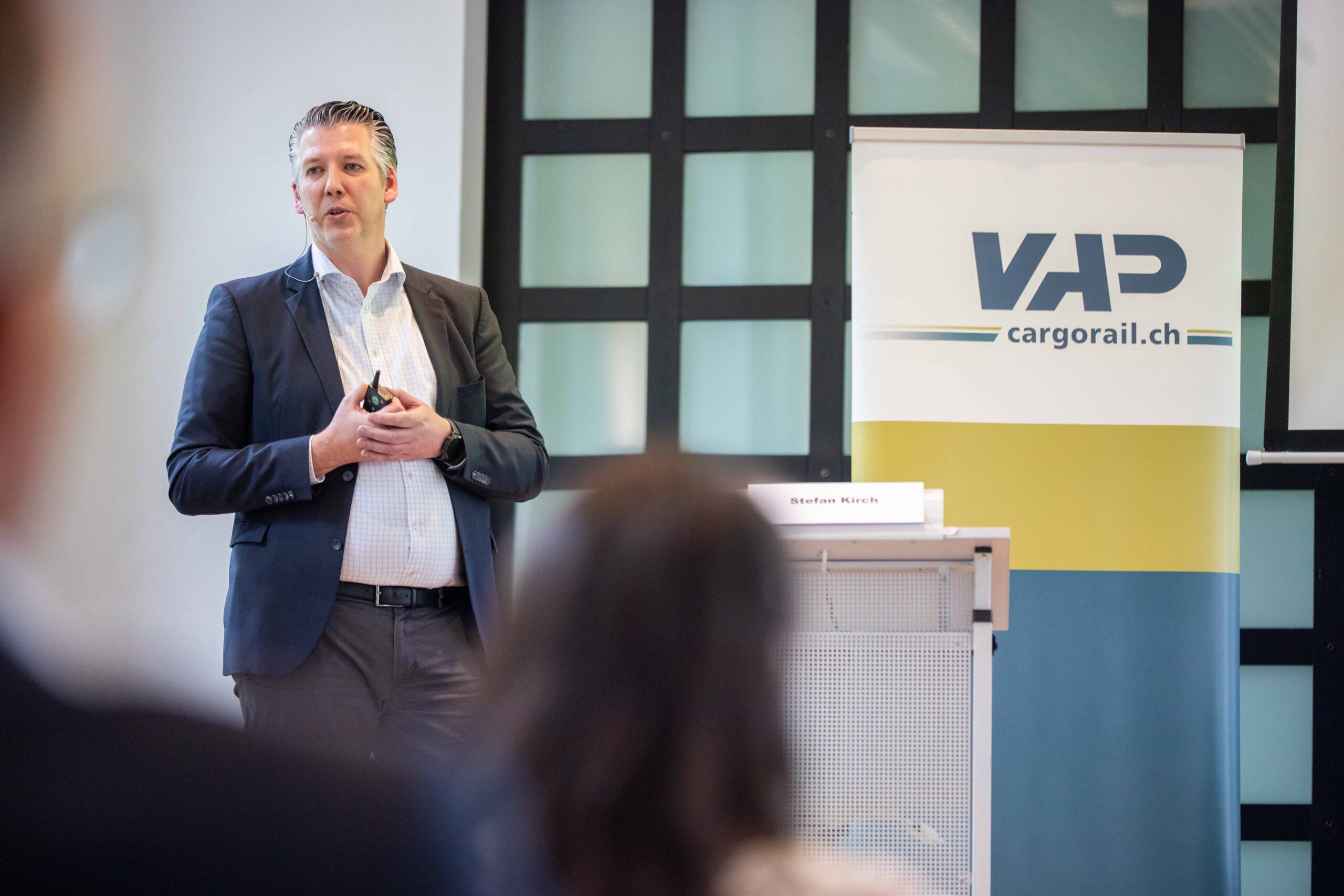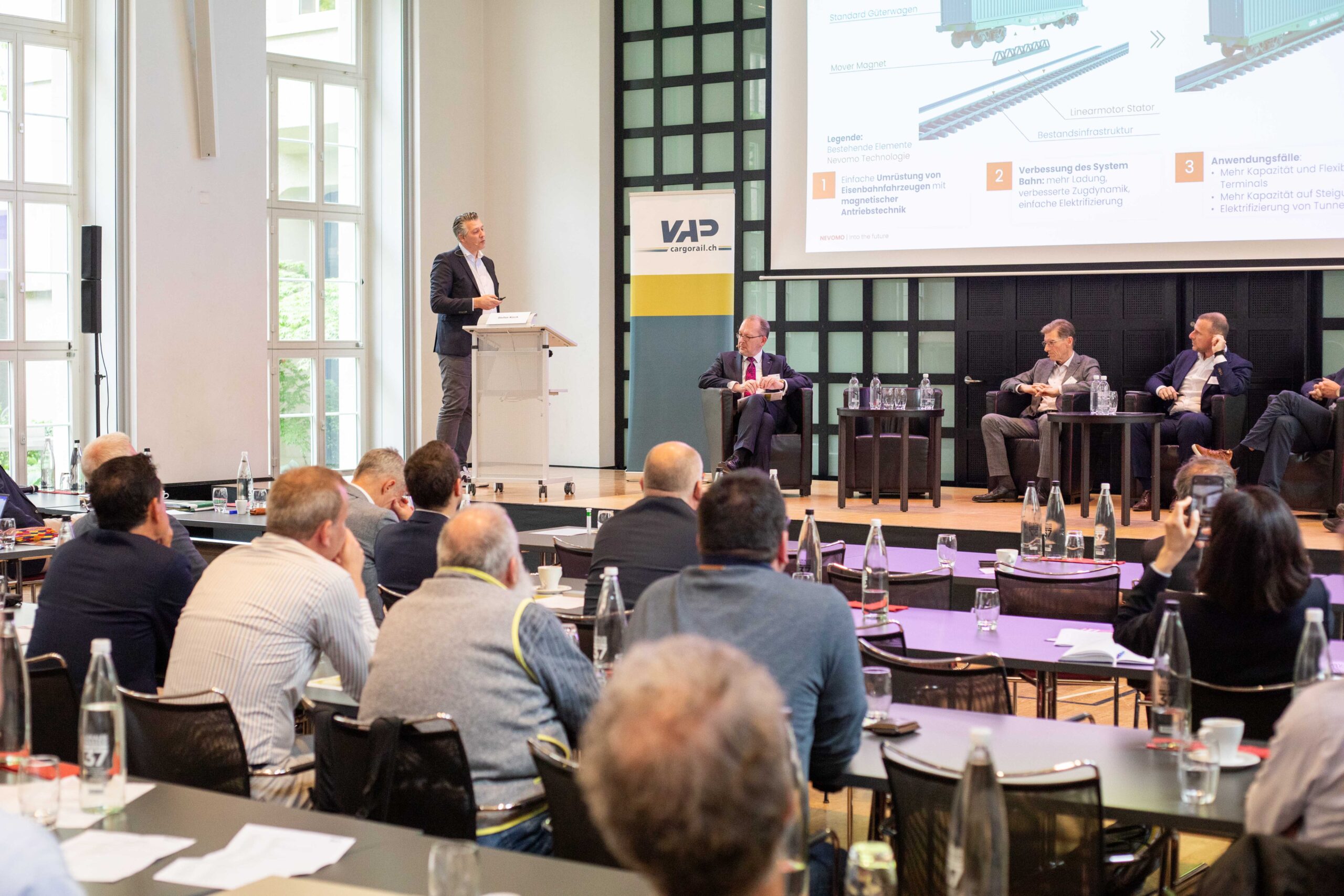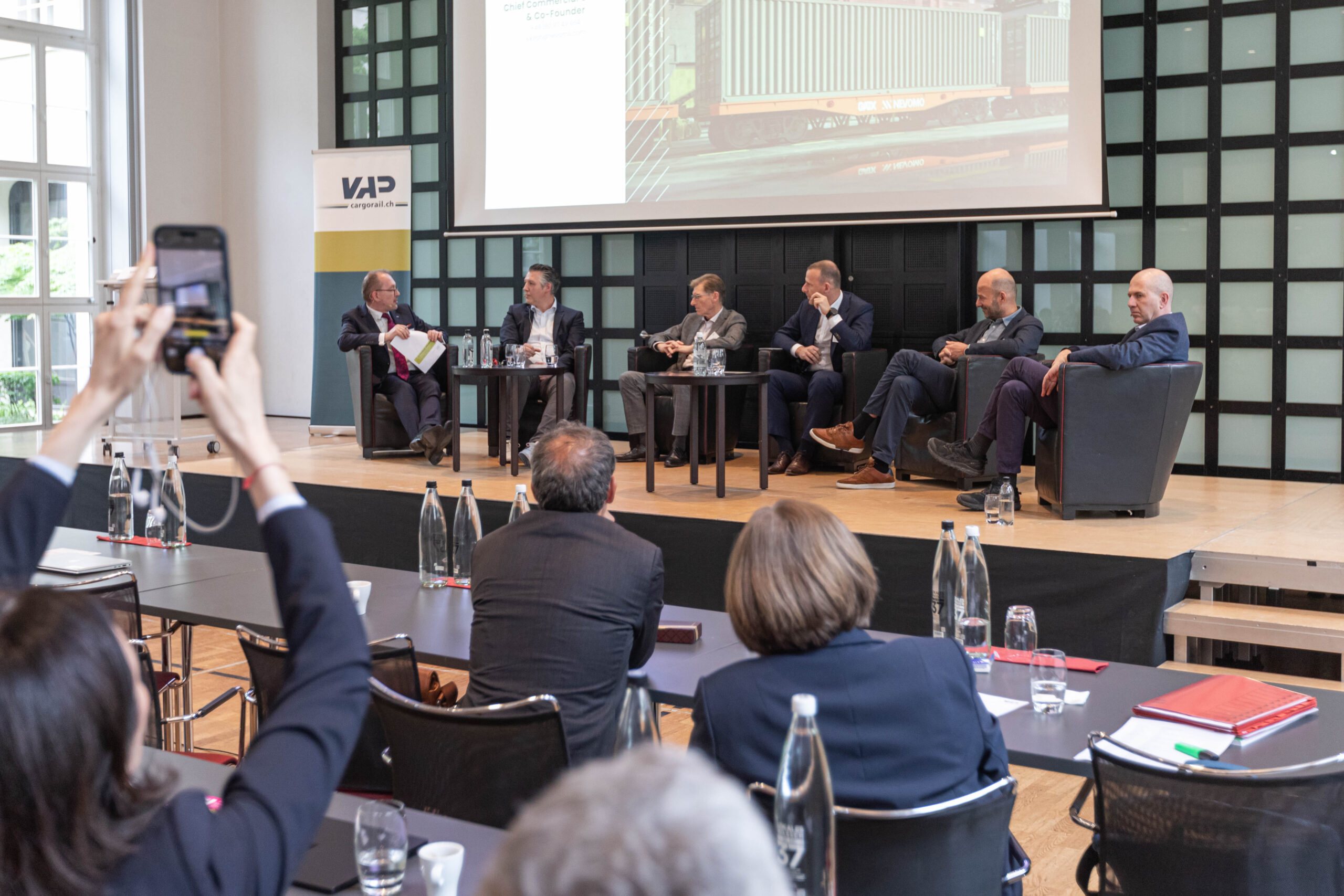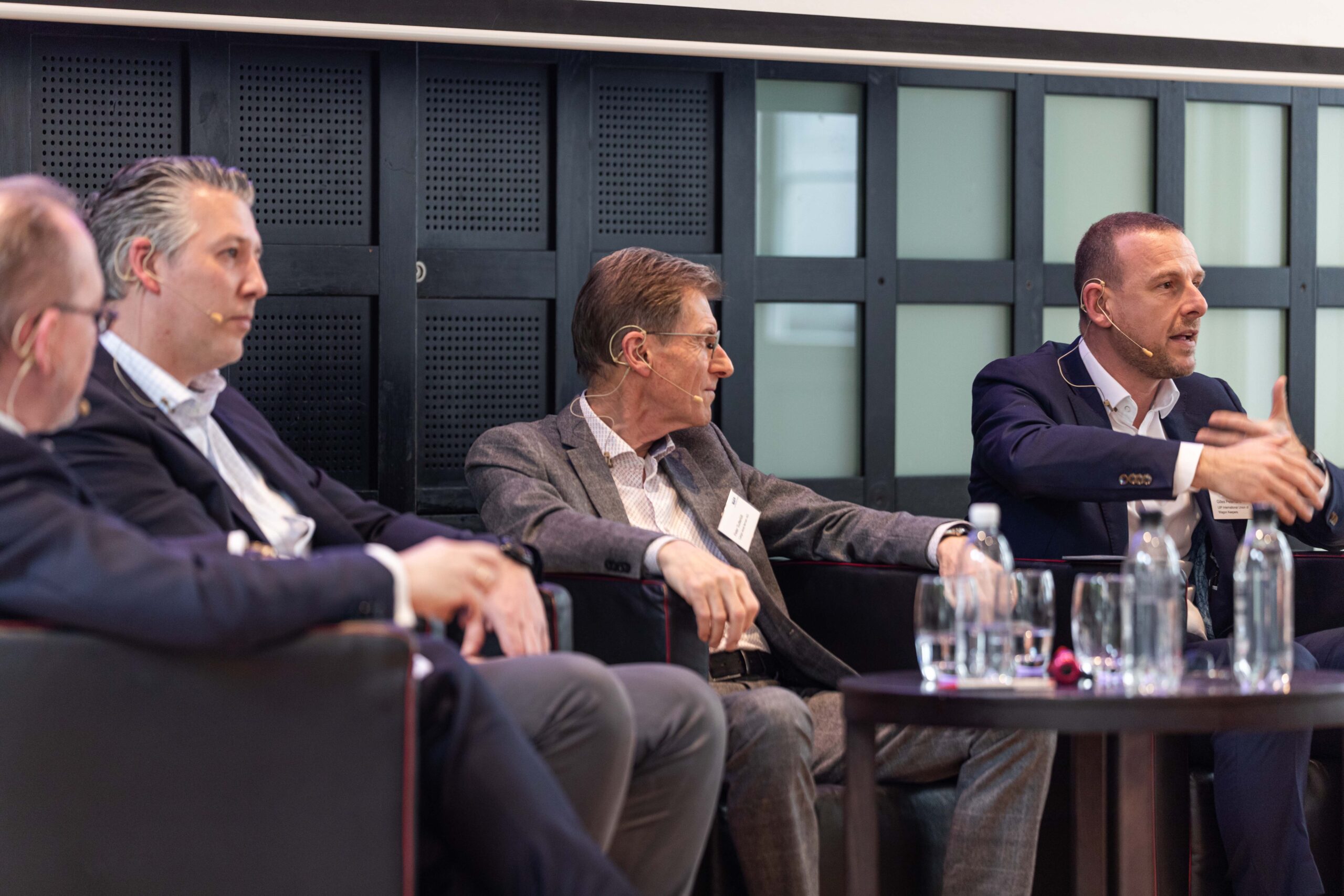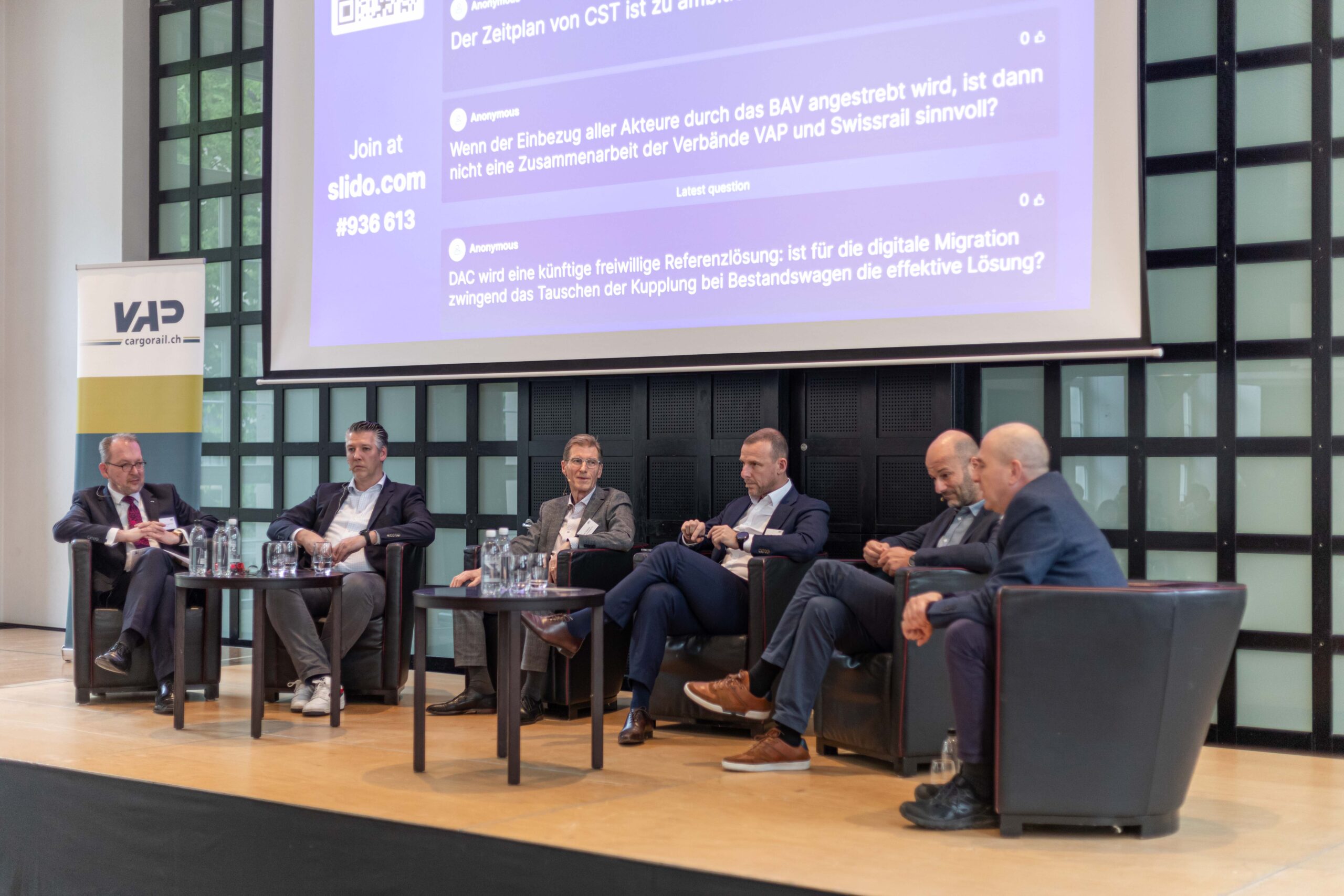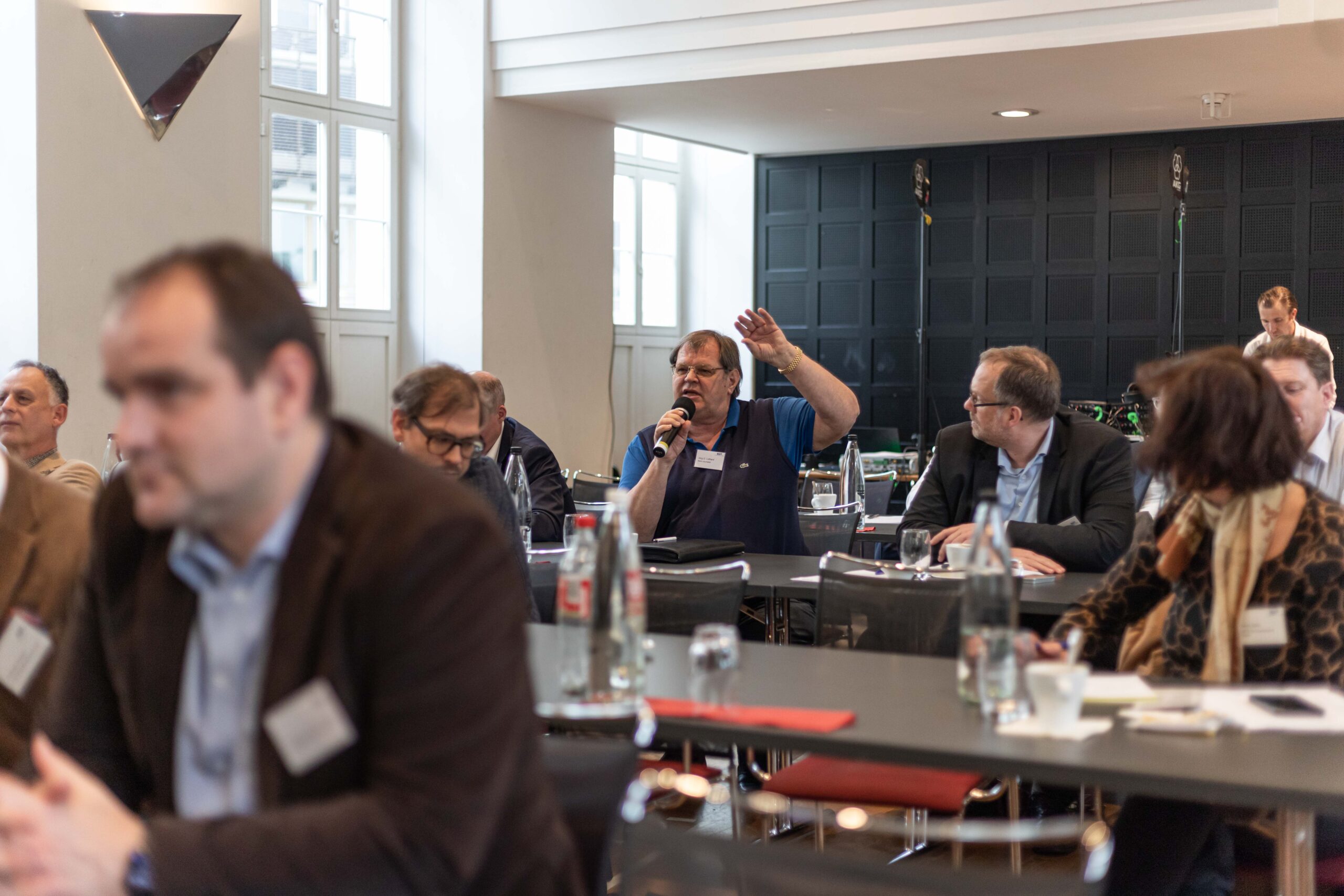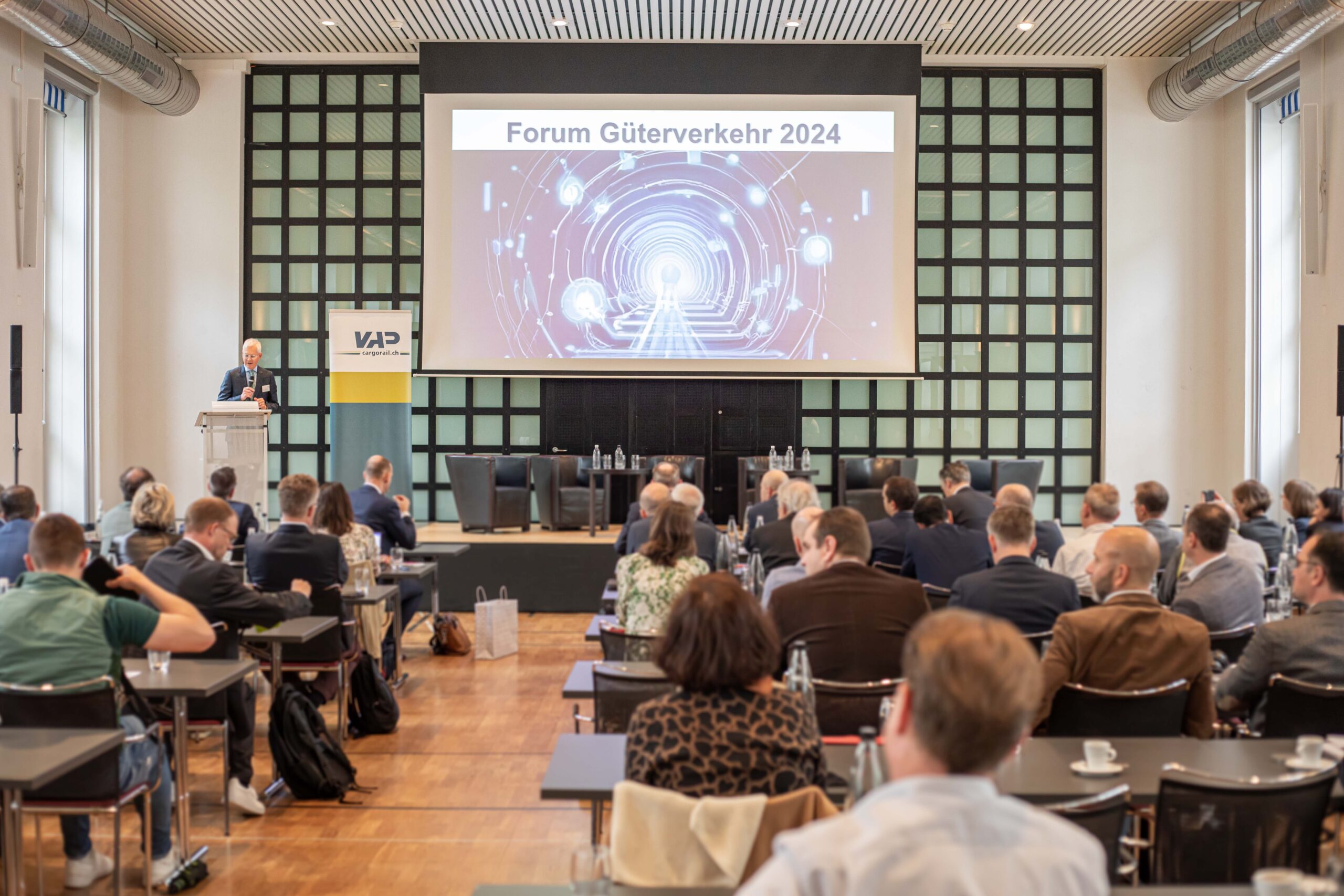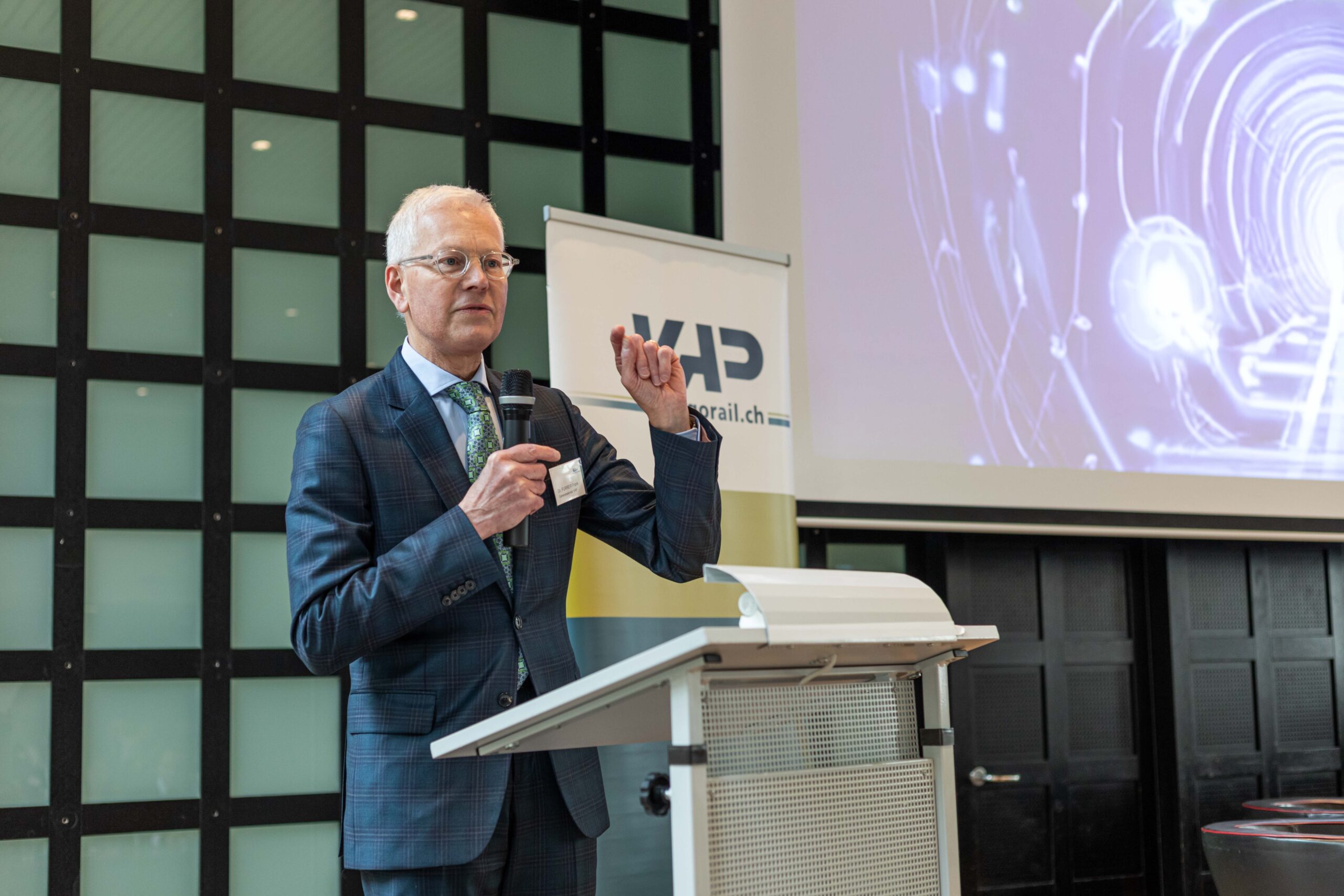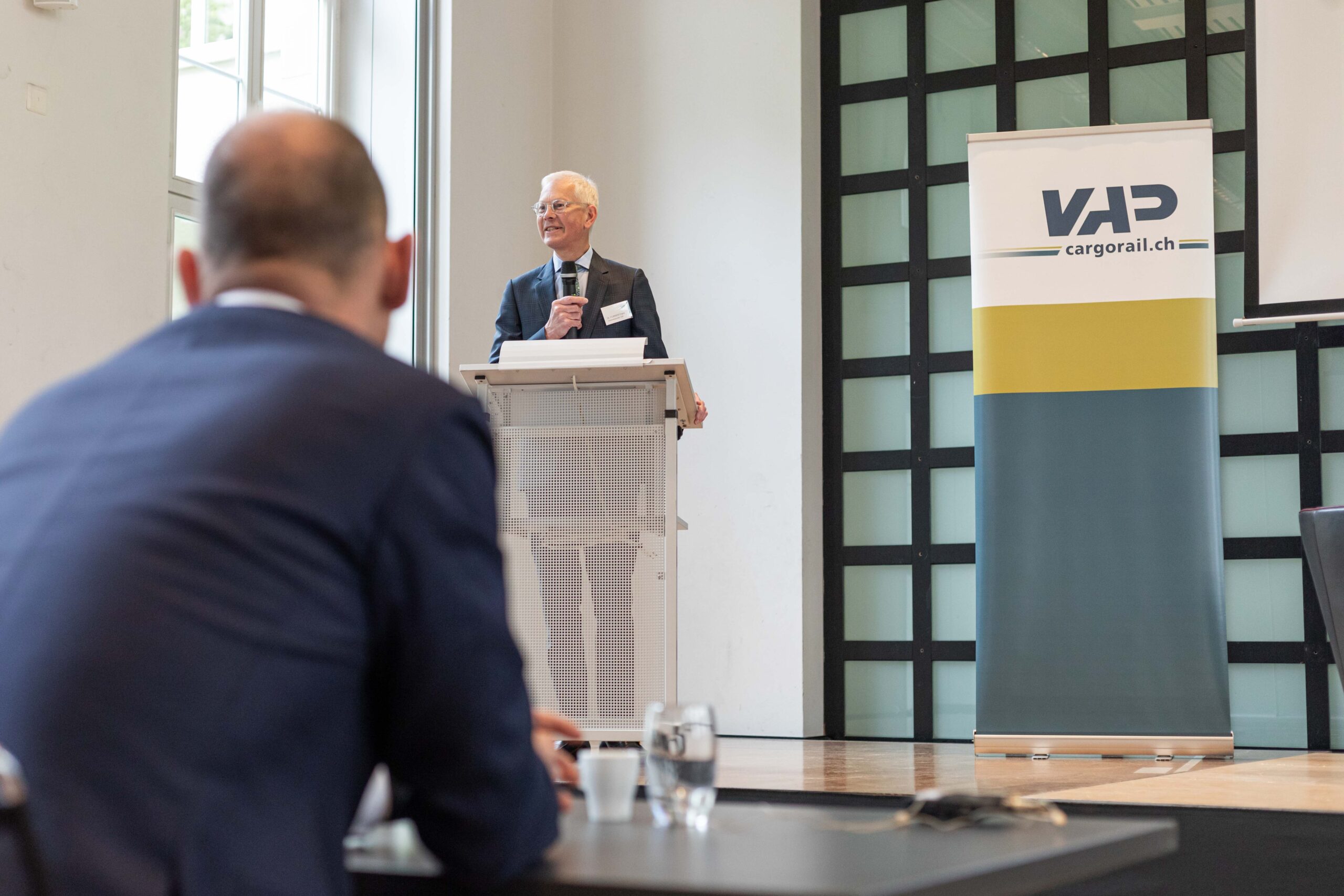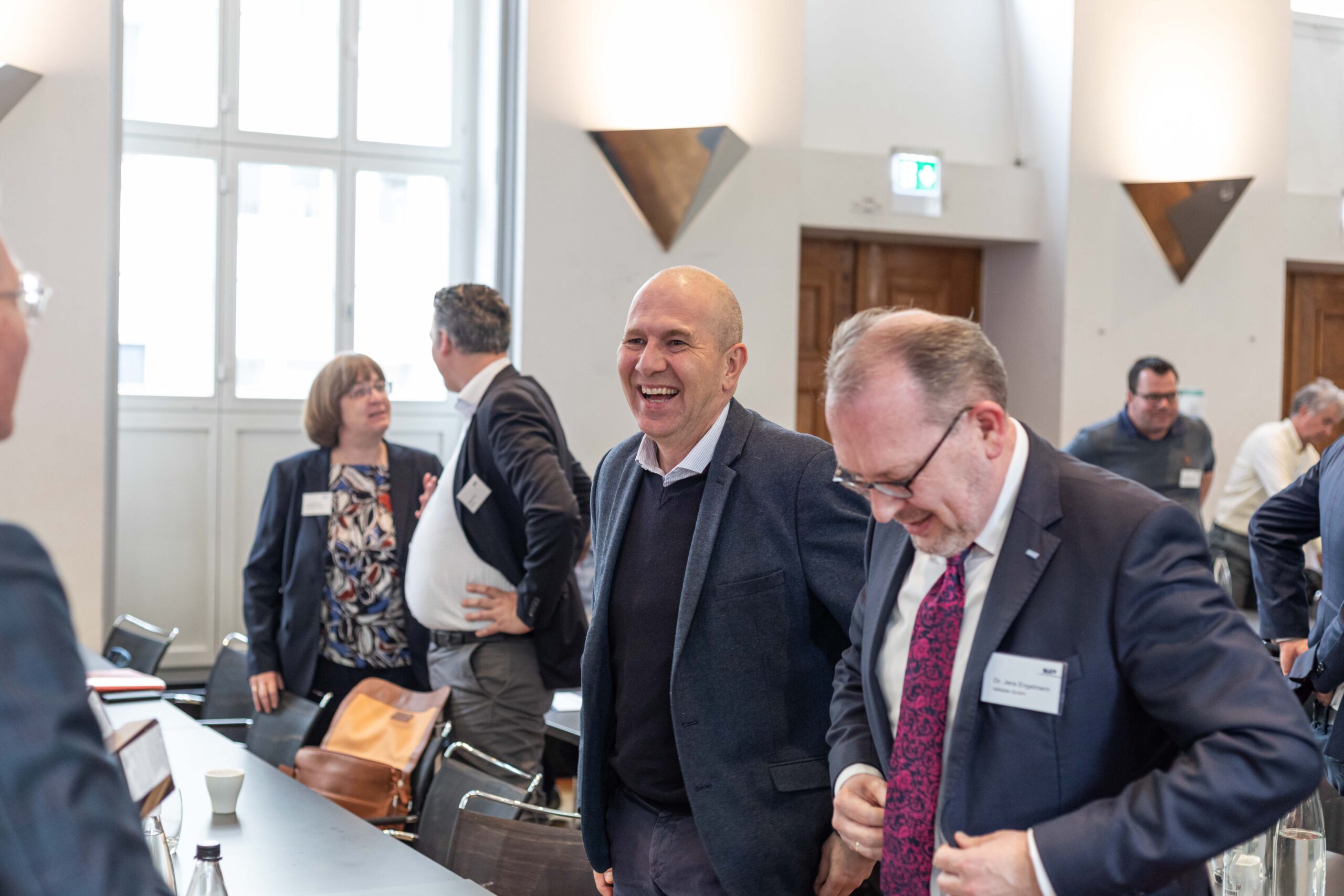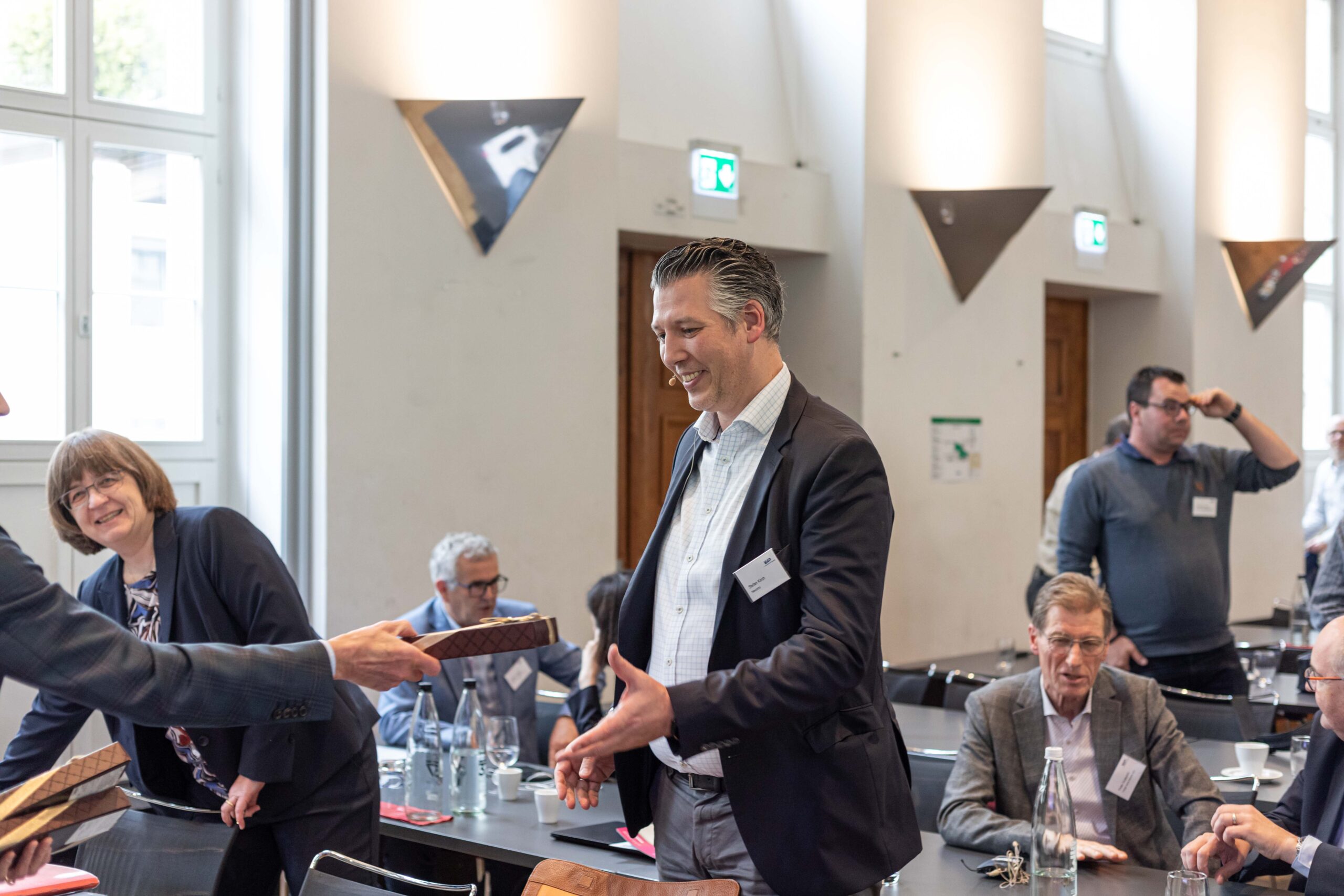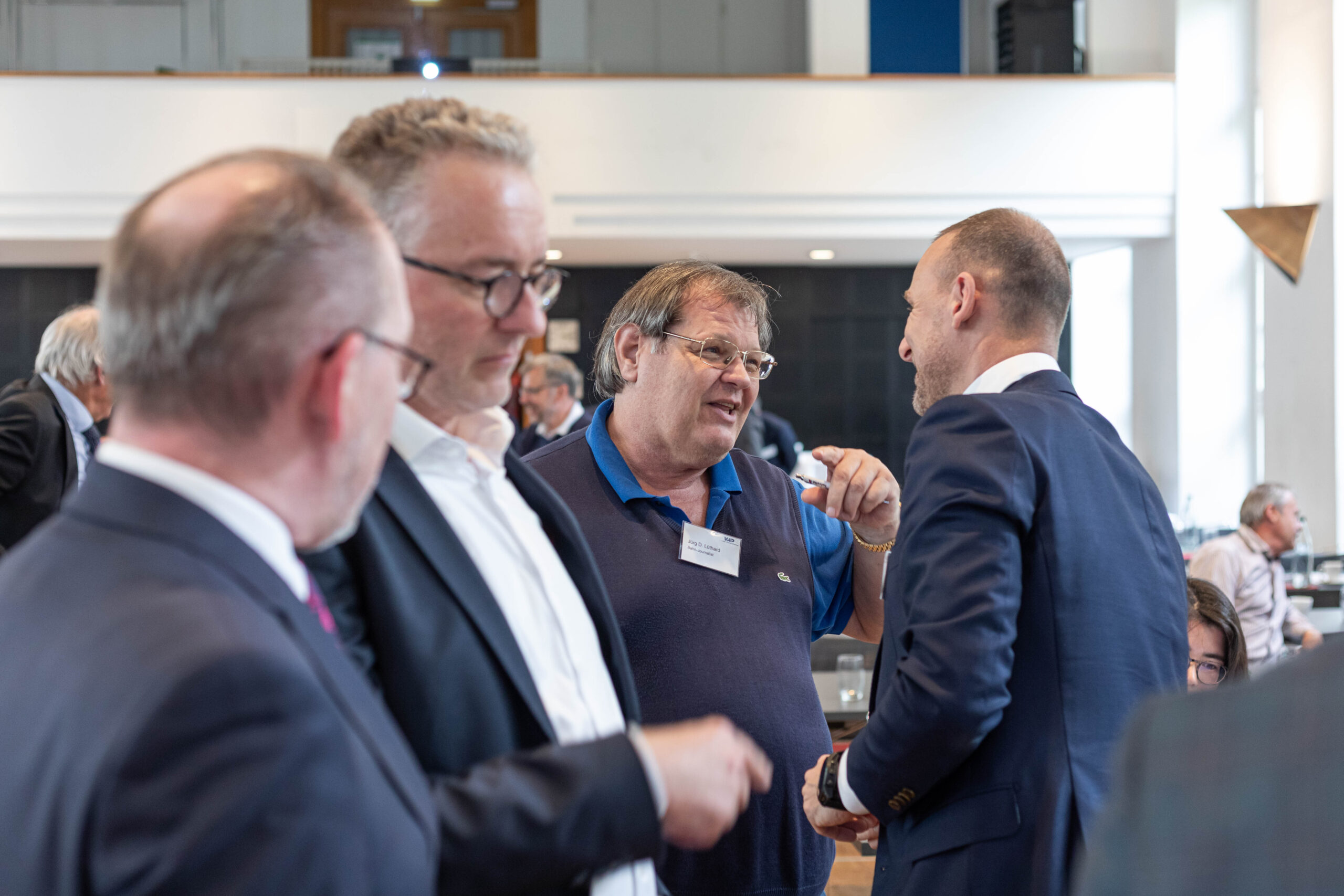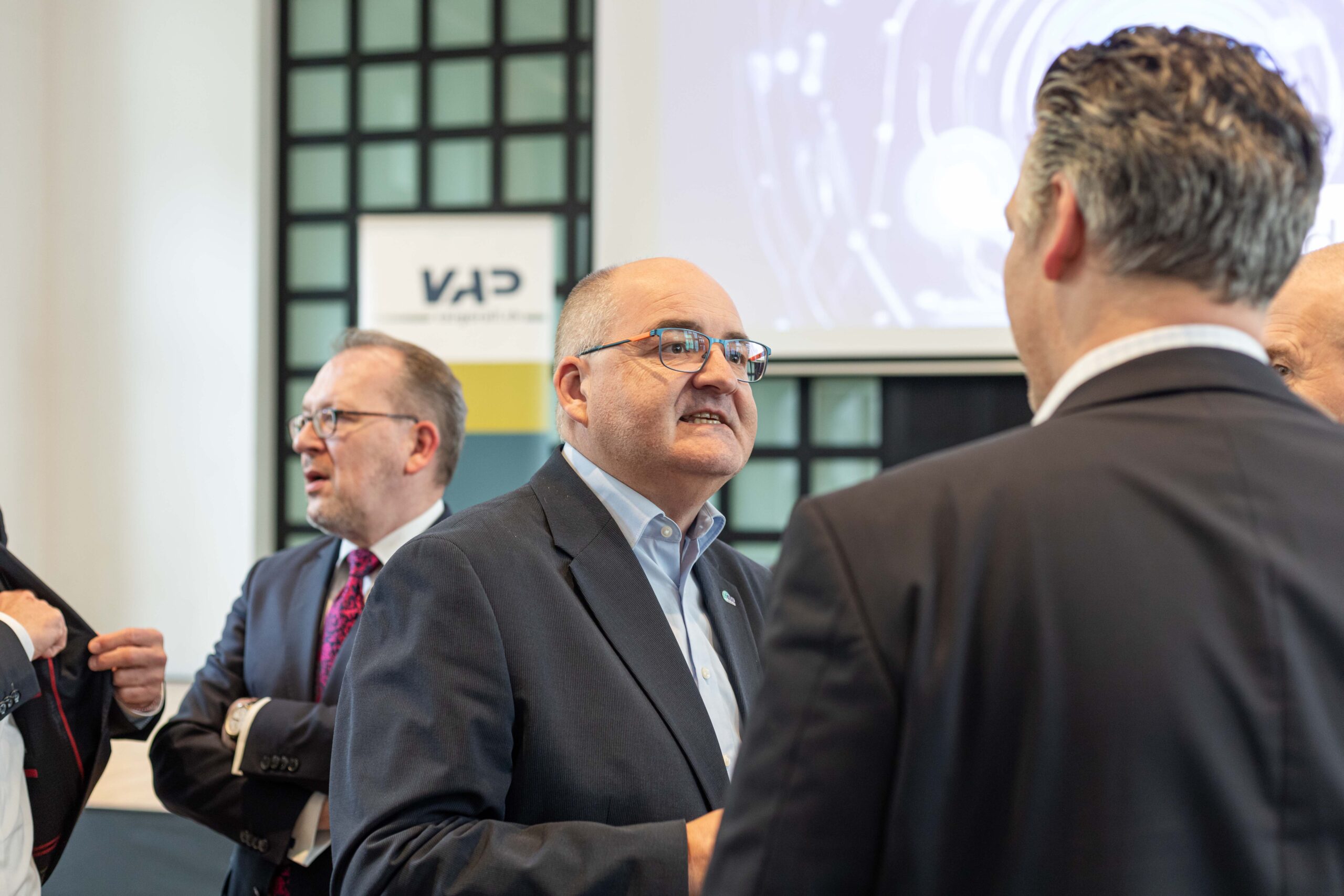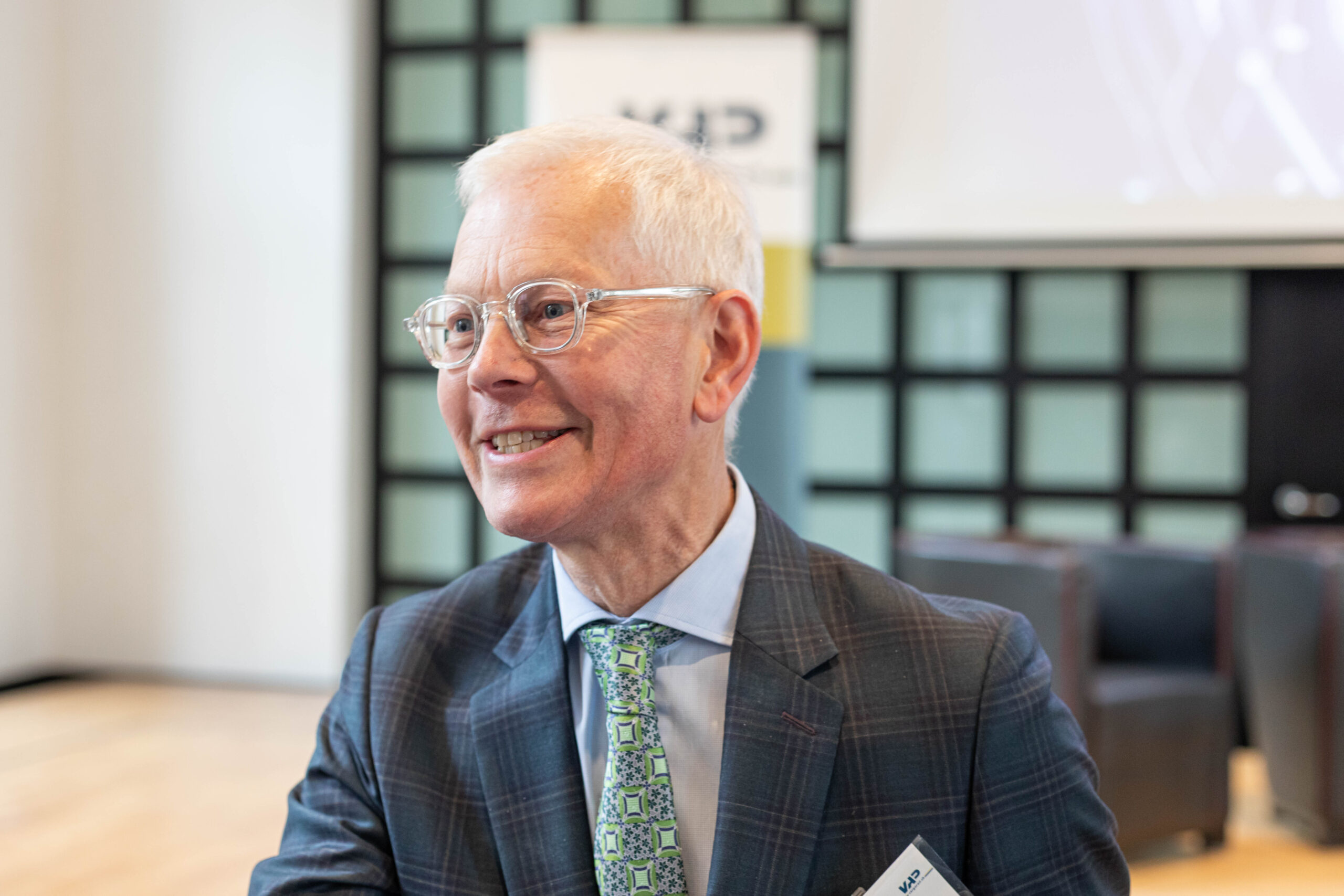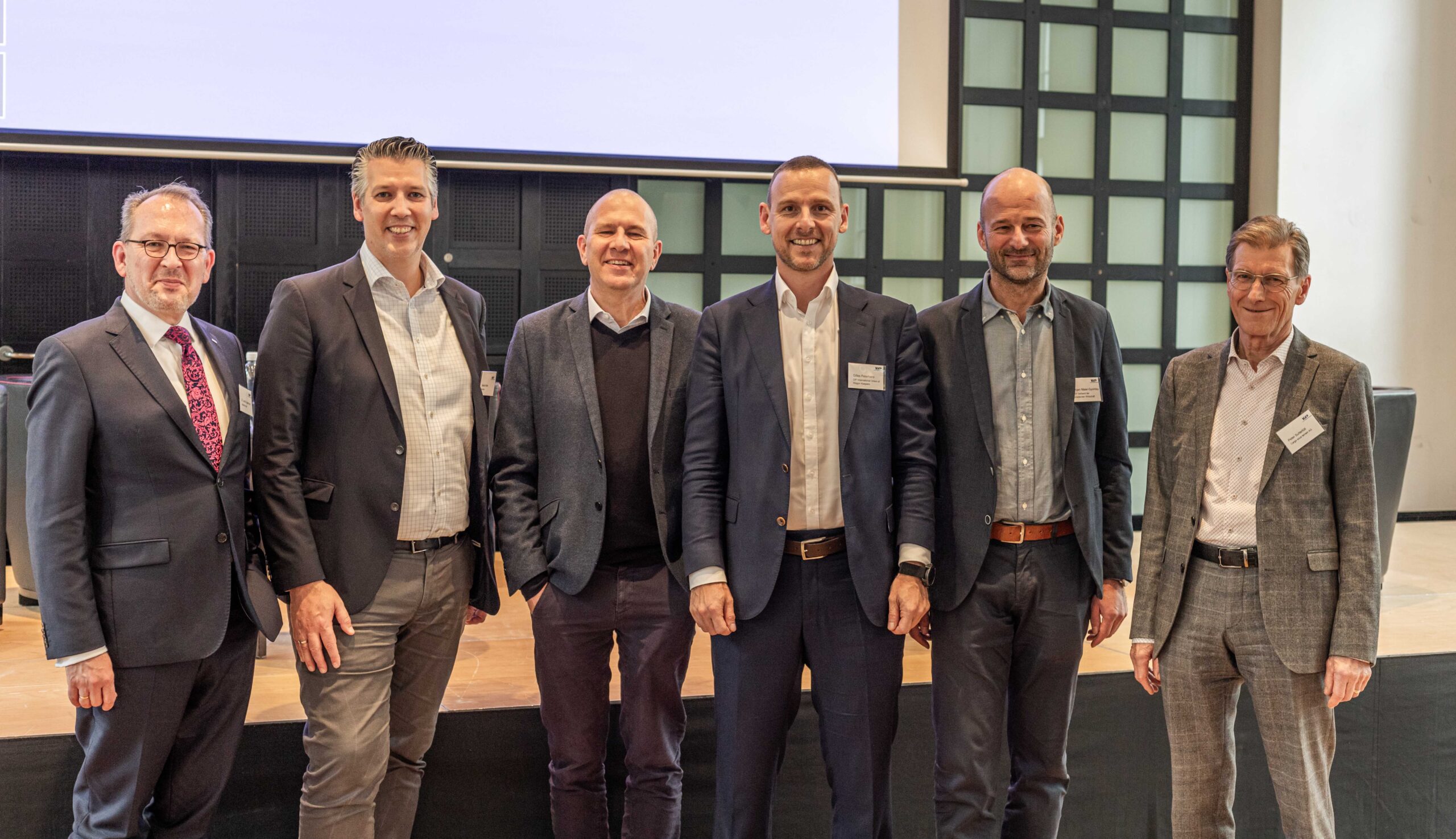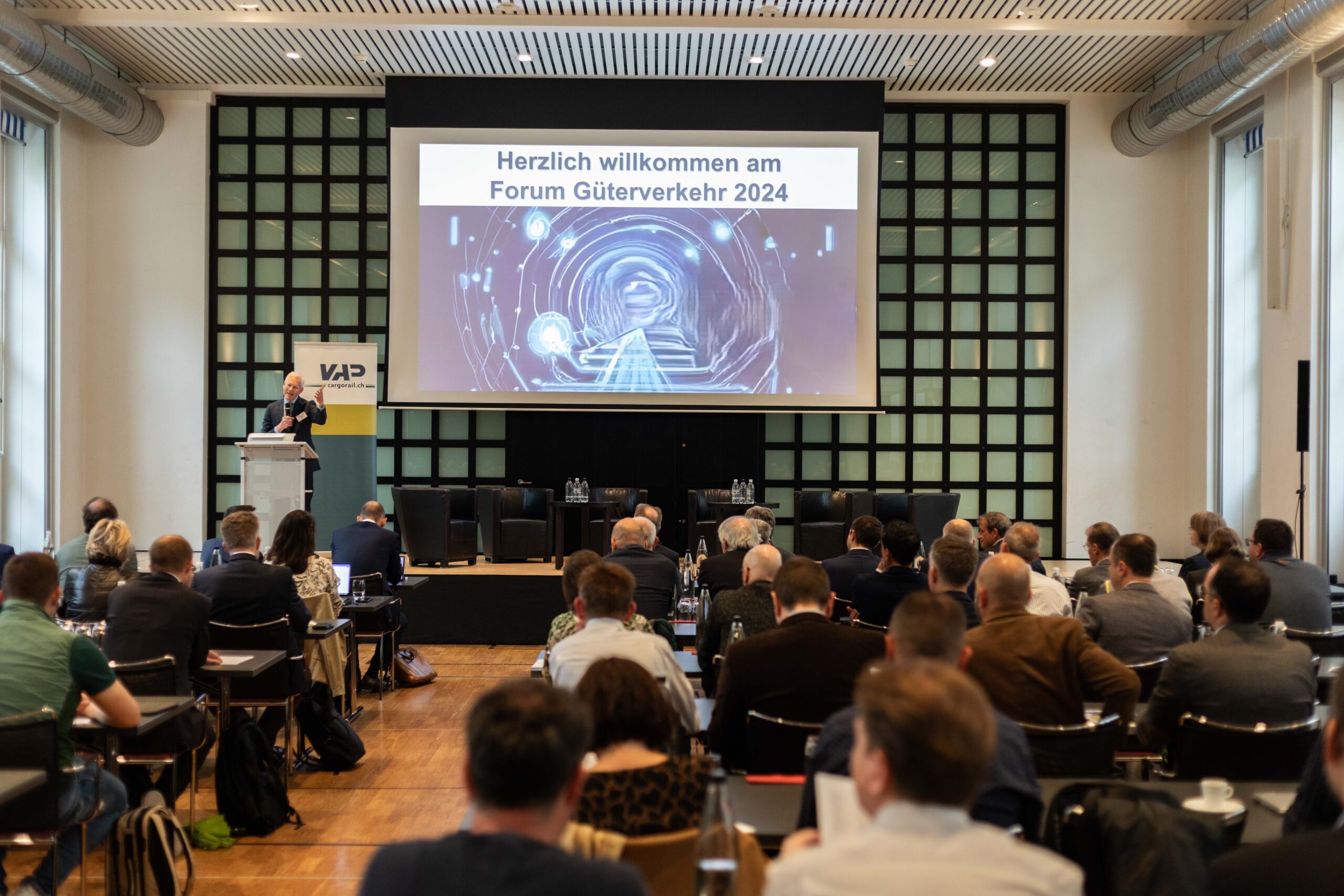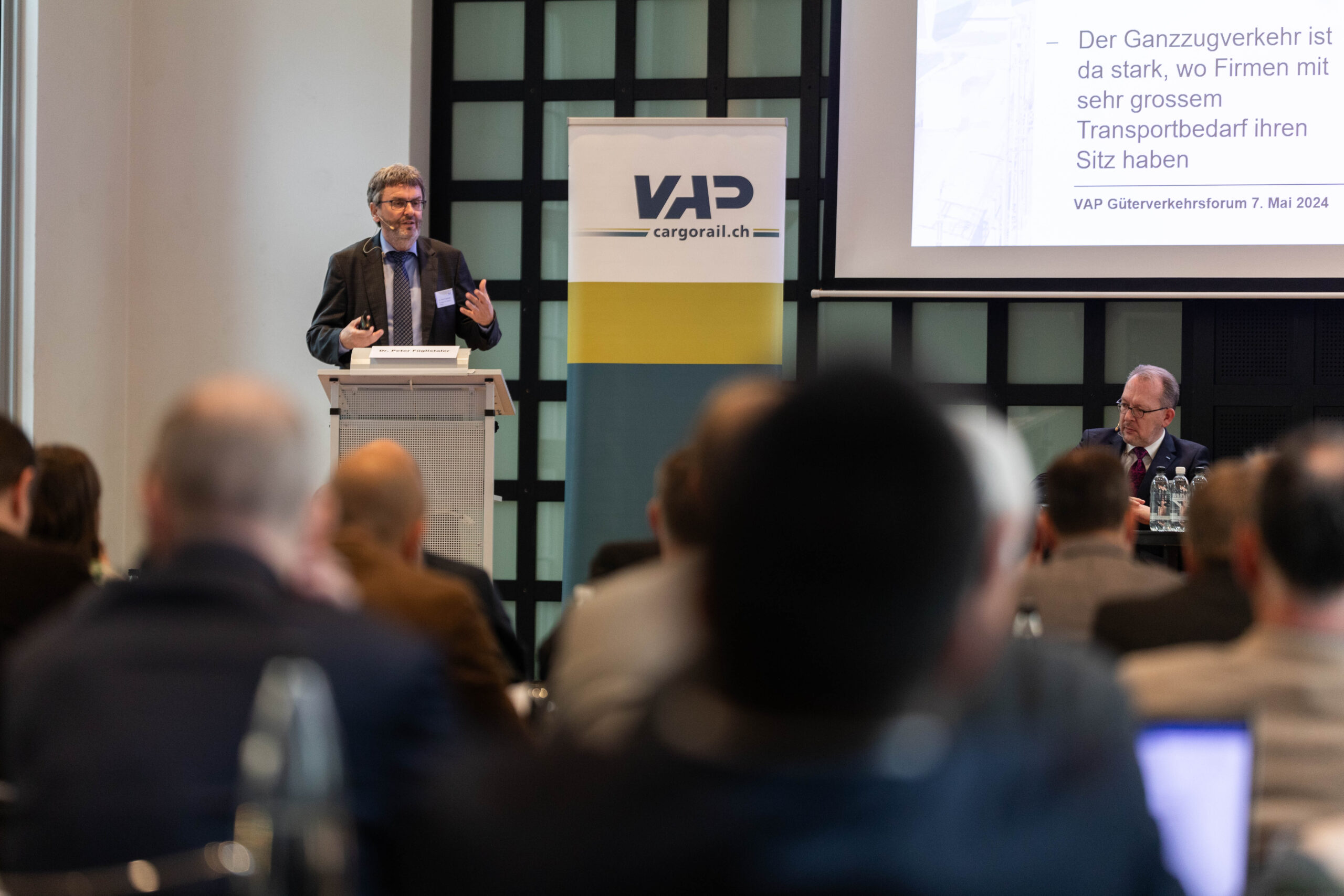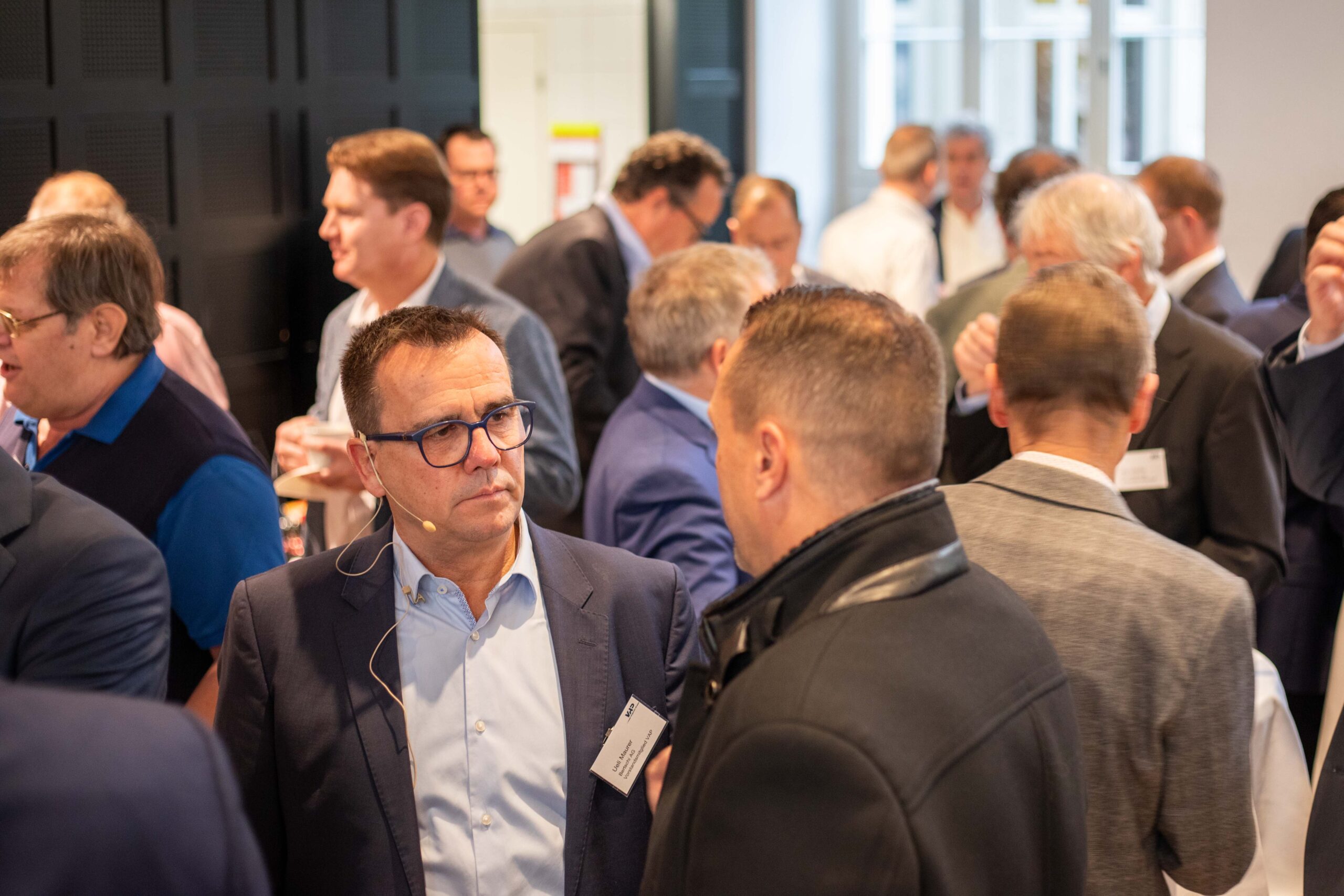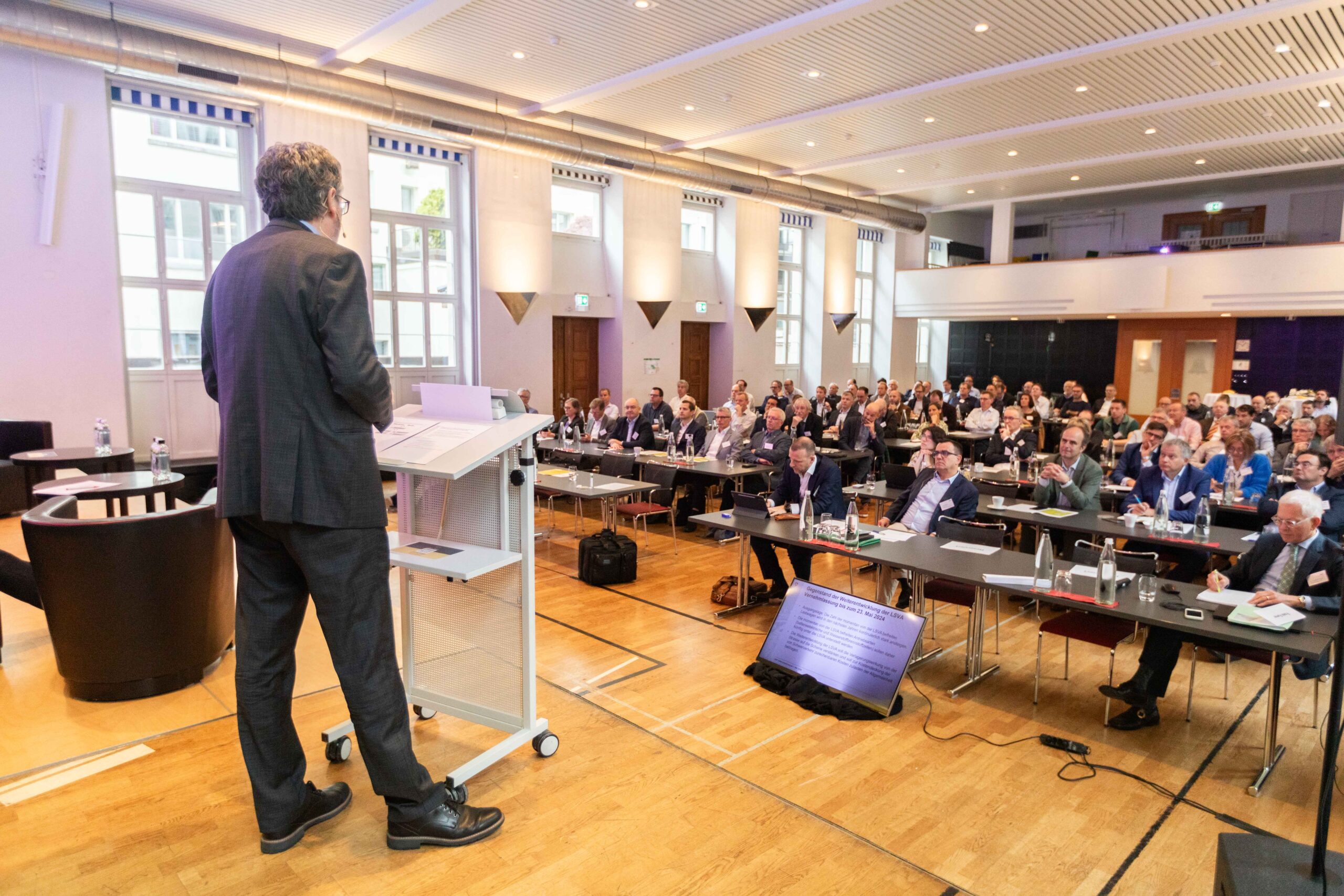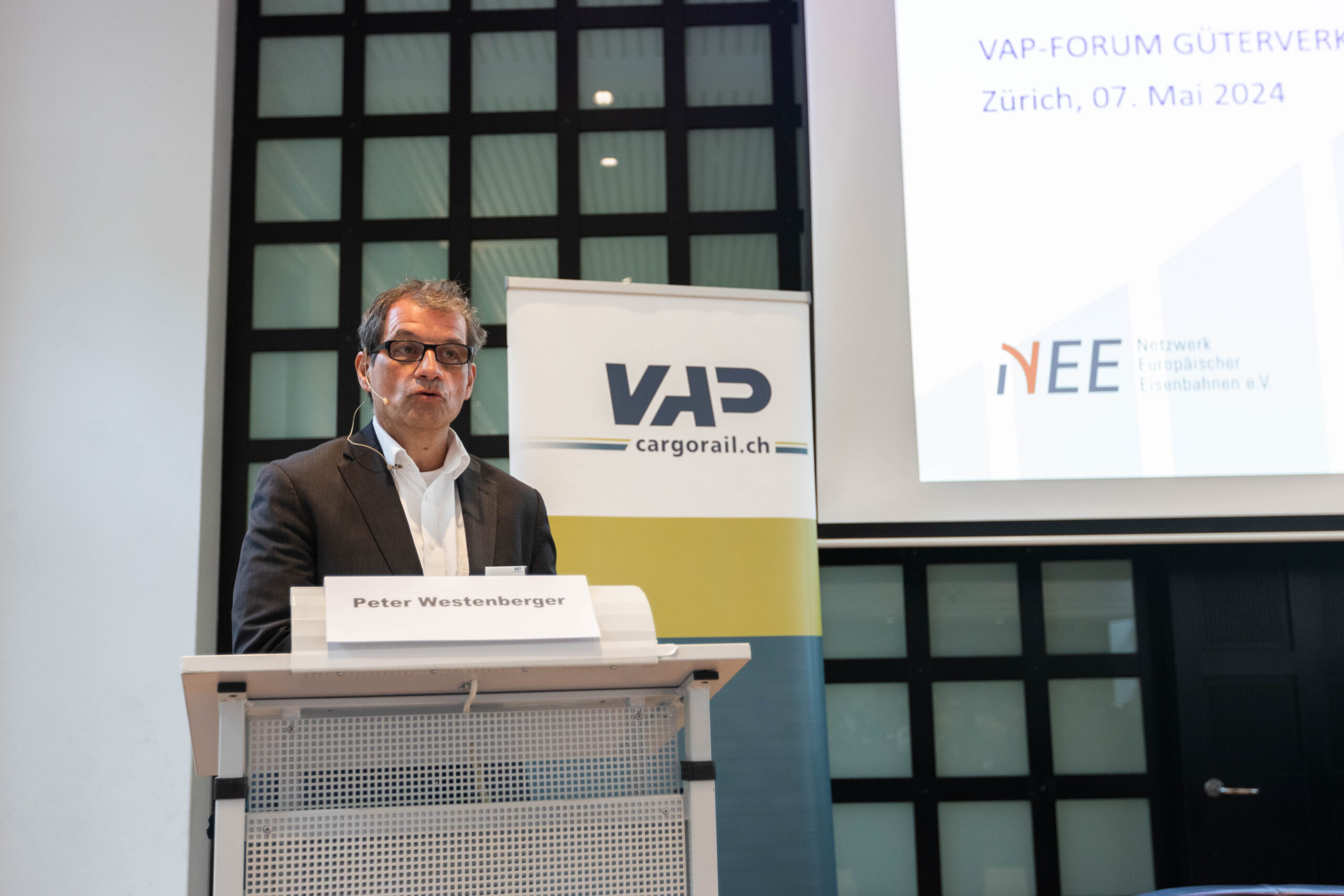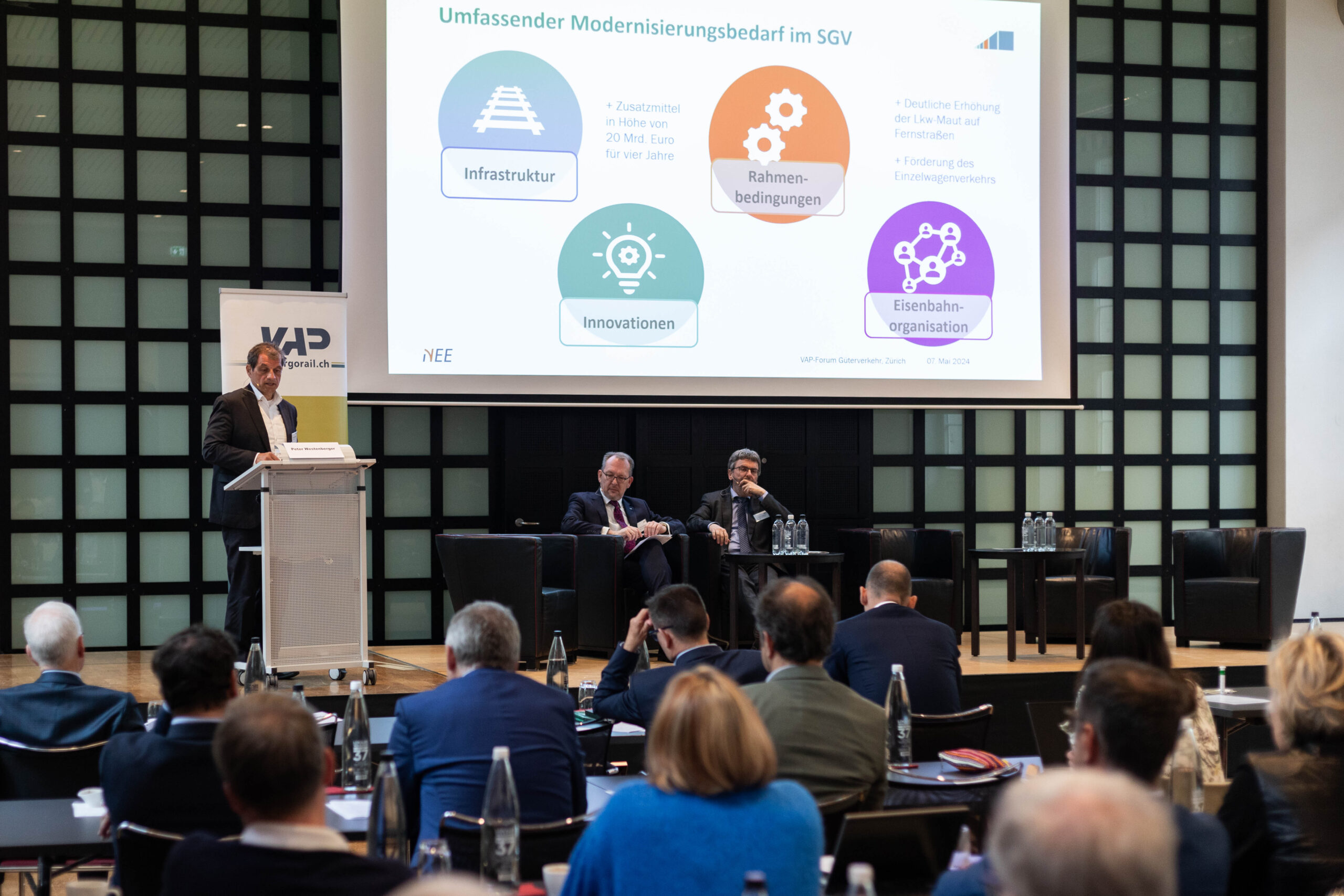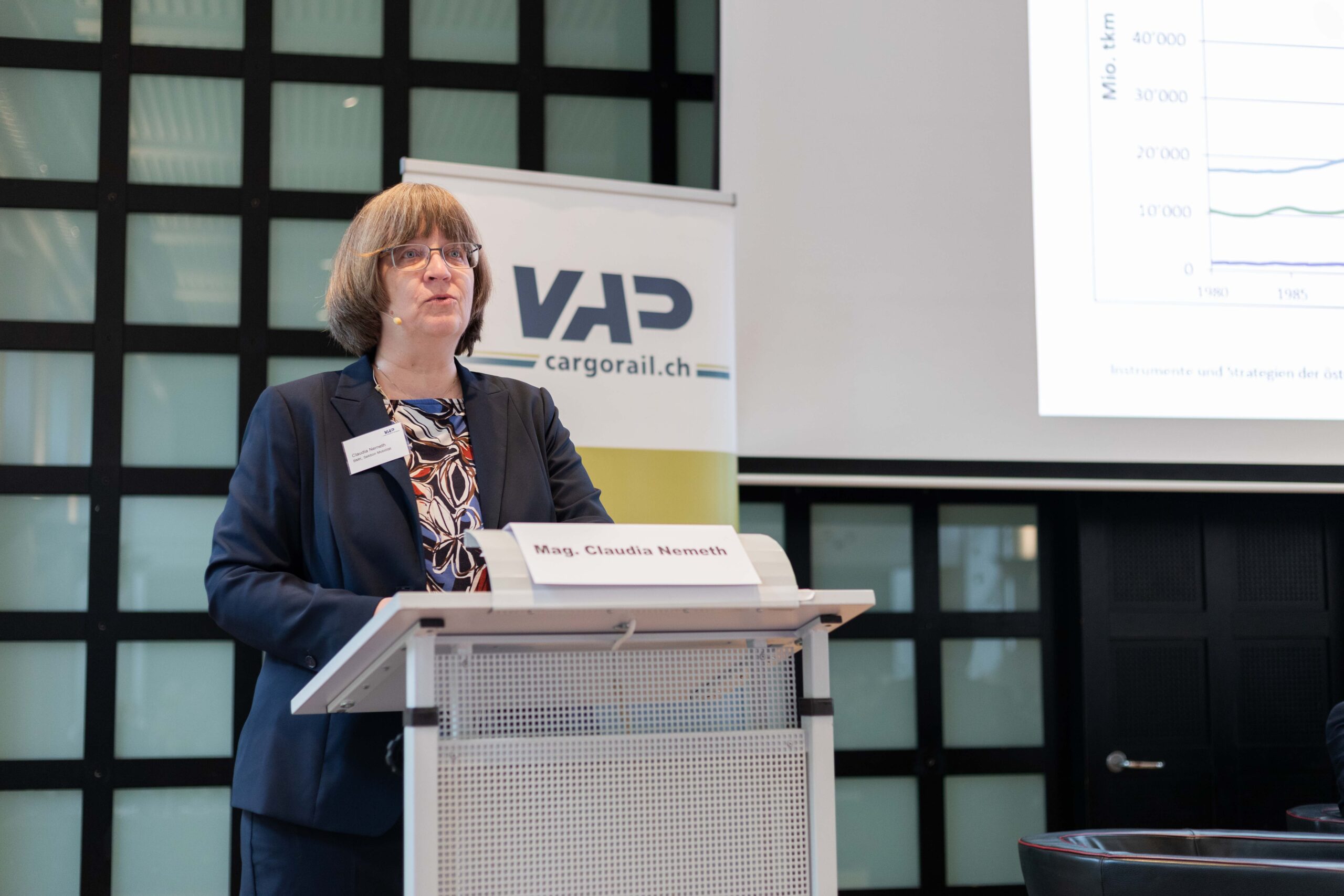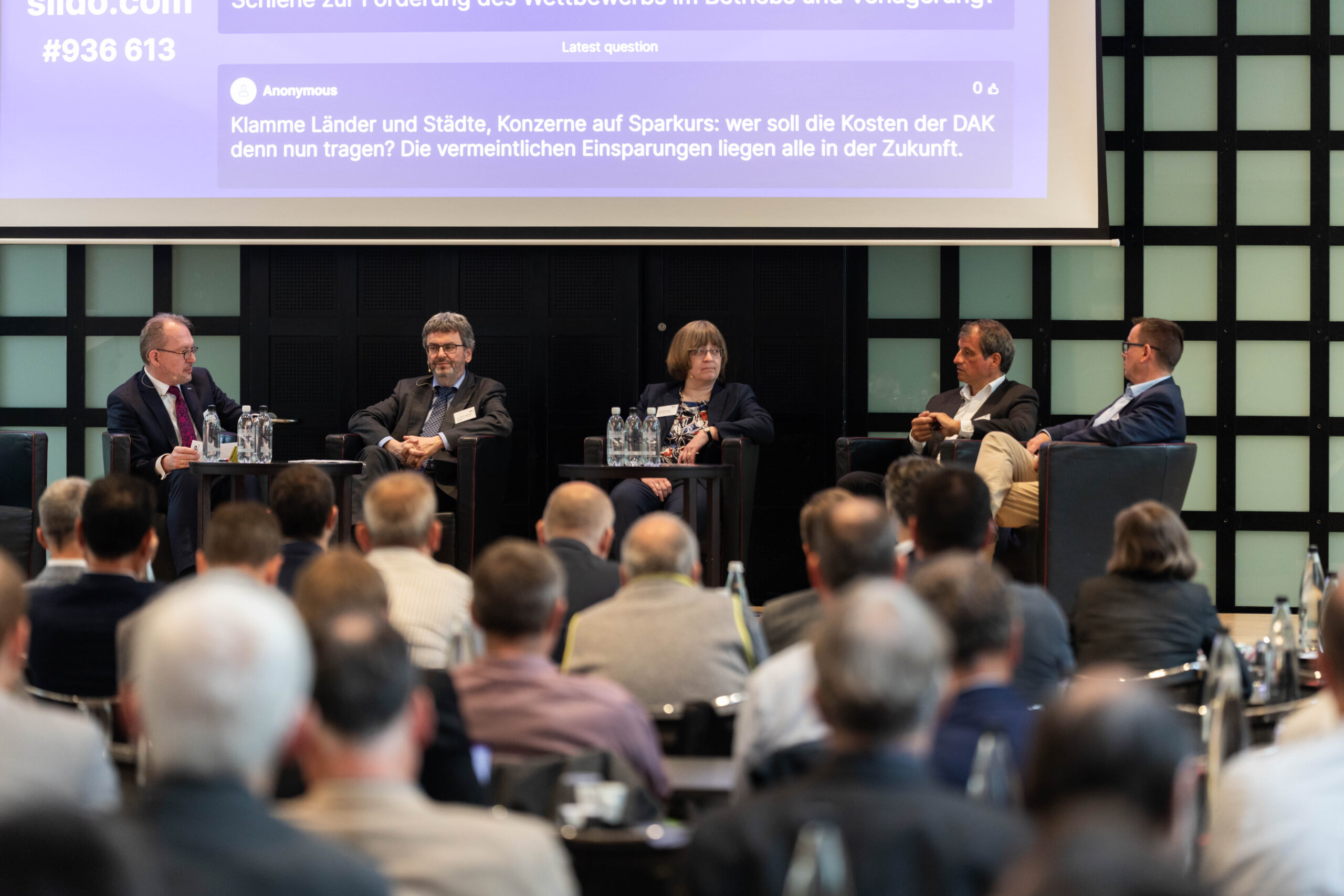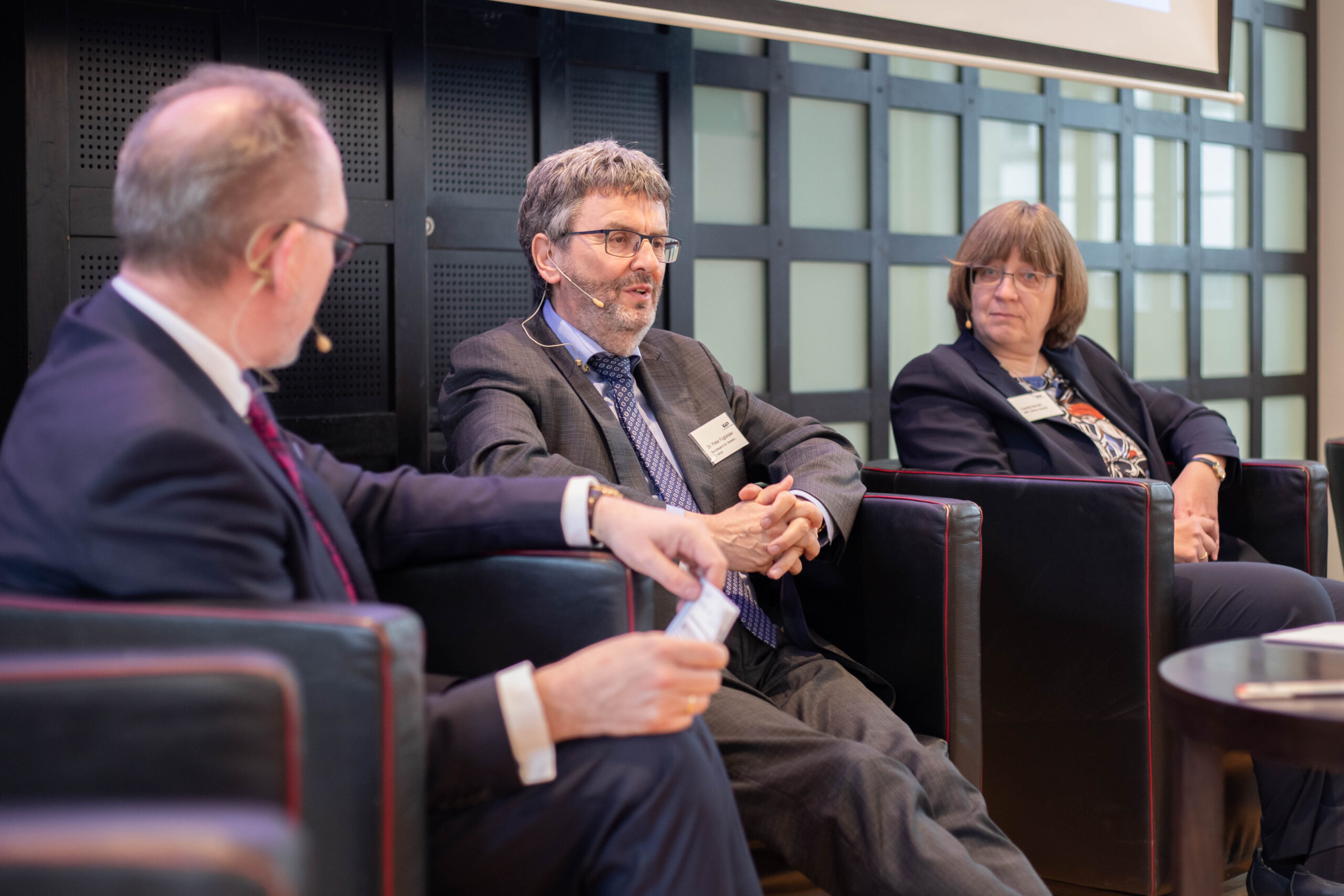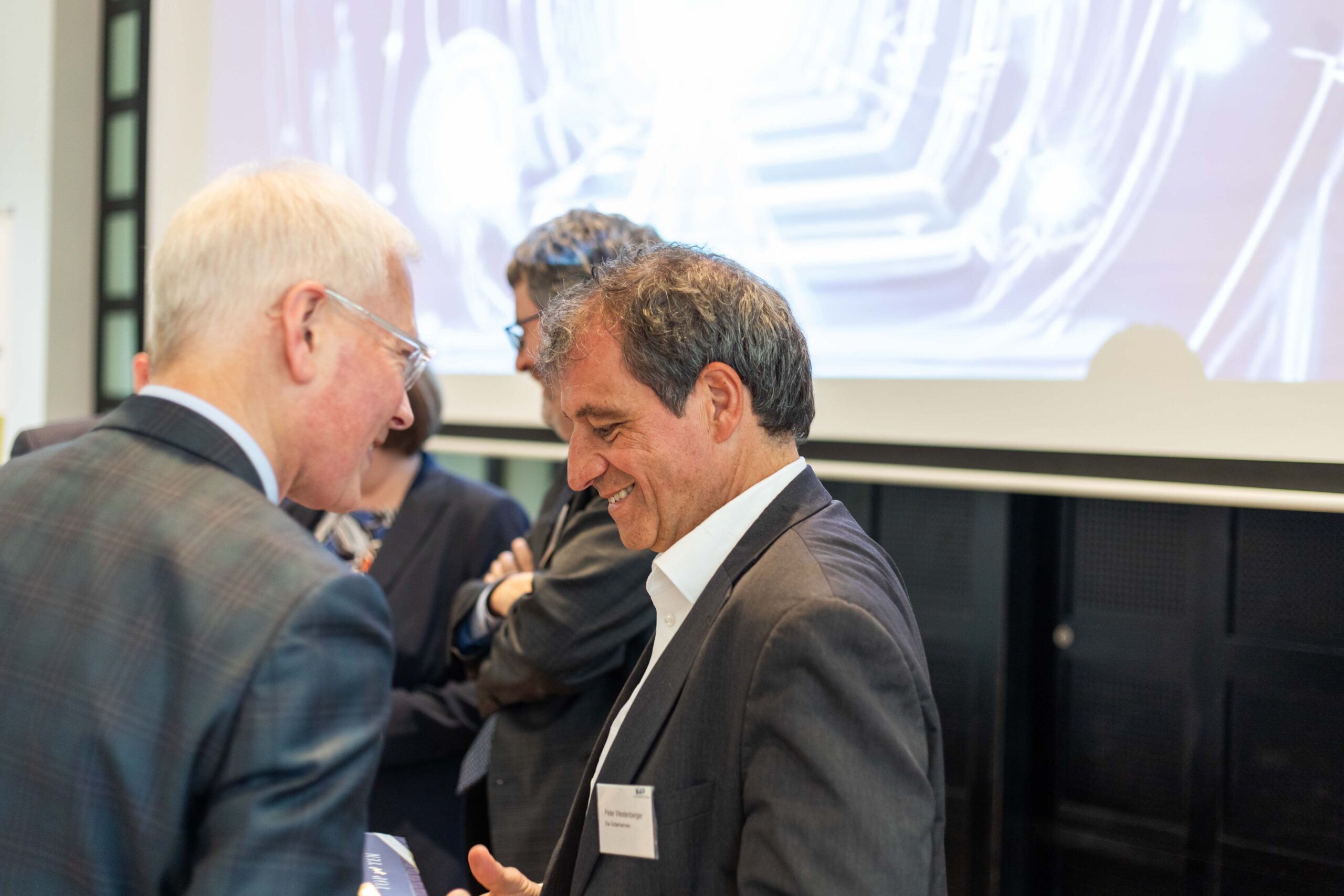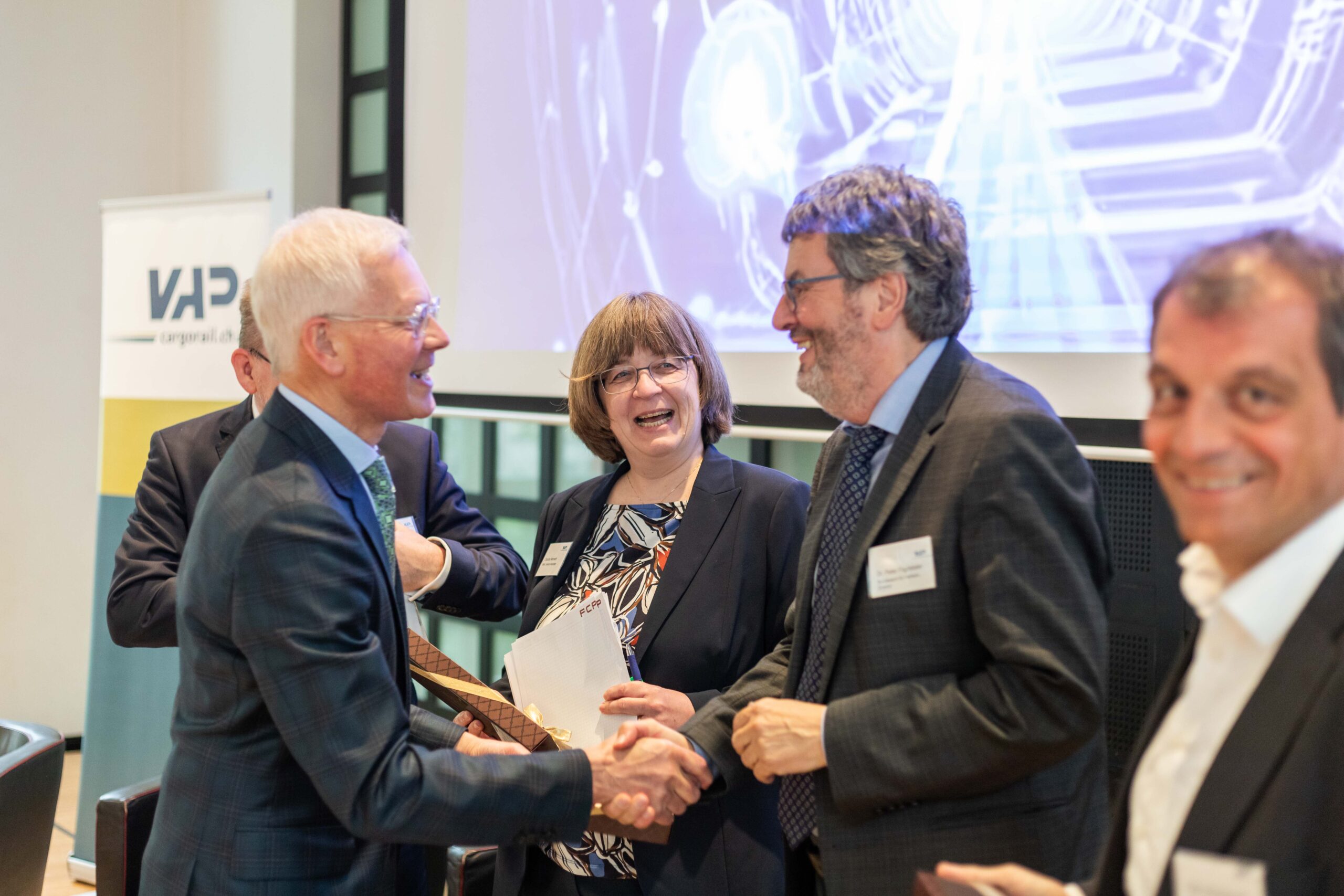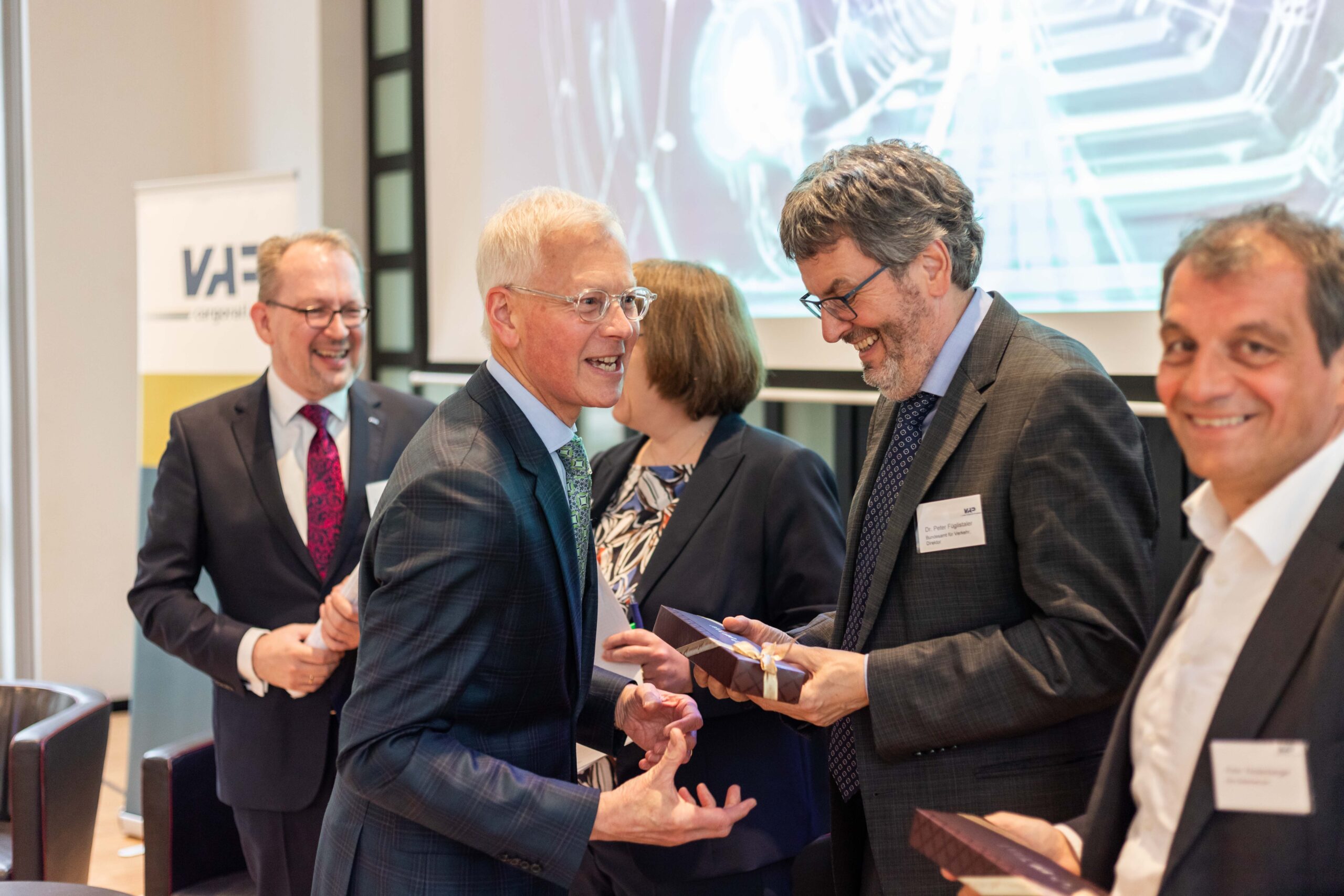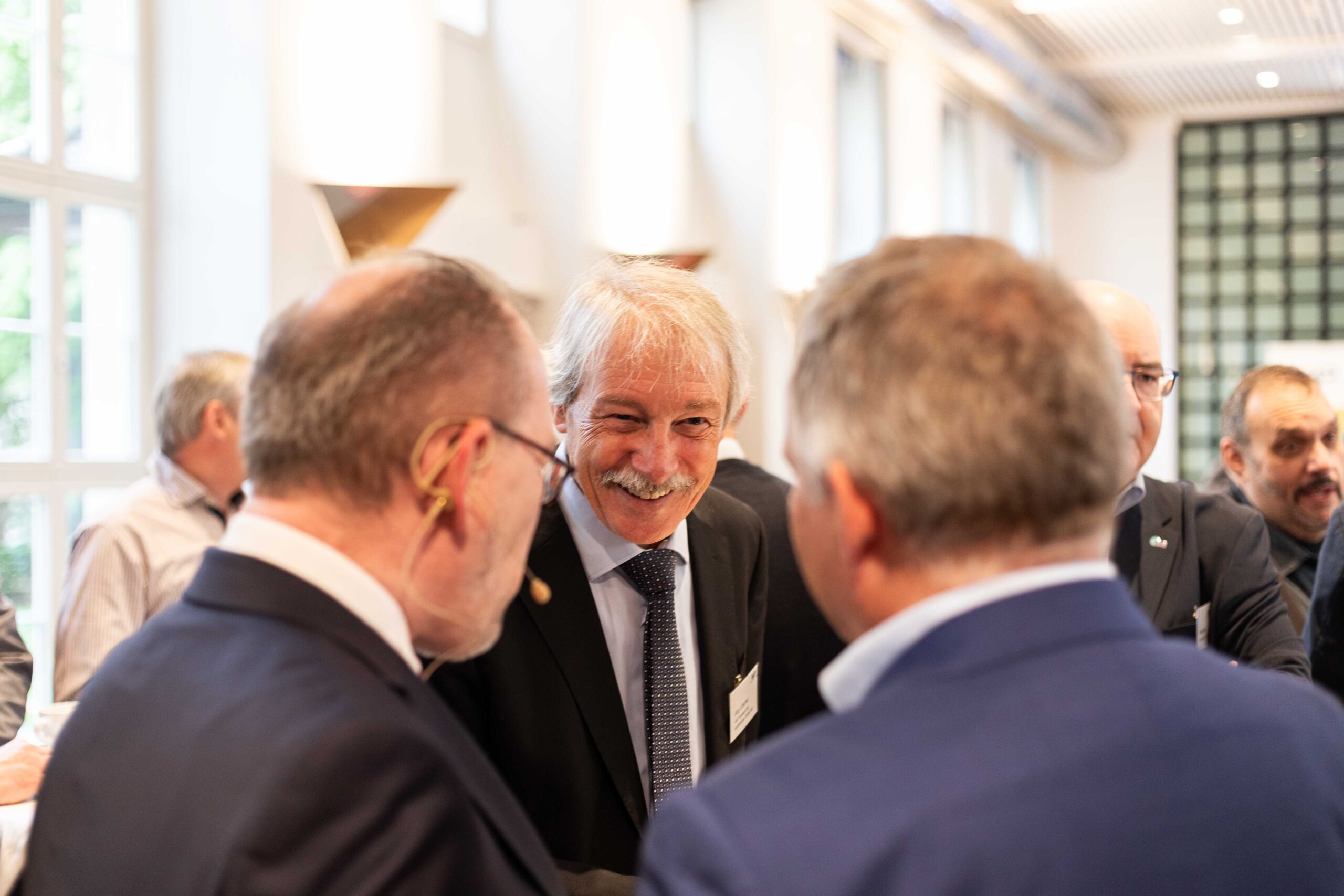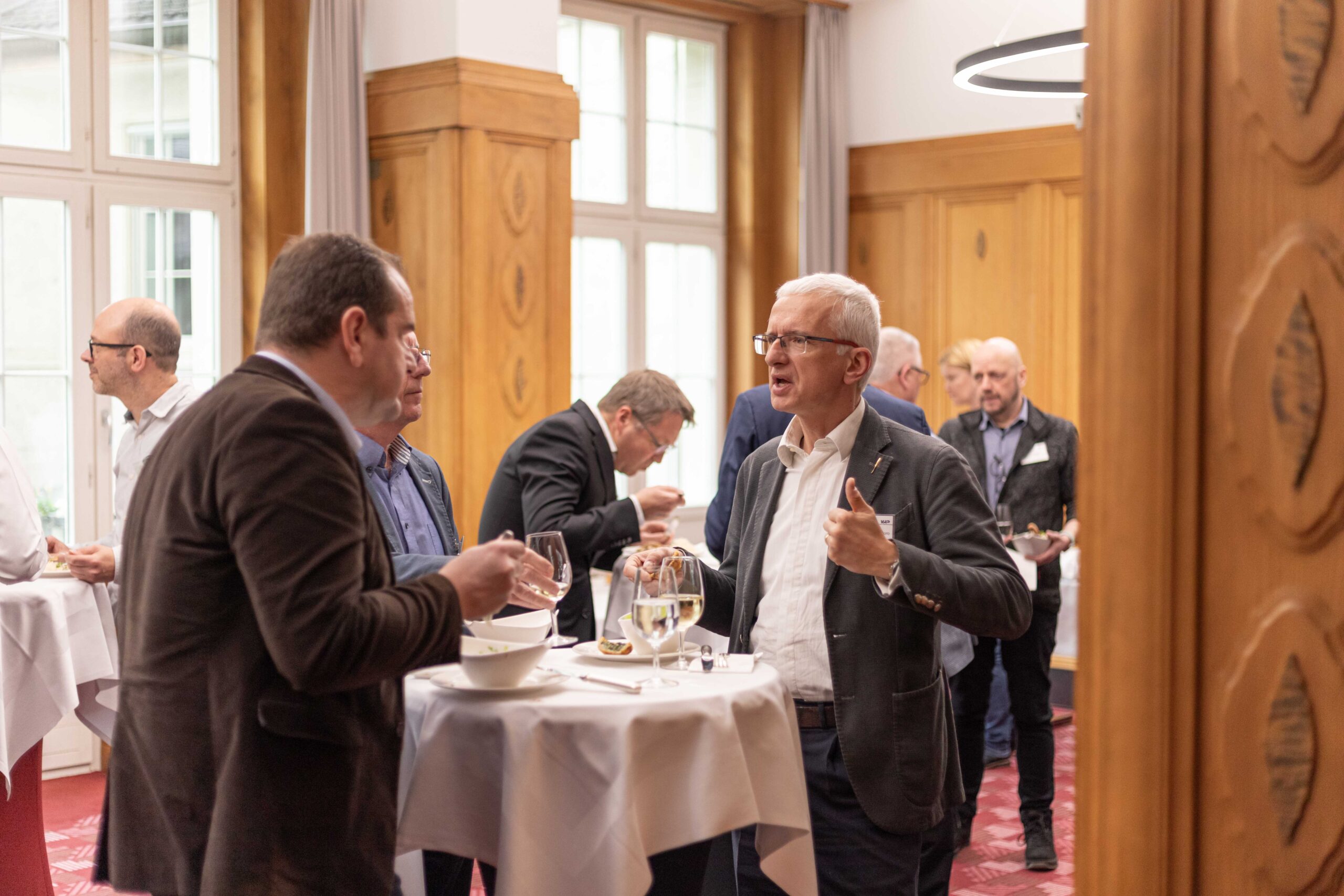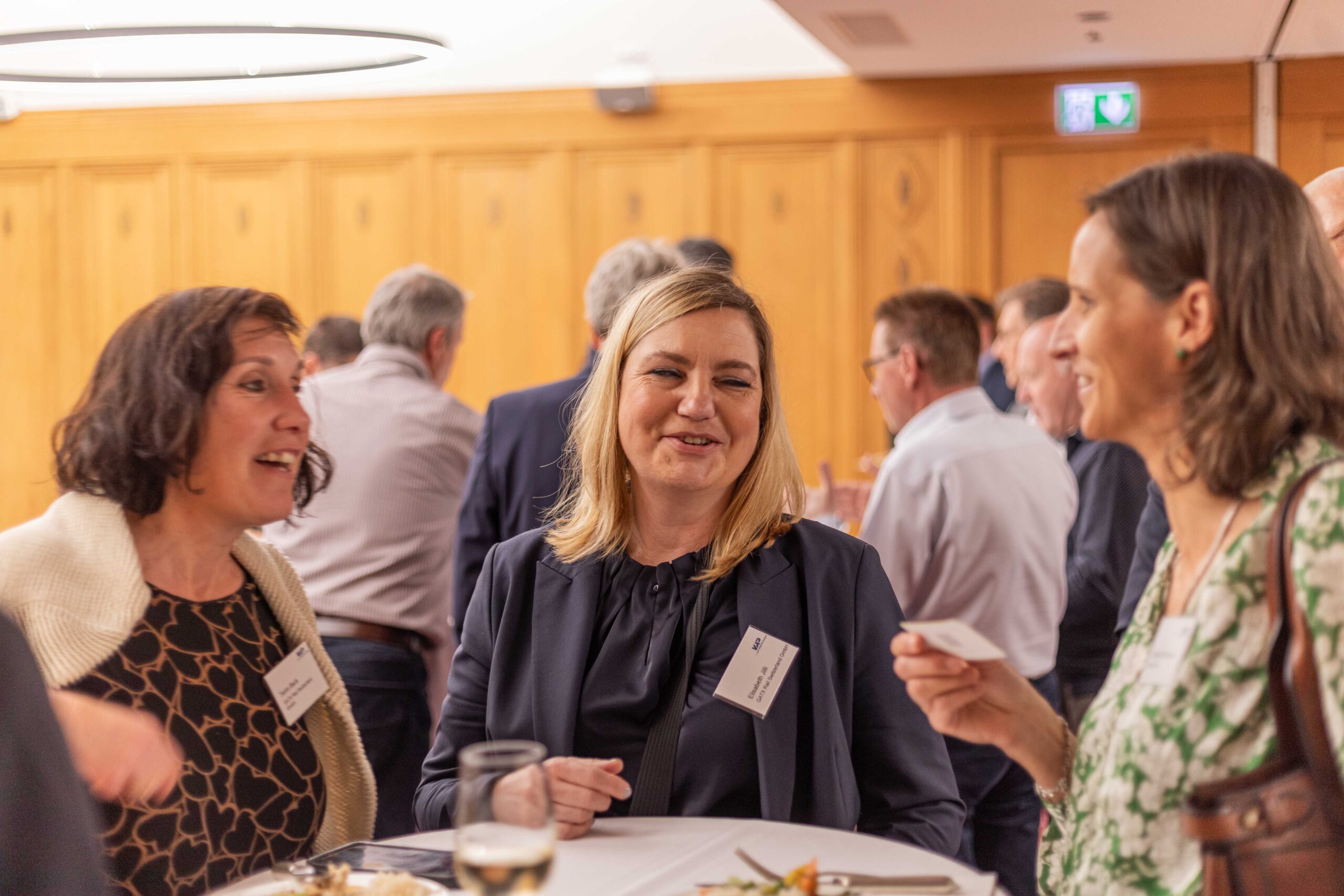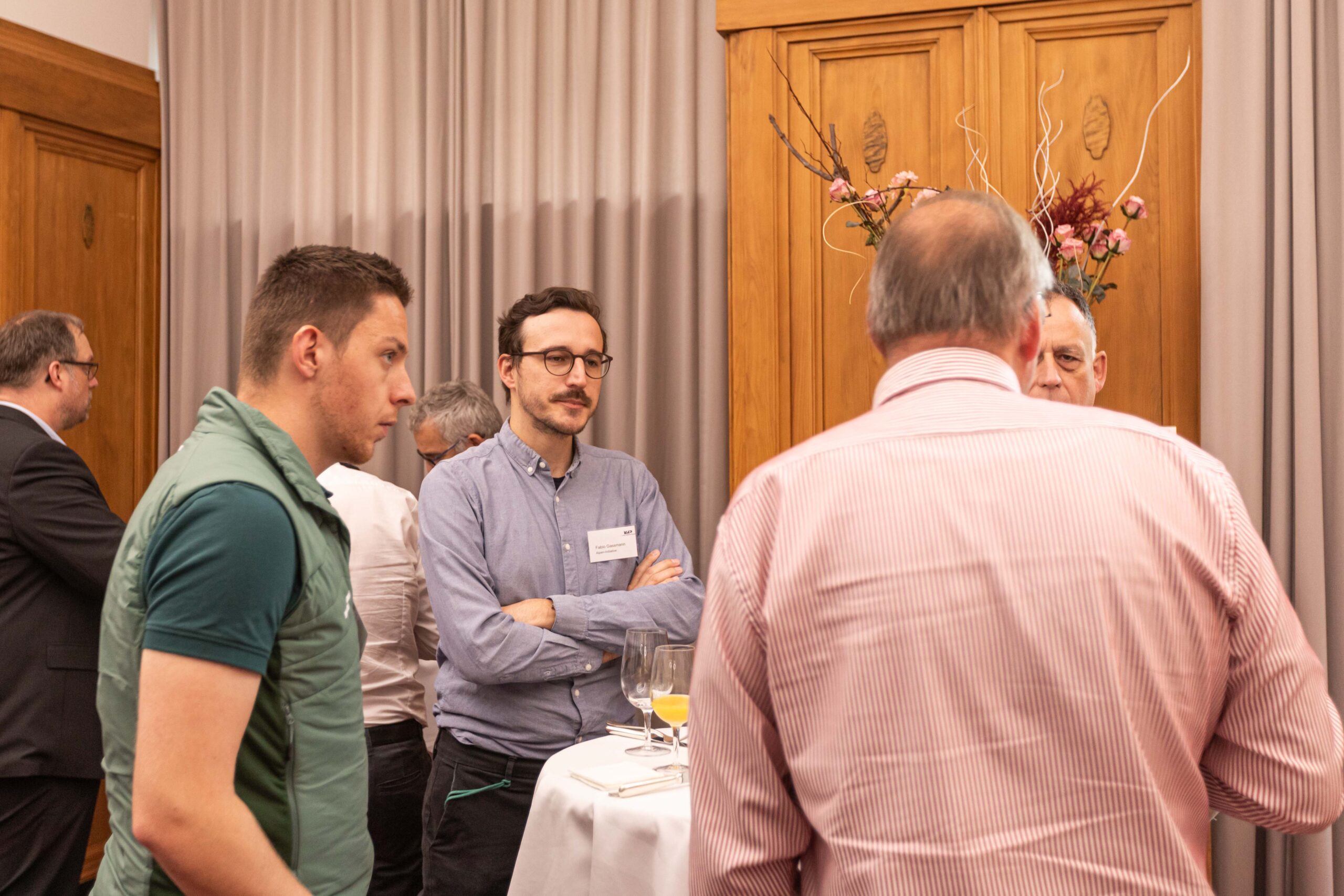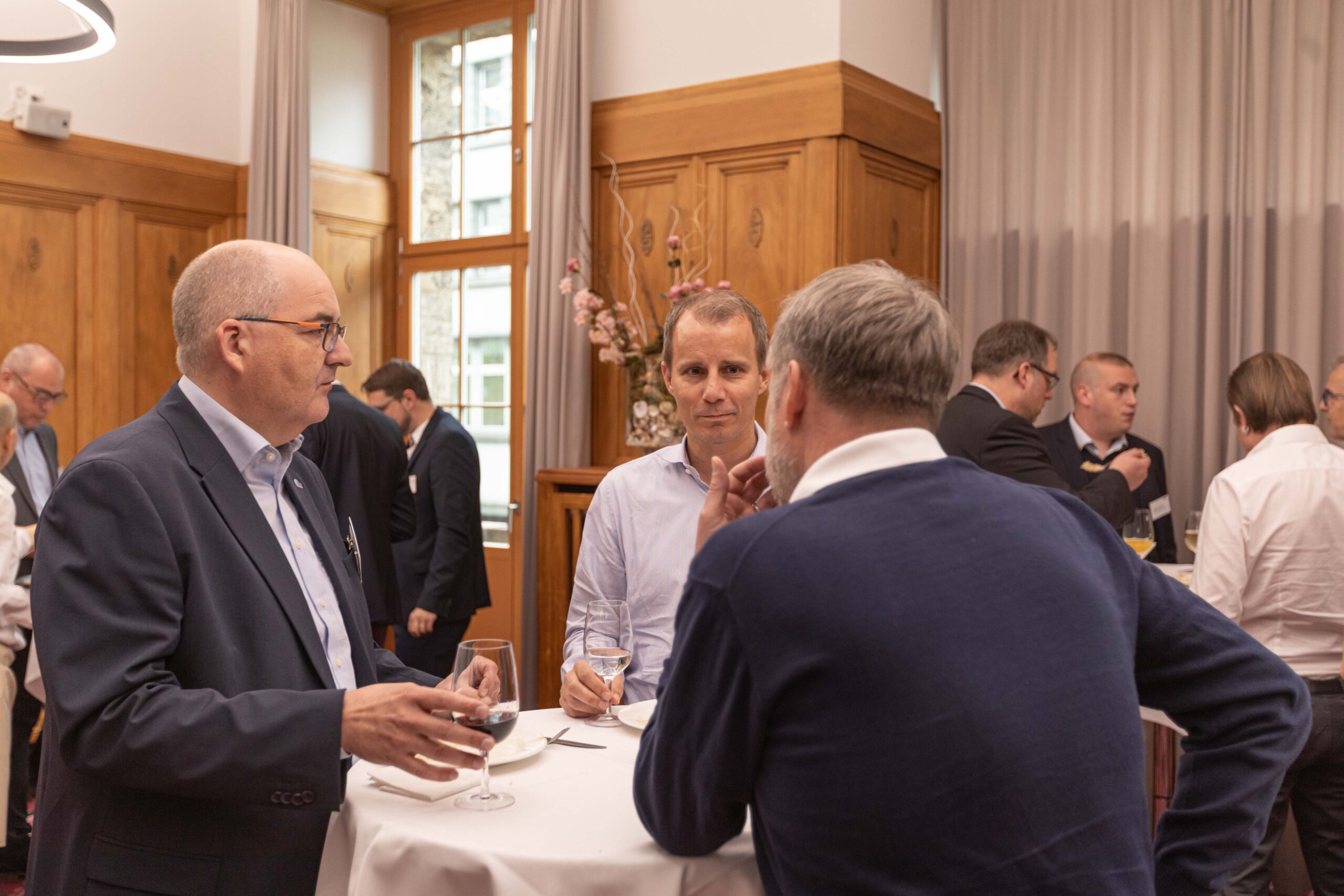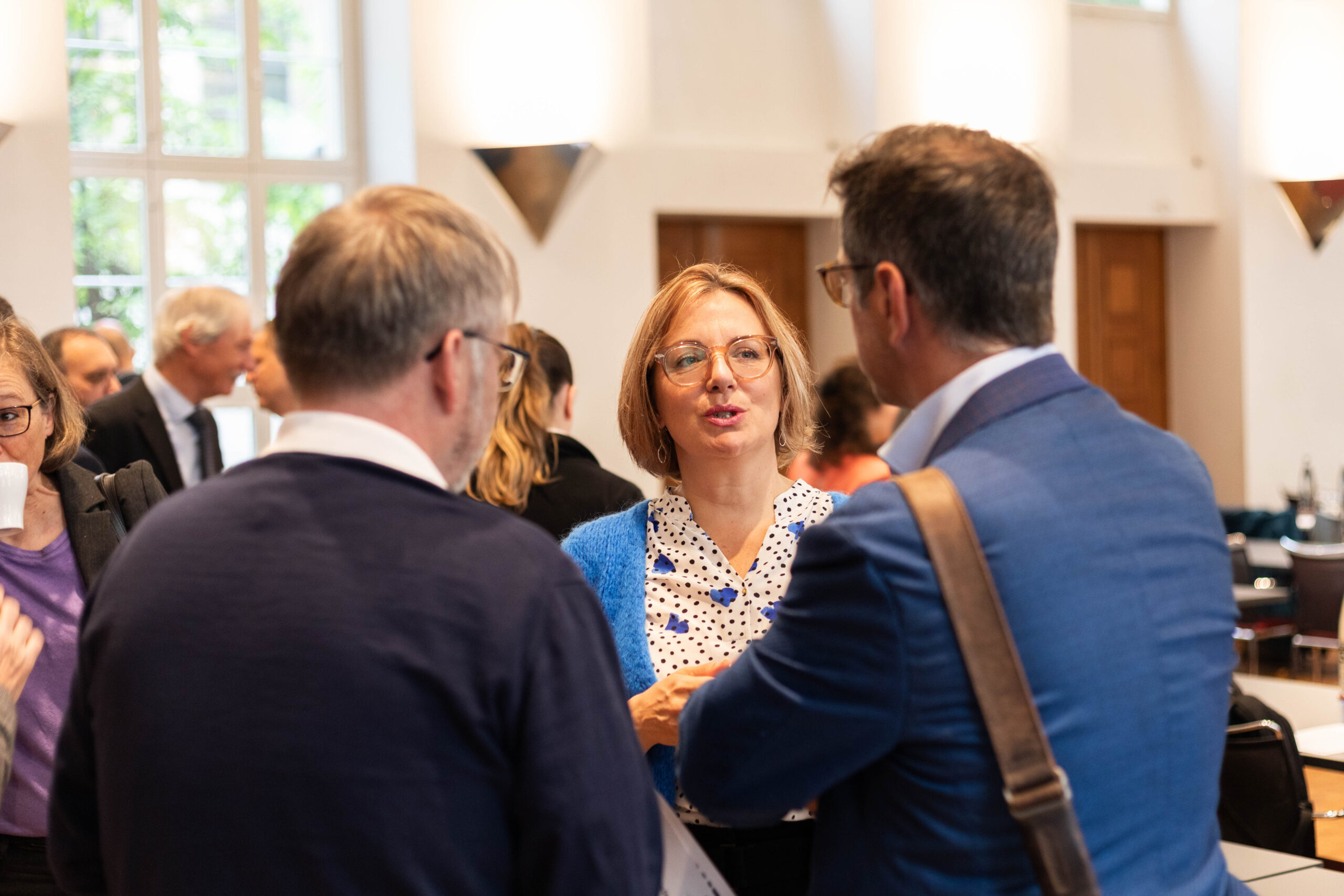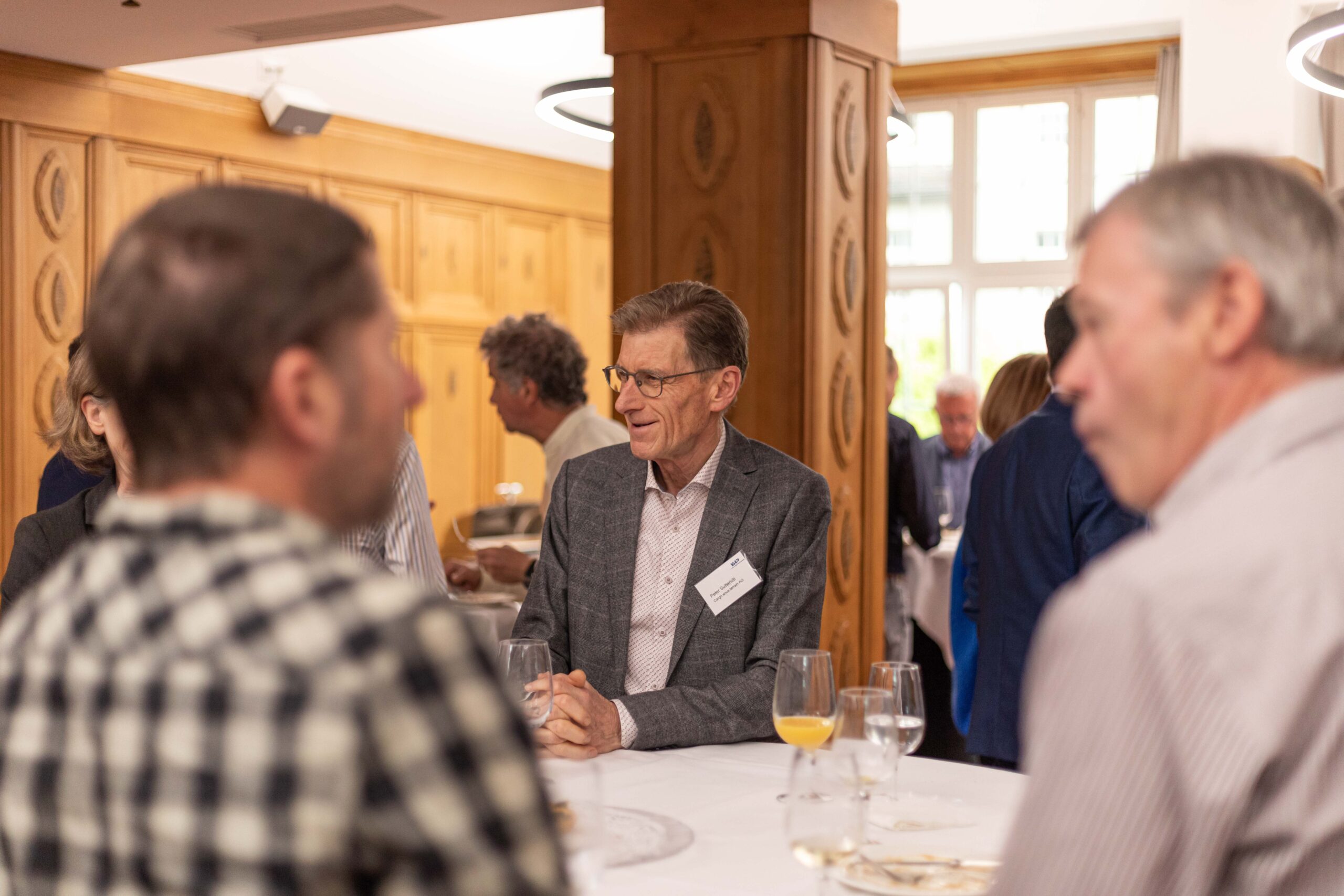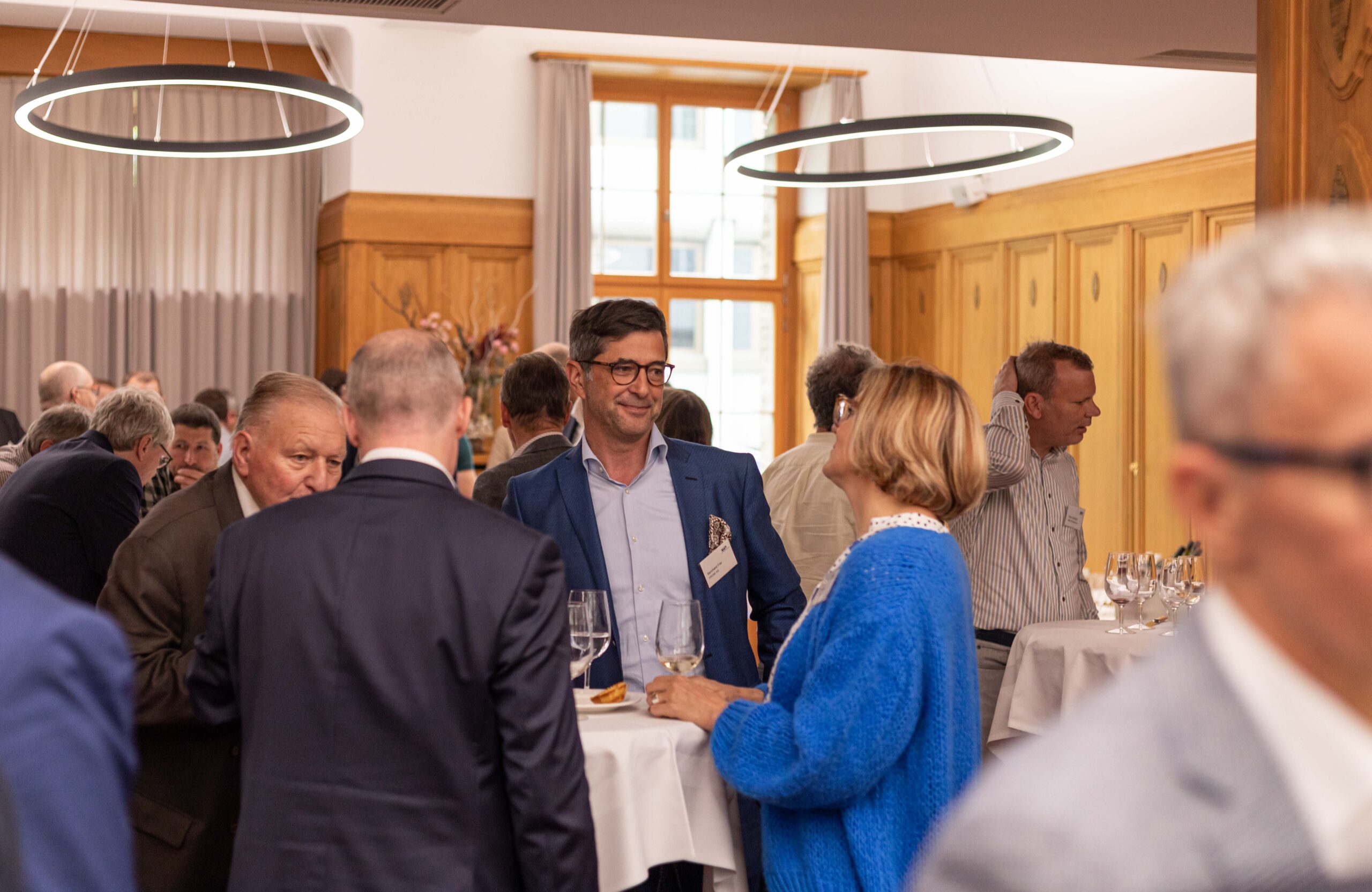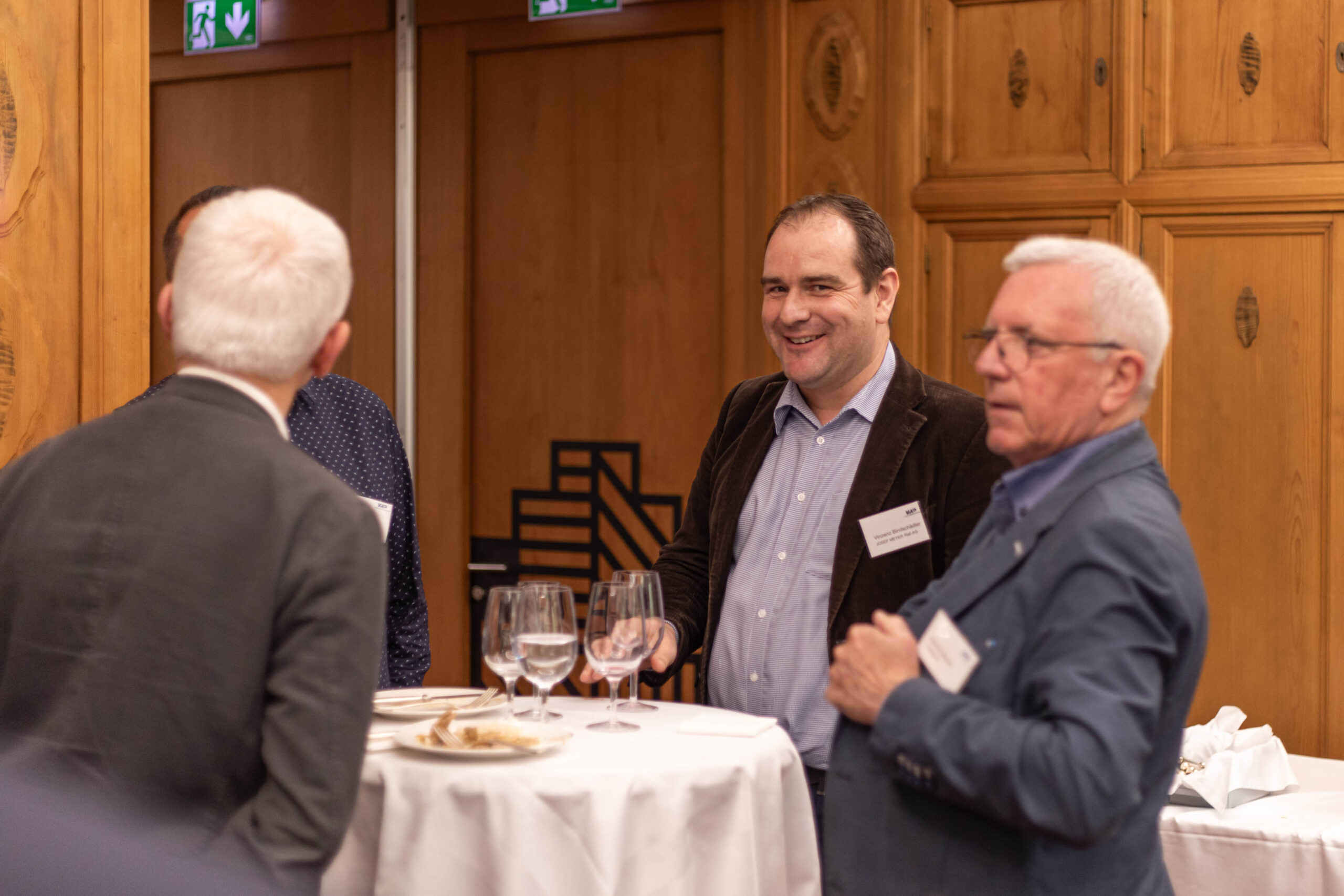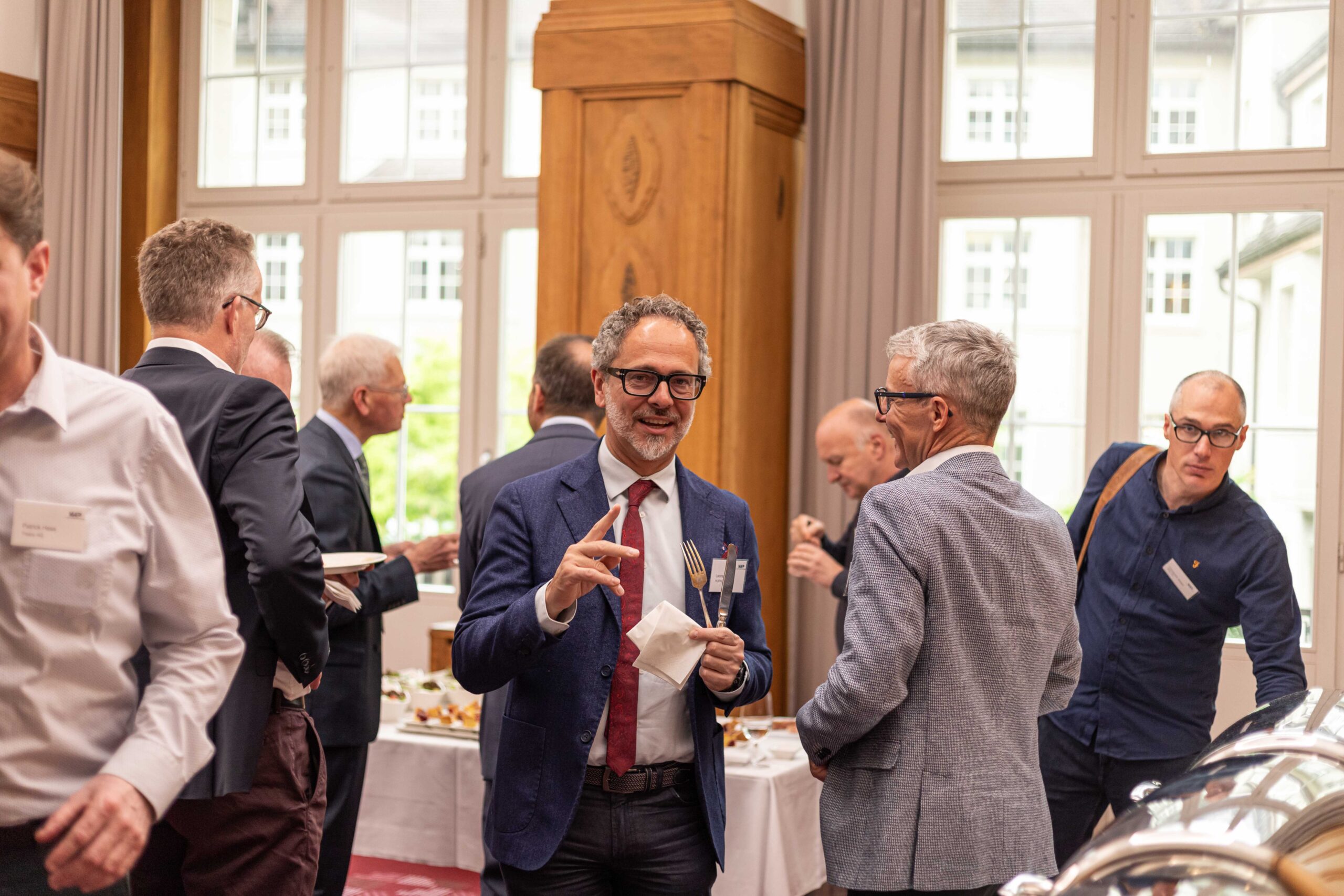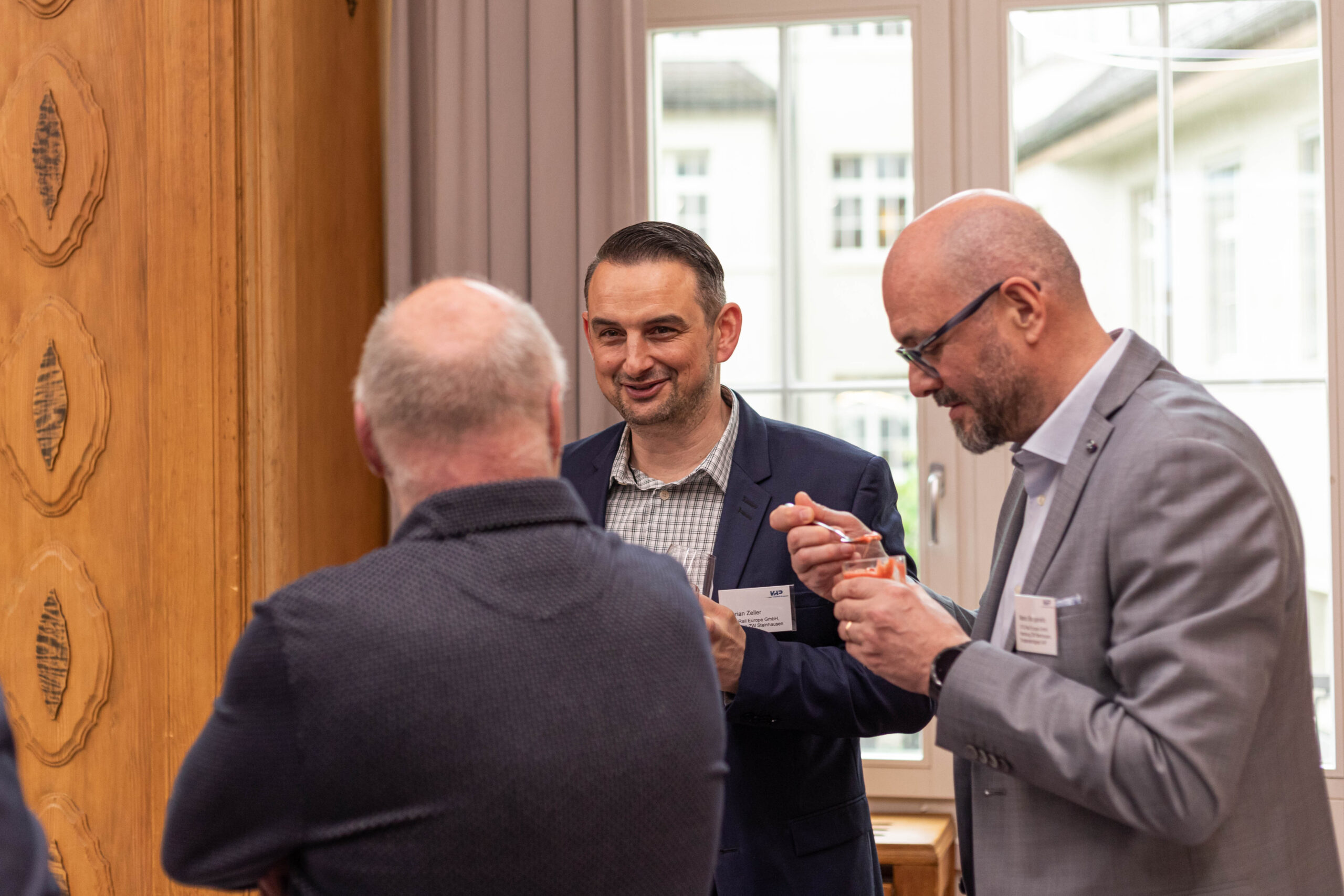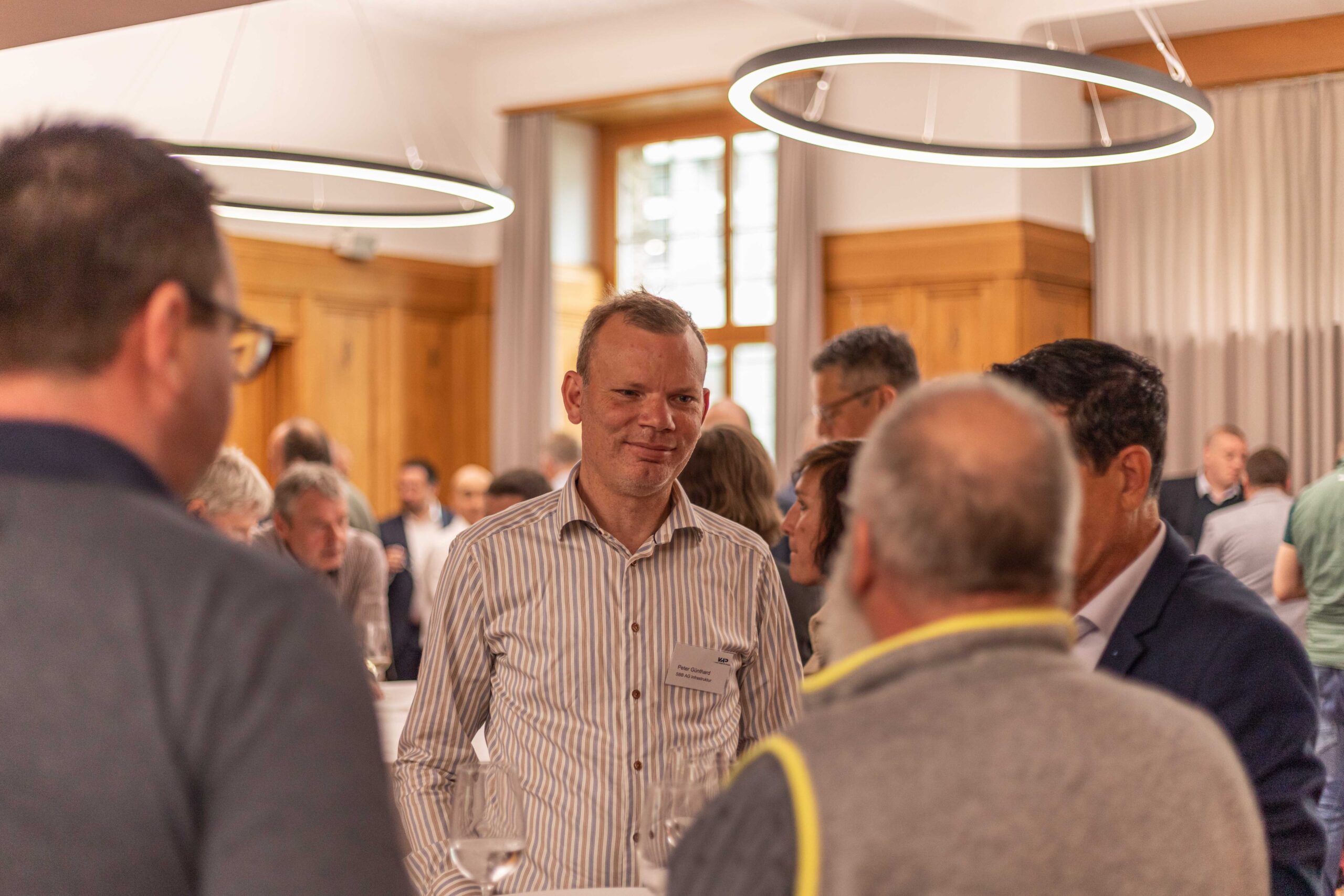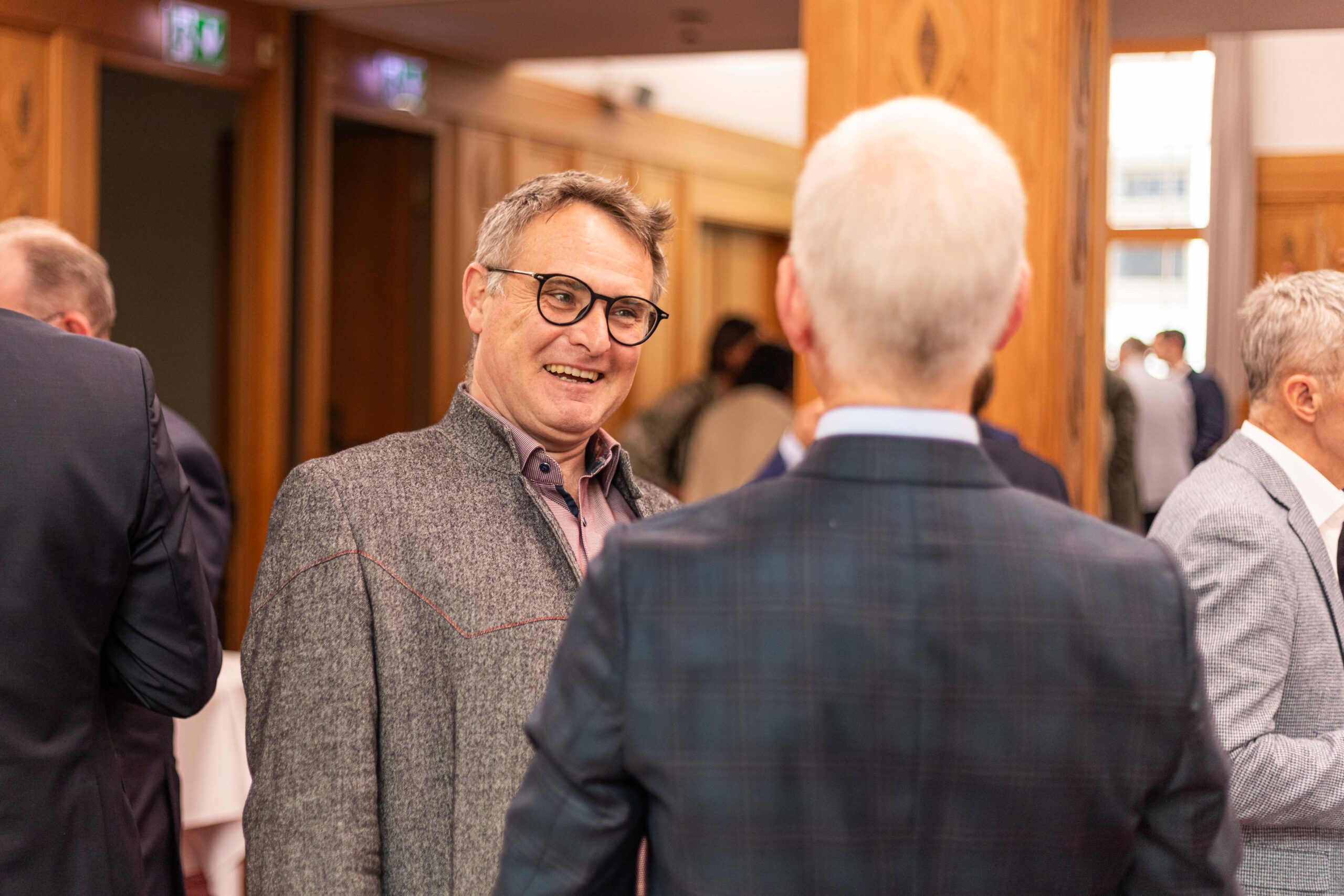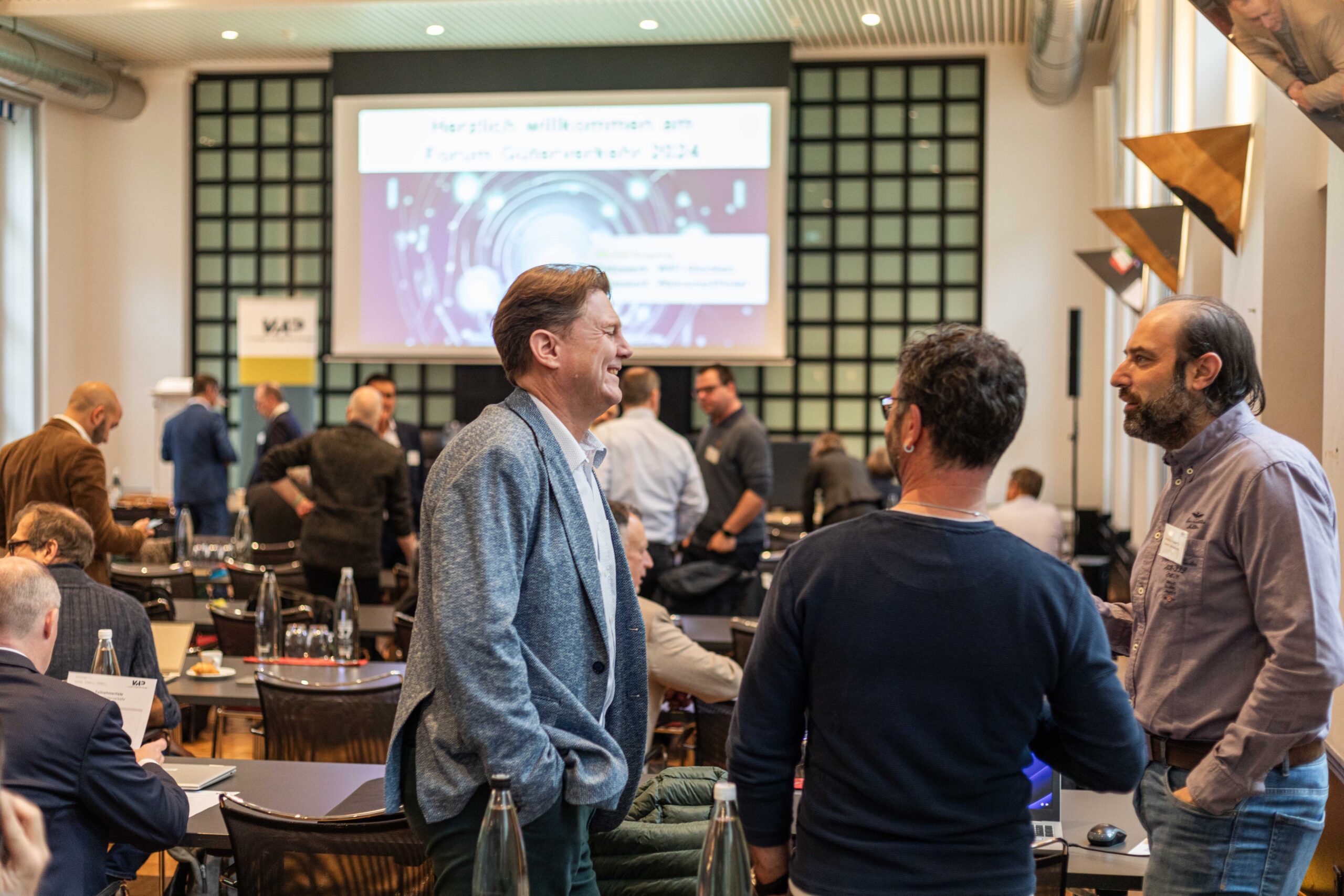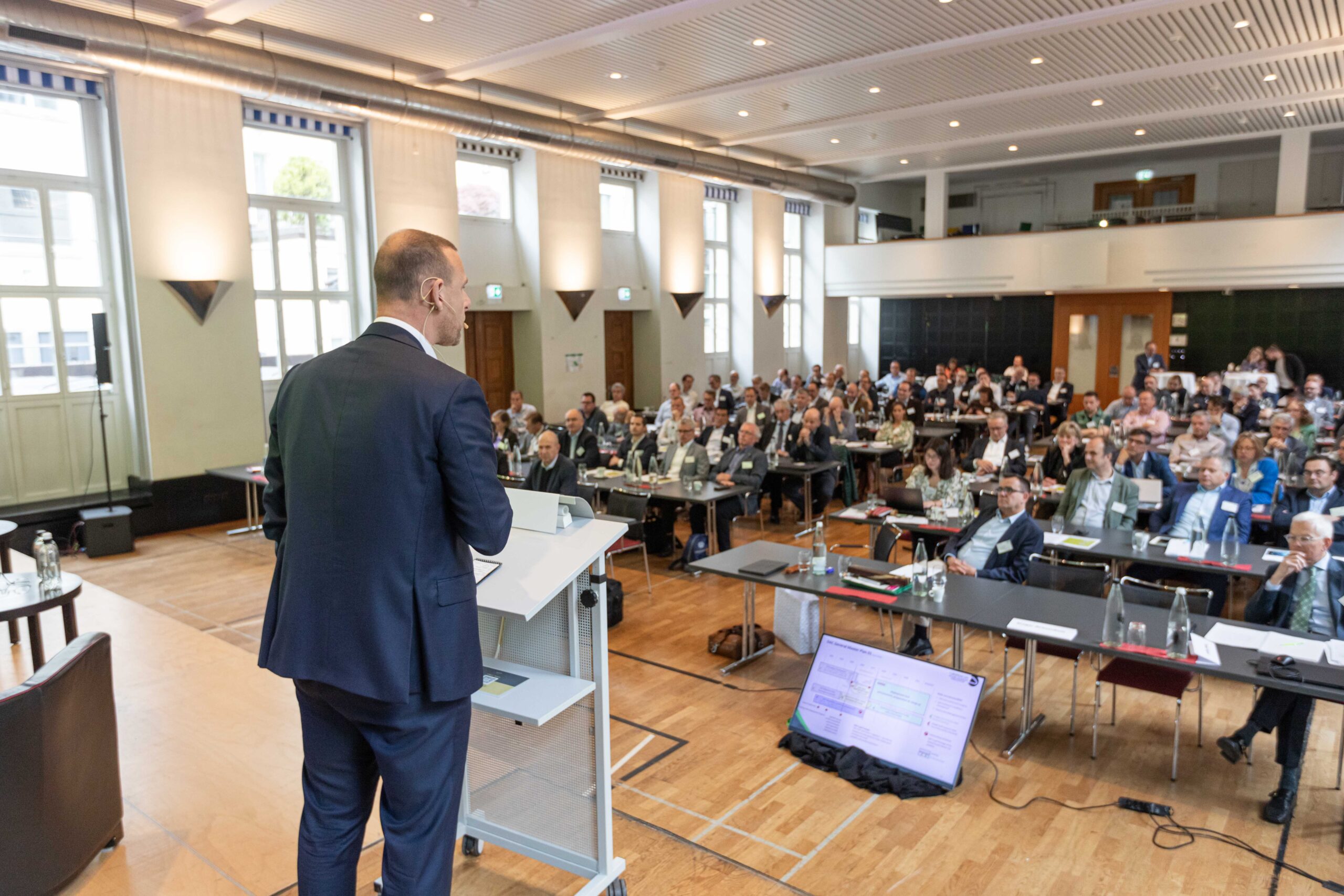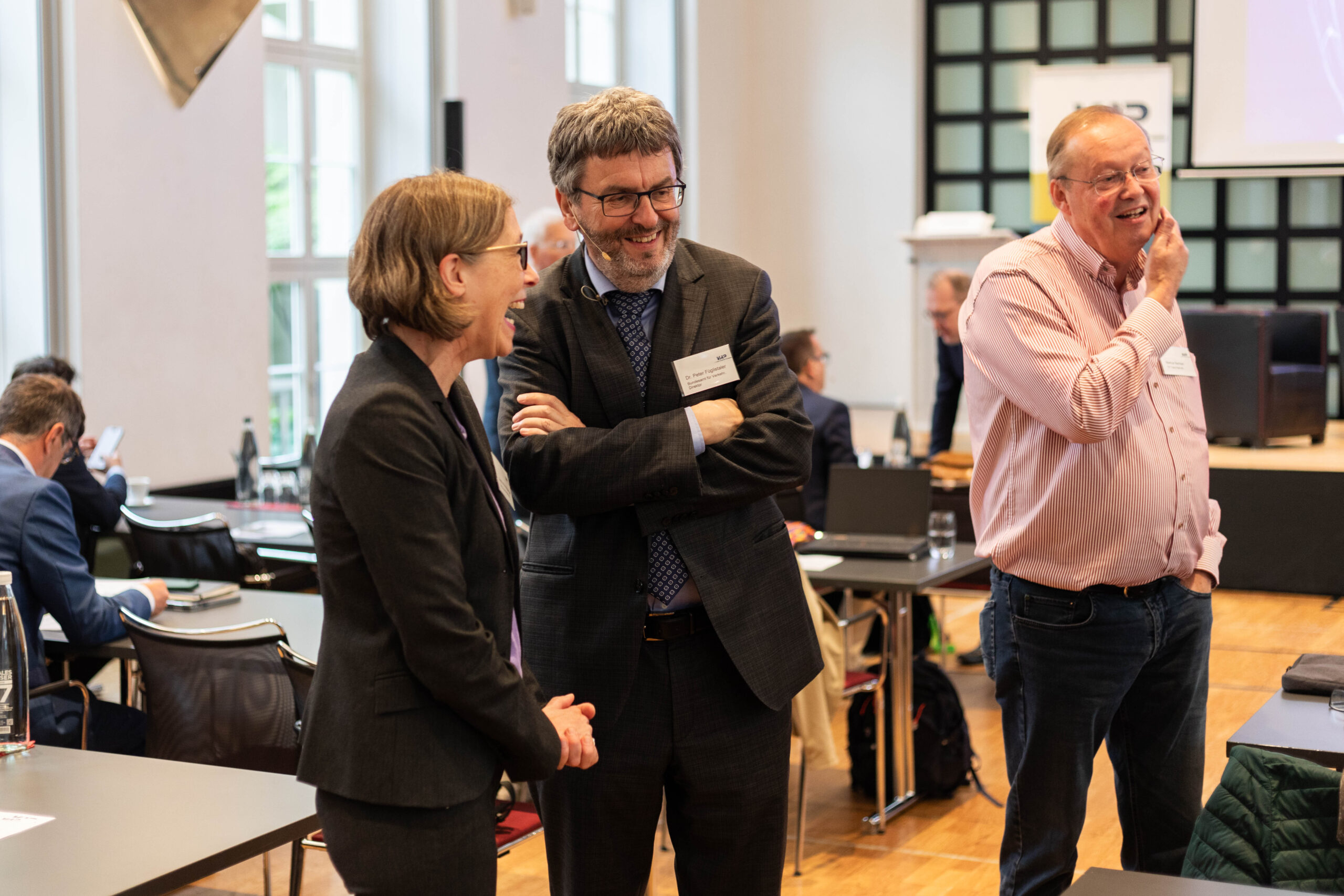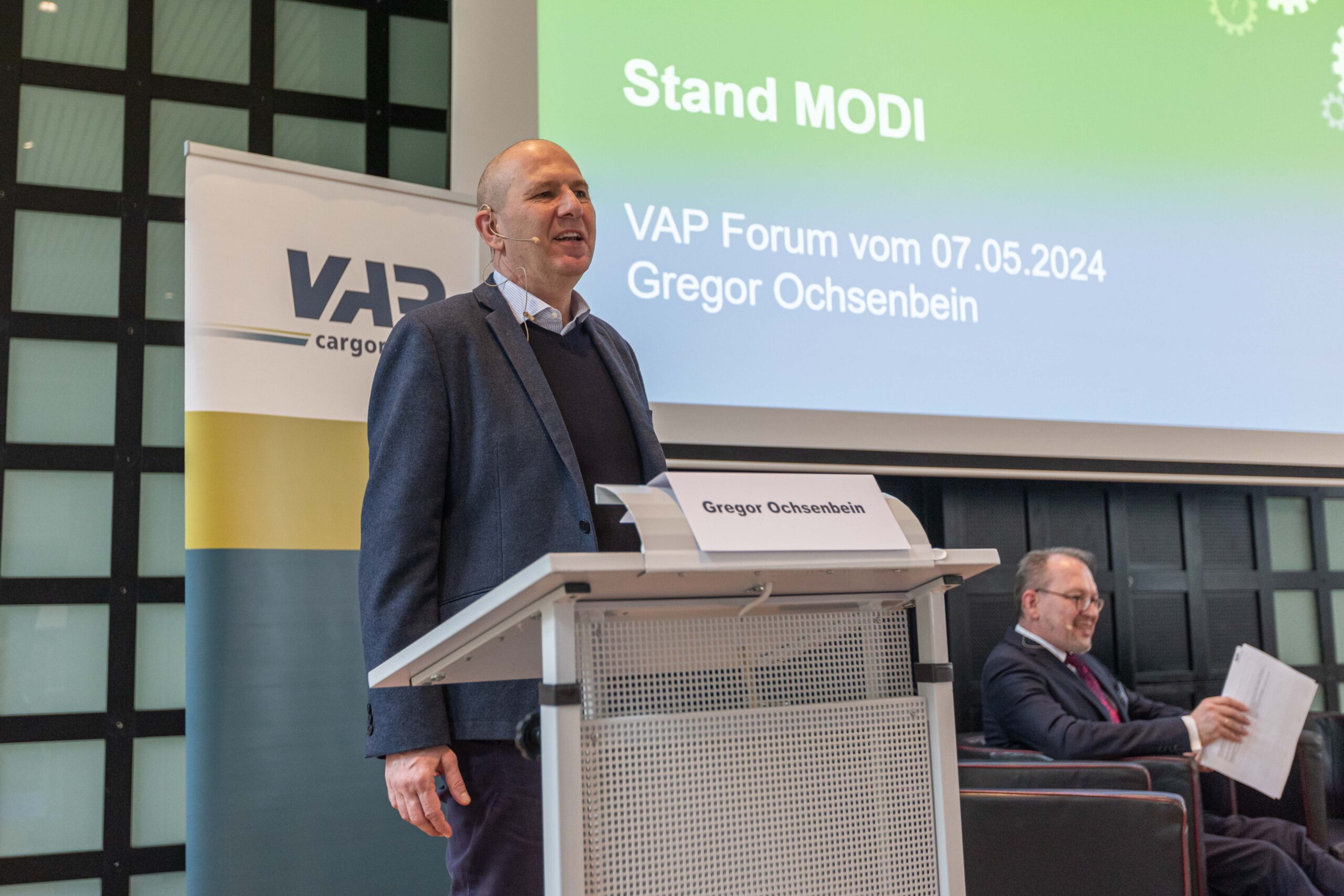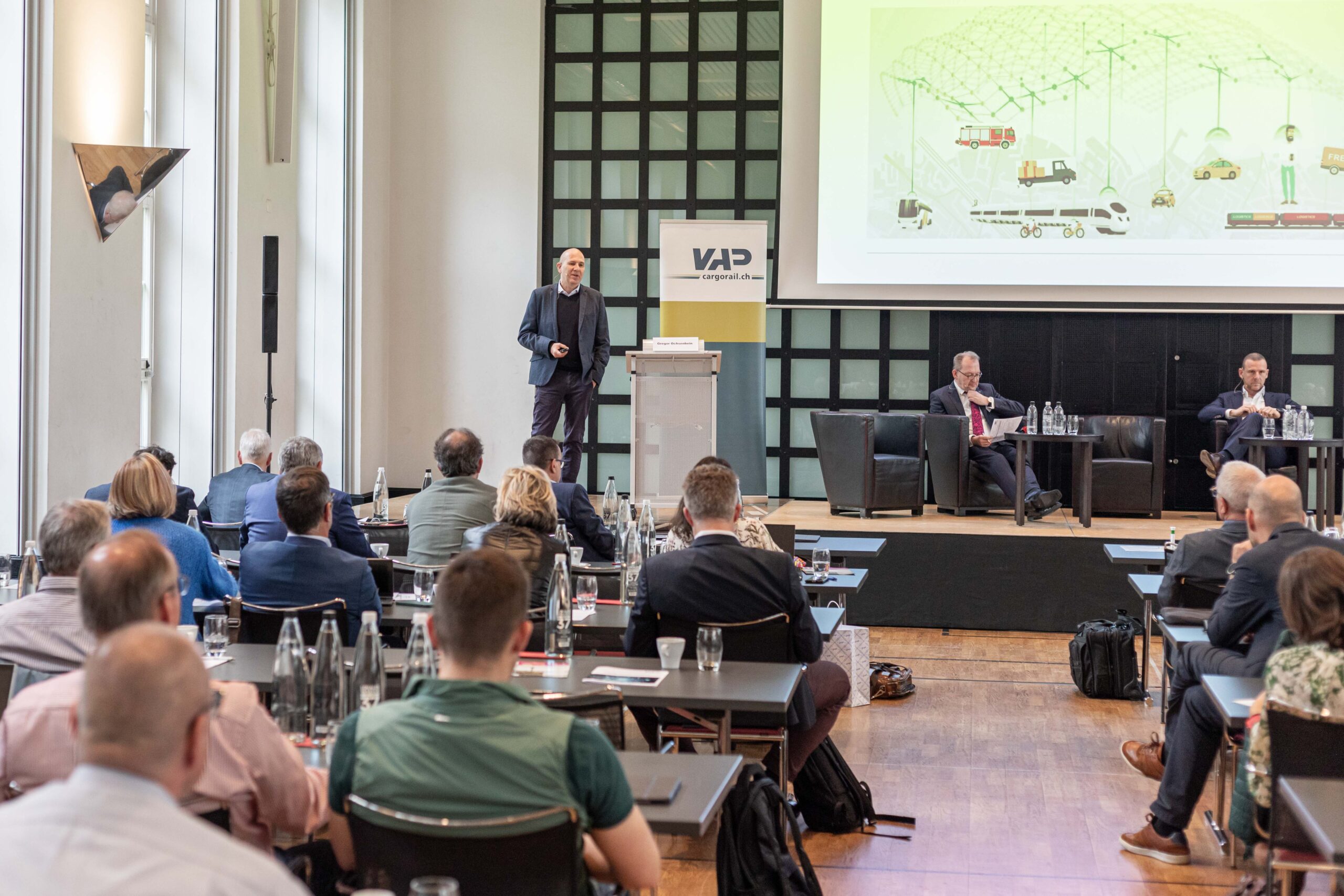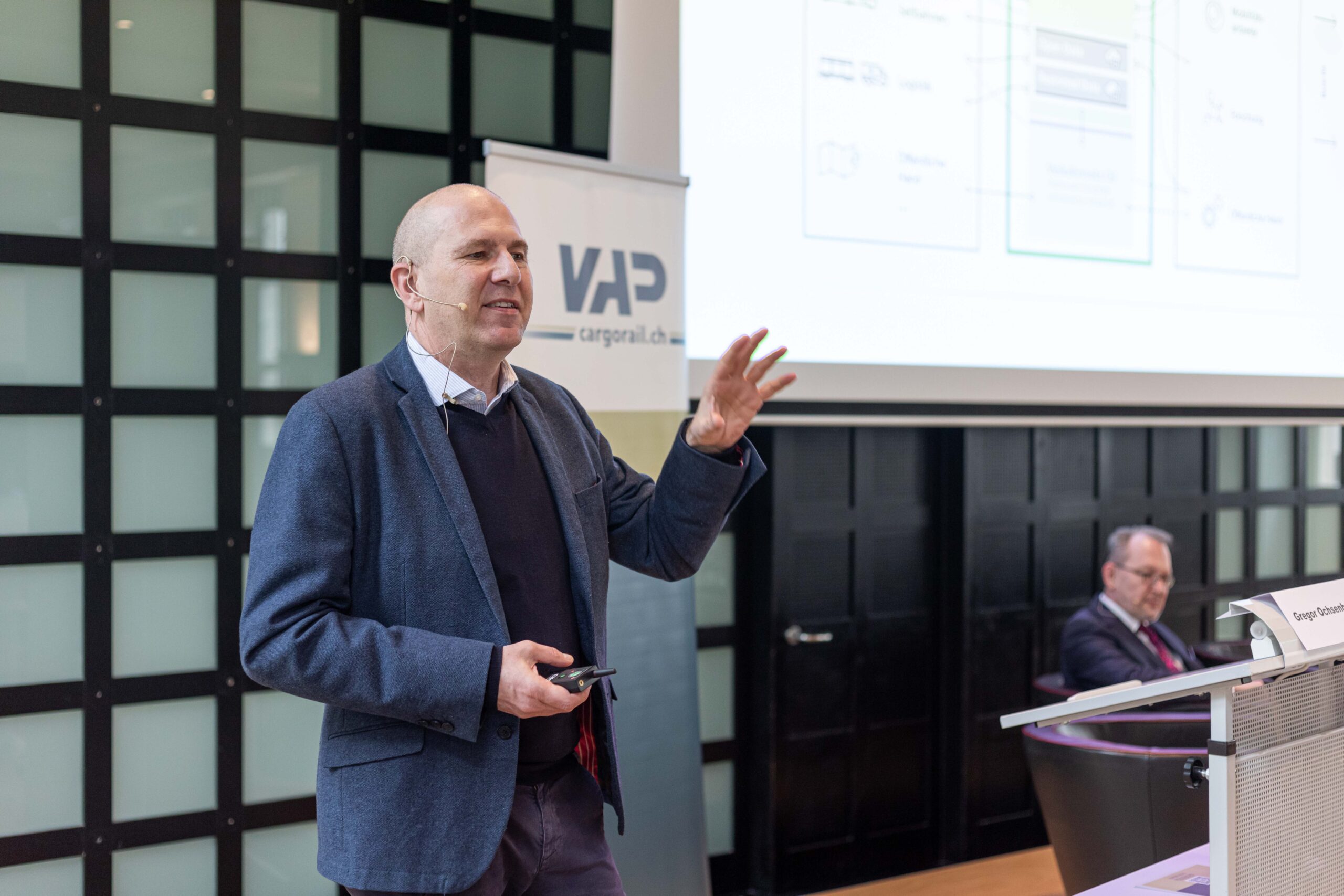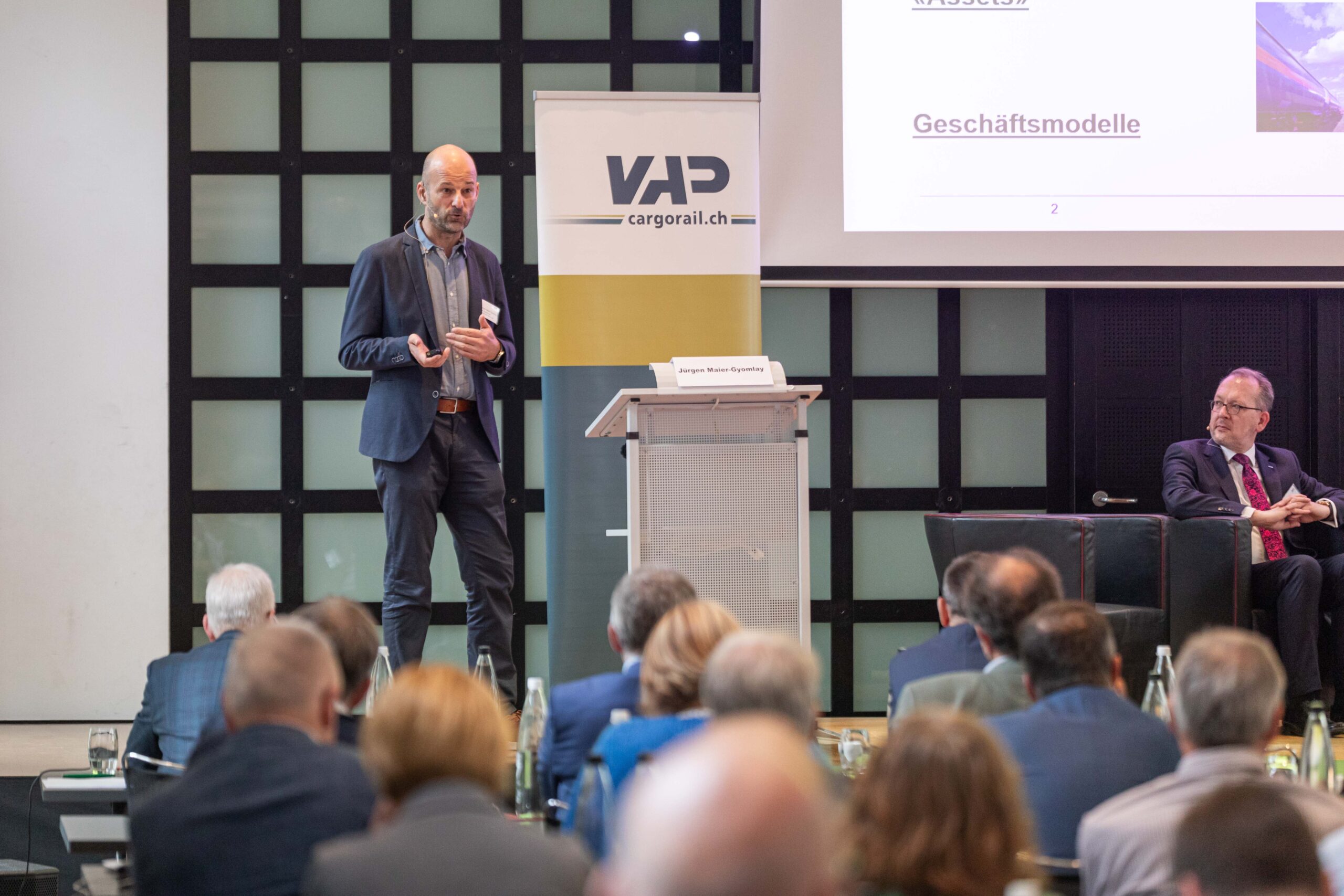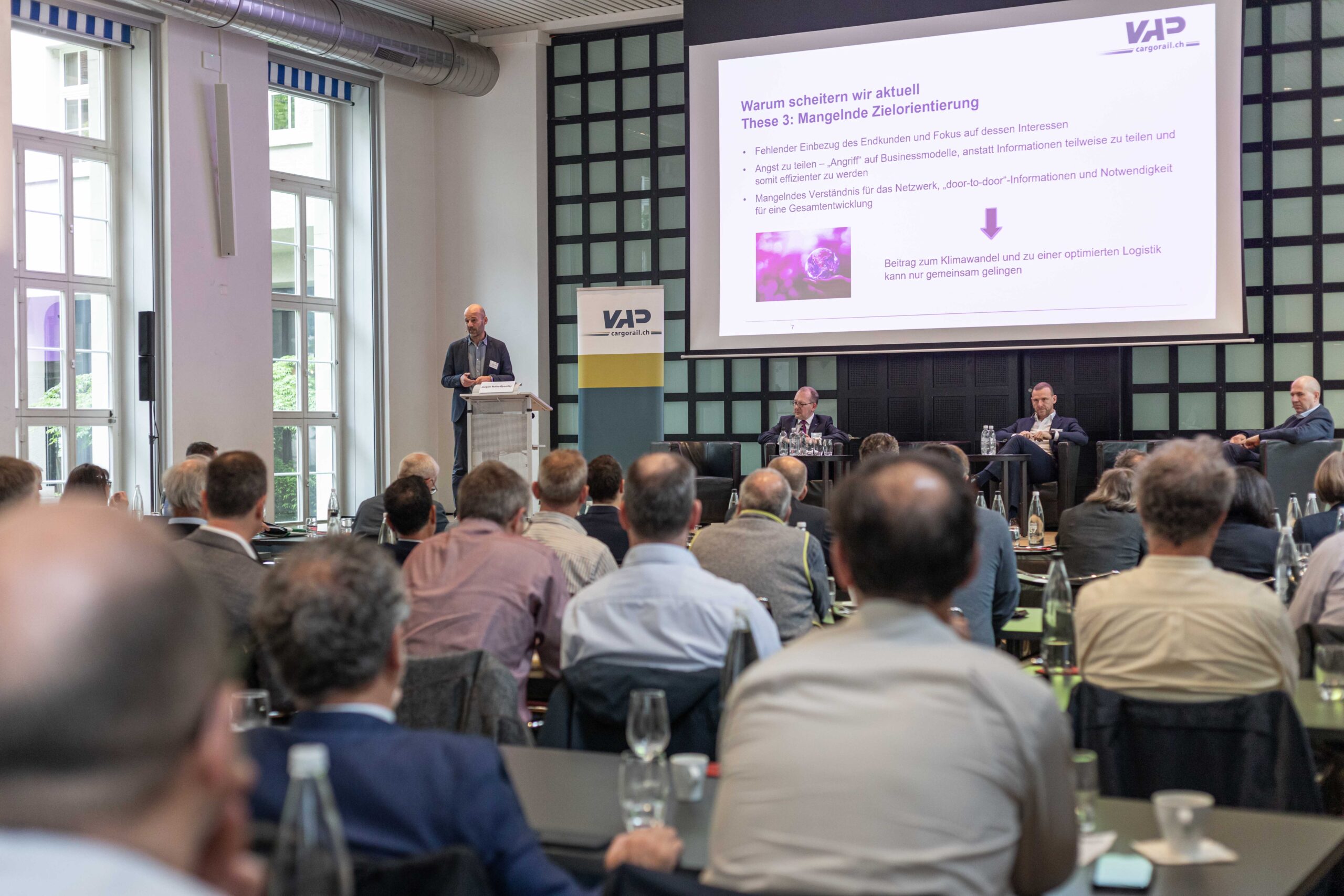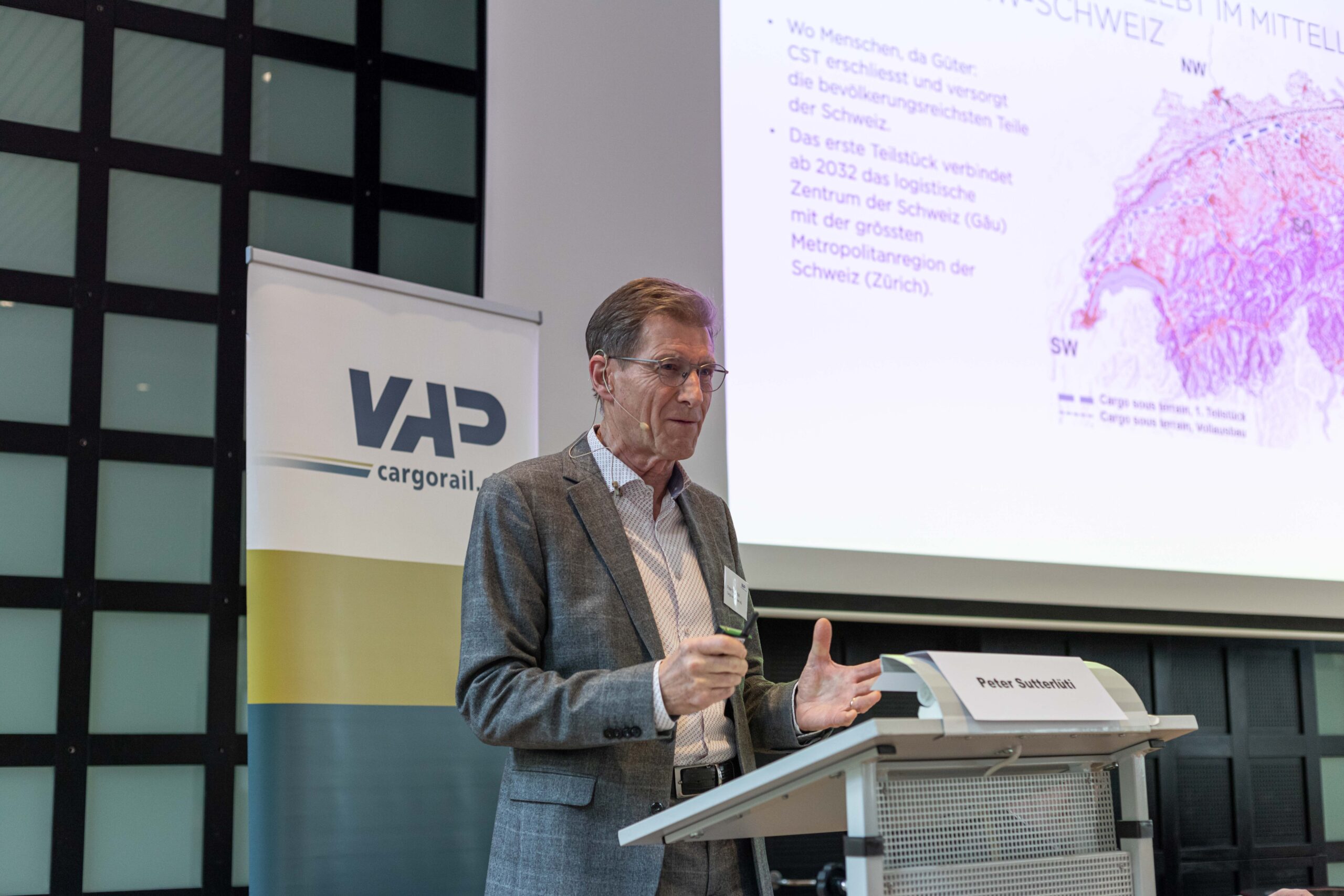INNOVATION
What innovations are moving rail freight transport? The VAP promotes the automation of rail freight transport and is represented in the project management of the migration of the DAC (digital automatic coupling).
Thanks to the DAC, rail freight transport is becoming more efficient, more productive and empowered to integrate into the multimodal logistics chains of the economy. With his motion 20.3221 “Transporting goods by rail more efficiently through automation”, VAP President and Councillor of States Josef Dittli provided the impetus for an implementation and financing concept for the automation and digitalisation of rail freight transport. Together with the Federal Office of Transport (FOT) and the Association of Public Transport (VÖV), the VAP has signed a declaration of intent for the digitalisation and automation of Swiss rail freight transport. Numerous companies in the sector have also declared their cooperation.
- Absichtserklärung zur Automatisierung im Schienengüterverkehr der Schweiz 2021
- Gemeinsame Absichtserklärung von CFS, VöV und BAV zur Innovationsförderung 2017
Media report:
Report by Zeit Online of 26.10.2021:
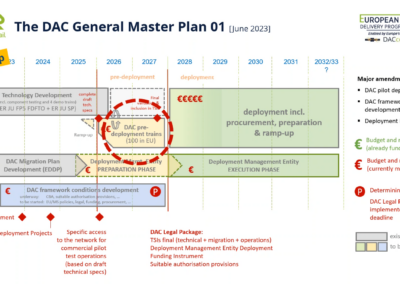
The digitalisation of rail freight transport is picking up speed
Politicians are adapting the framework conditions for the migration to digital automatic coupling (DAK) and the technology for the future standard is being defined step by step. Switzerland is harmonising its introduction process with that in Europe. As industry players, we at the VAP want to drive forward the authorisation for commercial transport and are therefore taking on a key role in the coordination and documentation of the corresponding projects.
That’s what it’s all about:
- Council of States gives green light for DAK and single wagonload transport
- GüTG harmonised with European timetable
- Technology must prove itself as a standard
- Swiss industry takes on pioneering role
- Two stages, one goal: networking with the future
- VAP transforms experience into practical solutions
Council of States gives green light for DAK and single wagonload transport
The developments surrounding the digitalisation of rail freight transport are literally running on several tracks. A course was set in the political process on 24 September 2024. On this day in the autumn session of the Swiss parliament, the Council of States discussed the total revision of the Freight Transport Act and approved the CHF 180 million credit commitment for the introduction of the DAK as well as the CHF 260 million credit commitment for the modernisation of single wagonload transport. The First Council has thus taken up the most important key points of the Federal Council’s dispatch of 10 January 2024 and, with a broad majority, has explicitly spoken out in favour of the digitalisation of freight transport with the innovation that has been refined over many years. Federal Councillor Albert Rösti said in his speech to the full Council: «In addition to digital automatic coupling, further concrete modernisation steps should be taken, such as booking platforms.» We explain why this comment reflects a holistic perspective on the DAK in our blog post «Data ecosystems: Industry round table with Federal Councillor Rösti» .
GüTG harmonised with European roadmap
The planning of the revised GüTG and the corresponding ordinance harmonises with the European roadmap. They are expected to come into force between the end of 2026 and the beginning of 2027. The budgeted federal funds for DAC migration will then be available. The stakeholders of the European DAC Delivery Programme (EDDP) of Europe’s Rail want to roll out DAC migration on a large scale from 2028. This implementation programme brings together railway undertakings, infrastructure managers, wagon keepers and the rail supply industry, maintenance bodies, industry organisations, rail research centres and political institutions. This integrated joint programme builds on research and development results and pilot projects and aims to ensure the necessary measures for a rapid, technically and economically feasible Europe-wide DAC roll-out.
Technology must prove itself as a standard
In order to achieve this ambitious goal, a developed and operationally proven technology is required. Here, too, the EDDP has already done considerable groundwork and communicated the «DAC Basis Package» as the future system standard for European rail freight transport at the beginning of 2024. The EDDP envisages pilot trains throughout Europe to refine and comprehensively test the technology of the «DAC Basis Package». The starter package contains the following components:
- DAC (mechanical/pneumatic) including energy/data system
- Recognising the train composition
- Automatic brake test
- Train completeness test
- Automatic uncoupling (in the train from the locomotive or from the carriage side)
An important system decision is still pending: For the data transmission technology in the train, the options Single via Ethernet and Powerline+ are in the final selection. As successful tests with Powerline+ have already been carried out in Switzerland, a pilot train with this technology that is ready for approval is now to be realised in the near future.
Swiss industry takes on pioneering role
Switzerland wants to make a substantial contribution to the European DAK development project coordinated by the EDDP and coordinate it closely with the EDDP’s European organisations. The Swiss railway industry is therefore preparing to push ahead with system integration for the approval of commercial applications. The technical specifications and functional scope of the «DAC Basis Package» and the Powerline+ transmission technology form the basis for the Swiss project team’s further work. Accordingly, the FOT, VAP and VöV will extend their jointly signed declaration of intent on automation in rail freight transport accordingly.
Two stages, one goal: networking with the future
Switzerland’s contribution to the introduction of DAK will take place in two stages. Firstly, system integration on the Swiss pioneer train is to be driven forward rapidly until it is ready for approval and its suitability for everyday use will then be demonstrated in commercial operations. The federal government will support the development with funding in accordance with Article 10 of the Goods Transport Act.
- The EP3 development project to realise the approval of a first pioneer train with the «DAC Basic Package» functions has begun. The aim is to obtain a FOT operating licence for defined commercial journeys on the Swiss standard-gauge network by mid-2026. To this end, around 30 motivated Swissrail members, SBB Cargo, the FOT and VAP representatives announced their intention on 30 August 2024 to jointly make rail freight transport competitive and promote Swiss DAC technology to the outside world. With EP3, the industry players want to play a key role in defining the future European standard for rail freight transport. It is now time to move beyond fundamental discussions and develop operationally viable solutions. The new systems must be robust, suitable for everyday use and affordable so that goods trains can operate successfully in the future.
- Following the completion of EP3, the EP4 development project aims to bring several DAK trains onto the Swiss rail system for commercial journeys in the period from 2026 to 2027. Initial discussions with shippers have already taken place. Isolated transport operations are being sought that are suitable for an early DAK conversion as pioneer trains. The aim of this second stage is to gather operating experience and further optimisation in real operations. The pioneer trains are intended to give stakeholders and investors involved a concrete picture of the future possibilities with DAC and the associated digitalisation of rail freight transport.
VAP transforms experience into practical solutions
We at the VAP will coordinate and document the aforementioned projects for all interested parties and stakeholders. In this way, we want to ensure a broad exchange of experience and full practicability right down to the sidings and logistics of the economy. Our members – above all the shippers and wagon keepers – are actively involved in both stages of development. In this way, findings from pilot projects can be scaled and synergies can be utilised for all industry players.
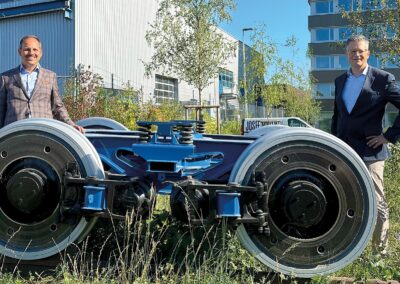
«I consider the asymmetry of benefits and implementation costs to be the biggest sticking point of the DAK»
The JOSEF MEYER Rail (JMR) Group specialises in the maintenance and repair of freight wagons and has locations in Switzerland and abroad. In an interview with the VAP, Dr Dominik Suter, owner and Chairman of the Board of Directors, and Ulrich Walt, Group CEO since September 2024, talk about the success factors of an industrial sector player, the asymmetry of innovations and the future of Swiss rail freight transport.
VAP: Mr Suter, how did the change in leadership come about and what do you expect from Ulrich Walt?
Dominik Suter: Vinzenz Bindschädler, our previous Managing Director, has decided to leave JMR at the end of September 2024. In Ulrich Walt, a long-standing industry expert is taking over the management of our Group. Together, we want to realise our vision of sustainably increasing the productivity of our railway customers and expand our group of companies in an international context.
VAP: You express your brand promise with the attributes ‘reliable’, ‘committed’ and ‘innovative’. Mr Walt, how do you intend to strengthen these attributes in the future? Where will you break new ground?
Ulrich Walt: I find these taglines helpful. Although they are somewhat generic, they make it clear what is important to our customers. The attribute ‘reliable’ in particular is crucial in the maintenance business because it has a lot to do with safety. With the attribute ‘committed’, we want to consolidate our reputation as one of the best workshops in Europe. For example, we are constantly shortening lead times and sending out mobile maintenance teams in Switzerland for minor repairs.
I will maintain our strategic course. As we are integrated into industrial processes, we cannot revolutionise our business model overnight. However, I would like to set new priorities. For example, we will focus even more strongly on our core competences of maintenance and ECM offerings. Internally, we are focussing more on management and responsibility. And finally, we also want to further optimise our systems and processes.
The term ‘innovative’ is generally equated with digitalisation. This is also the subject of lively discussion in rail freight transport, particularly in connection with digital automatic coupling (DAK). What is your opinion on this?
Dominik Suter: The promotion of rail transport in Europe requires not only the maintenance of the rail infrastructure and the DAK in the short term, but also innovations in rolling stock in the medium term. For example, years ago we developed low-noise and low-wear freight wagon bogies for significantly higher speeds together with industry partners. In a joint venture with PROSE, this has resulted in the more cost-effective ‘LEILA Light’ bogie based on a technology that is ready for approval. ‘LEILA Light’ offers impressive advantages in terms of noise, wear and tear on the rail infrastructure and speed. However, as long as the advantages in terms of noise, wear and tear on the rail infrastructure and speed do not reach the investor, there will be no investment in modern rolling stock.
Ulrich Walt: The situation is similar with DAK as the most frequently cited driver of digitalisation. When it comes to innovations for rail transport, the question always arises as to whether they should take place on the carriage or on the infrastructure. DAK is revolutionising the carriage. However, the benefits of this innovation and the costs of implementing it are distributed asymmetrically, i.e. they are incurred in different places. In such a case, it will be difficult to achieve a breakthrough. I consider this asymmetry to be the biggest sticking point of the DAK. The regulator needs to provide an impetus here. The DAK is well advanced in the political process, which is why it will prevail sooner or later.
JMR’s roots go back to the year 1888. Since then, your company has established itself as a reliable industry player. What is the secret of your success?
Dominik Suter: The secret of our success is our employees, who are ‘on fire’ for rail freight transport. Some employees have been with us for decades, sometimes even their entire professional lives. The lean structures with short decision-making channels and our customer-orientation also contribute to our success.
Ulrich Walt: I can only agree with that. We are small and agile, which is why we consistently focus on our customers. I would like to add another success factor: JMR has an engineering background. So we can do more than just maintenance, we can even rebuild entire sub-assemblies or bogies if required. Our engineering expertise keeps us in pole position.
Liability in rail freight transport is currently taking centre stage. Recommendations have also been made for the further development of the ECM Regulation. What do you think about this?
Ulrich Walt: In connection with the accident in the Gotthard Base Tunnel, the Joint Network Secretariat of the European Union Agency for Railways ERA and the Swiss Safety Investigation Board STSB issued recommendations. These have already been incorporated into our maintenance measures and our ECM services. However, I see a certain discrepancy in regulatory developments. On the one hand, the federal government wants to promote rail freight transport, for example with the total revision of the Freight Transport Act. At the same time, the competitiveness of rail freight transport would be reduced by increasing the liability obligations of the owners. Such distortions penalise private-sector market players such as JMR because they impose additional costs on us.
What strengths do you attribute to our association?
Ulrich Walt: The VAP is excellently networked with other logistics associations and players in the rail industry. It has extensive expertise that it can use to support its members. It can also be leveraged for political initiatives. I believe that the VAP has become impressively professionalised over the last three decades and is now an important voice for the rail freight industry.
What would you like to see for the VAP?
Ulrich Walt: Two things are important to me for the coming months and years. Firstly, I hope for a successful handover of operational management from Dr Frank Furrer to Dr Simon Wey. Fortunately, Mr Furrer will remain with the VAP, as he was elected to the Board of Directors at the last Annual General Meeting. This will enable the transfer of his enormous wealth of knowledge and experience and ensure continuity. Simon Wey is an experienced association man and an outstanding economist. This combination should enable him to continue the professionalisation of the association. Secondly, I wish the newly founded VAP subsidiary ‘Cargo Rail Consulting AG’ a successful start. Over the last few years, the demand for consultancy services in this area has become increasingly apparent. This subsidiary will certainly further strengthen the association.
Who would you recommend working with the VAP?
Dominik Suter: All shippers and wagon keepers and, in general, anyone who is interested in rail freight transport or is committed to it in Switzerland or Europe. The shippers benefit directly, the wagon hire companies indirectly from a fruitful exchange and up-to-date information. As a member, you are at the source of rail freight transport expertise, so to speak.
How do you see the future of rail freight transport in Switzerland?
Ulrich Walt: I have noticed two opposing trends. On the one hand, the ongoing de-industrialisation of Switzerland means that there are fewer and fewer ‘rail-friendly’ goods that can be transported by rail. On the other hand, the sustainability transformation of countless industries is putting rail at the centre of attention as a climate-friendly mode of transport and a valid alternative to road transport. It is true that rail freight transport is cumbersome because much of it is still in the hands of the state. Nevertheless, I consider the future of rail freight transport to be promising. The infrastructure, efficiency and sustainability benefits are there. Freight rail customers and legislators alike have recognised this.
Dominik Suter: Despite the climate debate and the sharp rise in the number of hours of congestion on the motorways, we are seeing a shift back from rail to road. Among other things, this is due to price increases, a lack of slots for freight transport and a lack of punctuality. There is an urgent need for action at a political level. The VAP can become a little louder here.
What has not yet been said?
Ulrich Walt: I am delighted to be working for the VAP as CEO of the JMR Group. In my new position, the work of the VAP affects me even more than it did with my previous employer. The only difference is that I look at things at JMR from an industrial perspective.
Thank you, Dr Dominik Suter and Ulrich Walt, for this stimulating interview.
|
Dr Dominik Suter is the owner of the JOSEF MEYER Rail Group and Chairman of the Board of Directors. He has more than 25 years of management experience as a CEO, board member and consultant, during which he has successfully developed numerous companies, including internationally active industrial companies in Switzerland, Germany and Austria, even in difficult situations. |
|
Ulrich Walt has been Managing Director of JOSEF MEYER RAIL AG in Rheinfelden since 1 September 2024. He has 20 years of experience in management positions in logistics in Switzerland and abroad. He has worked at Alloga and Holcim Switzerland, among others, and was most recently CEO of logistics and service specialist Fastlog. Ulrich Walt is also Vice Chairman of the Board of Directors and Chairman of the Executive Committee at VAP. |
|
JOSEF MEYER Rail (JMR) was founded in Lucerne in 1888. In 1943, the company opened a branch in Rheinfelden, Switzerland, for the production of freight wagons and welded assemblies. With the liberalisation of the railway sector in the 1990s, the company expanded its range of activities to include the maintenance of rail vehicles. Today, the JOSEF MEYER Rail Group is a leading expert in the maintenance and modernisation of freight wagons, complex repairs to passenger carriages and locomotives as well as the production of complex welded assemblies, small series and special vehicles. |
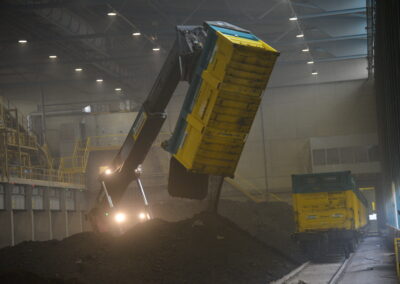
Total revision of the GüTG: The mood in the industry threatens to tip over
The Committee for Transport and Telecommunications of the Council of States (KVF‑S) has concluded its deliberations on the total revision of the Goods Transport Act (GüTG). Like the Federal Council, it wants to improve the framework conditions in favour of multimodal logistics chains. However, SBB Cargo’s current behaviour, with massive price increases and a reduction in services, contradicts these efforts and puts shippers in a dangerous dilemma.
This is the issue:
- What has happened so far
- A clear yes to multimodality and competition
- Controversial behaviour of SBB Cargo
- The Confederation has a duty
- Together out of the dilemma
What has happened so far
We have already reported in detail on the KVF-S’s initial proposals on the Federal Council’s dispatch on the Freight Transport Act (total revision of the Federal Act on Freight Transport by Rail and Shipping Companies) in our blog post ‘Now or never: groundbreaking debate on Swiss rail freight transport’. As communicated on 21 June 2024, the preliminary consultation committee wants to strengthen competition in freight transport in a targeted manner, regulate RailCom’s responsibility for enforcing a non-discriminatory offer in single wagonload transport (EWLV) and specify the content of the guidelines for rail freight transport as the basis for the EWLV service agreement.
A clear yes to multimodality and competition
The Council of States Committee has now completed its detailed deliberations. In its latest media release dated 20 August 2024, it calls on the legislator to stipulate in the regulations that loading contributions are passed on to shippers and recipients and that internal company services are made transparent and monitored.Finally, a majority of the committee suggests that an extension of the EWLV subsidy should be decided by Parliament and not by the Federal Council. In this way, the KVF‑S would like to ensure that the financial competence and the decision on a possible extension of support are at the same level
Controversial behaviour of SBB Cargo
Shippers’ tempers are currently running high over the behaviour of the SBB subsidiary SBB Cargo, which clearly runs counter to the efforts of the KVF‑S and the Federal Council’s previous statements. The monopoly provider demands a surcharge of 20% to 60% for its services – quite naturally and without cost transparency or the possibility of reducing costs from the system together with the rail freight operators. Even if the GüTG is amended as proposed and the Council of States approves the proposals of the KVF‑S, there is an acute danger that shippers will shift their transport operations to the road on a large scale. As such a strategic reorientation does not happen overnight, they will adapt their logistics concepts over the next two years. In this case, both the bill itself and the federal funding required for it would be obsolete – as would a parliamentary debate on the matter in the 2024 autumn session.
The federal government has a duty
In order to avoid unjustified market discrimination and a shift to the road, shippers could also orientate their logistics concepts towards alternative rail services offered by innovative and courageous rail freight companies and shift their transport volumes from a state monopoly to market-based competition. This would be in line with the aim of the KVF‑S, which calls for more competition through service agreements and revised guidelines on EWLV. It is therefore not insignificantly the responsibility of the federal government to initiate appropriate measures in the ordering process as soon as possible, to invite private freight railways to submit offers and to support them in their development.
Together out of the dilemma
The industry must find a way out of the current dilemma before the debate escalates. It is now up to the industry players and the federal government to work together to enable more competition and fundamentally modernise the EWLV. To do this, they must work hand in hand to change the organisation of the EWLV system, open it up more to third-party providers and develop it further on an equal footing. The private sector has already come up with some attractive solutions. If Parliament says yes to the promotion of EWLV and thus strengthens intramodal competition, shippers and rail freight companies could refrain from defiant reactions. Instead, they could – together with the SBB – seize the opportunity to finally break away from the monopolistic EWLV and develop a self-economic, broad-based network offer.
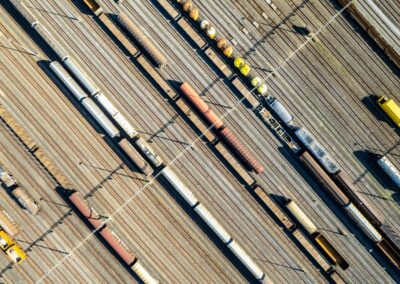
Now or never: groundbreaking debate on Swiss rail freight transport
In the spring, the Council of States’ Committee for Transport and Telecommunications (KVF‑S) took up the total revision of the Goods Transport Act (GüTG) and triggered ground-breaking discussions on Swiss domestic goods transport in Parliament. Together with other stakeholders, we at the VAP will help shape this debate. Our aim is to find a workable compromise and to emphasise the interests of our members.
That’s what it’s all about:
- Good news for parliament
- First proposals from the KVF‑S
- Lively dialogue between the stakeholders concerned
- Challenges for the economy and European logistics as a whole
- Pain threshold reached
- This is the way forward
Good news for parliament
On 9 February 2024, the Swiss Federal Council published its dispatch on the Freight Transport Act (total revision of the Federal Act on the Transport of Goods by Rail and Shipping Companies). In our view, particular attention should be paid to the following financial aspects
- Operating charges: In order to maintain single wagonload transport (EWLV) at the current nationwide level during the conversion phase, the Federal Council plans to subsidise it financially on a degressive basis for a limited period of eight years. At the end of this period, the aim is to achieve self-sufficiency. It is requesting CHF 260 million for the first four years.
More on this in the freight transport factsheet. - Incentives for shippers: The plan is to introduce unlimited transhipment and loading contributions and to compensate for the uncovered costs of the ordered freight transport services for a total of CHF 60 million per year.
Initial proposals of the KVF‑S
The KVF‑S, as the preliminary advisory committee of the First Council, adopted the total revision of the GüTG this spring after consulting the industry, including the VAP. The discussions in parliament over the coming weeks and months will be groundbreaking for the future of rail freight transport across the country. In its detailed deliberations, the committee examined numerous points. The majority of the committee is of the opinion that the total revision of the GüTG is suitable for ensuring and improving sustainable interaction between the various modes of transport for Swiss transport policy. It suggests making the following changes to the content:
- Explicit strengthening of competition in freight transport
- Clear regulation of RailCom’s responsibility for reviewing and enforcing the non-discriminatory non-discriminatory provision of EWLV services
- Specification of the content of the guidelines for rail freight transport (basis for the service agreement in the EWLV)
- Transfer of authority to extend certain provisions (in particular compensation) from the Federal Council to Parliament
The committee is expected to finalise the detailed discussion with additional information from the administration at its next meeting. The matter will then go to the plenary session of the Council of States.
Lively dialogue between the stakeholders concerned
Over the past few weeks, we have held discussions – with the support of our members – with the stakeholders of the Wagonload Transport Interest Group (IG WLV), the Federal Office of Transport (FOT) and the SBB Cargo subsidiary of Swiss Federal Railways (SBB). Alexander Muhm, CEO of SBB Cargo, presented the rough concept for a transformation towards self-sufficiency to the VAP’s Executive Committee. Muhm’s presentation triggered an intensive discussion between the parties involved and further talks on the possibilities and risks.
Challenges for the economy and European logistics as a whole
A look at the statistics shows that the transfer figures in Switzerland and Europe are stagnating or even shrinking slightly. There are many reasons for this. In Germany, there is great uncertainty about potential investment programmes and the timing of a noticeable economic upturn. Italy and France are struggling with modest growth figures and high levels of debt. This, combined with consumer sentiment, is having a direct impact on companies and their financial situation.
In logistics, in addition to the closure of the Suez Canal or natural disasters, there are other enormous challenges such as major construction sites (e.g. on the German rail network) and corresponding diversion traffic or higher track prices. All of this is fuelling operating costs and putting pressure on the competitiveness of the railways. The state of overall European logistics is important insofar as the majority of goods used in Switzerland originate from abroad and influence the EWLV in and through Switzerland.
Pain threshold reached
Since our foundation, we have been committed to attractive, competitive and customer-oriented rail freight transport and thus to the best possible modal shift to rail. We are committed to this goal either as a partner to numerous freight transport stakeholders or with our own ideas and projects. In transport policy, we advocate sufficient capacity on all infrastructures, favourable logistics locations and sensible framework conditions.
In view of global competition and the current framework conditions for the Swiss economy, the shipping industry as our membership does not have to or cannot afford massively higher costs on the railway. Our members can no longer cushion the impact of mistakes such as the lack of (investment) strategy in the area of rolling stock over the last 20 years, the ongoing dismantling of infrastructure facilities (dismantling of tracks, construction of investment properties) or insufficient integration into overall concepts from the perspective of users and customers. The consequences of such mistakes, such as massive price increases (beyond inflation), are fatal for the economy and society. The competitiveness of rail compared to road is dwindling and the optimisation of the modal split is being thrown into disarray. In addition, increasing cost sharing for the operational use of service points can send the wrong signals.
For our members, the pain threshold has long since been reached. We are prepared to provide significant support for the further development and transformation of rail freight transport. Provided that those responsible ensure complete transparency regarding costs and their breakdown and take measures within a fair, compatible and harmonised framework.
The way forward
We are taking the findings from the numerous discussions with the KVF‑S and other stakeholders as an opportunity to initiate numerous activities within our membership and organise further coordination meetings. Anyone who would like to talk to us about logistics as the backbone of the Swiss economy is cordially invited to join the dialogue.
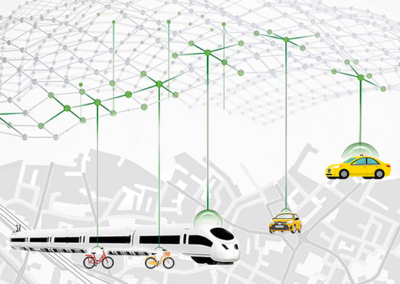
Data ecosystems: Industry round table with Federal Councillor Rösti
On 24 June 2024, Federal Councillor Albert Rösti brought together representatives from the public sector and the logistics industry at a round table to discuss the importance of a national data infrastructure for the exchange of information. We at the VAP have been driving the networking of data within our industry for some time now. We will continue to play this pioneering role in the future.
That’s what it’s all about:
- What has happened so far
- Kick-off for a broad-based dialogue
- Putting customer benefits at the centre
- In small but sustainable steps
- Laying the foundations for sustainable rail freight transport
What has happened so far
The topic of data ecosystems has been on our transport policy agenda for some time. For years, we have been campaigning for the establishment of a meaningful platform and for the networking of relevant data within the entire logistics chain and its stakeholders. We have reported on the benefits of data integration and the latest developments in various blog posts. (see “Data ecosystems: Sharing data to double its added value”, “Ready for the next level of digitalisation” and “Wagonload transport can become competitive”).
The discussions surrounding the Federal Act on the Mobility Data Infrastructure (MODIG) and the National Data Network Infrastructure Mobility (NADIM) initially only involved decision-makers and those affected by passenger transport. Fortunately, those responsible took up the concerns of freight transport and the needs of shippers at our suggestion. This enabled us to support the public administration with arguments and use cases and subsequently involve our industry in the exchange of opinions.
Kick-off for the broad-based dialogue
On 24 June 2024, Federal Councillor Albert Rösti, Head of the Federal Department of the Environment, Transport, Energy and Communications (DETEC), welcomed representatives of the public administration and the logistics industry to the round table. Heads of office and representatives from DETEC, parliament, numerous associations and companies from various areas of rail transport and the entire logistics sector were invited.
Mr Rösti wanted to find out what our industry thinks about a data infrastructure for exchanging information and what role the federal government should play. By inviting us to the discussion, he gave our members and partner associations the opportunity to play a key role in the further development of data networking. Those present agreed that a platform for the exchange of data for a mobility data infrastructure (MODI) is needed in order to simplify multimodal logistics solutions and flexible partnerships in networks such as single wagonload transport. Some expressed constructive criticism, but this did not fundamentally call into question the idea as a whole.
The chair of the meeting presented five use cases from different perspectives for a first phase of the MODI as a basis for discussion. One case presented the possibilities of better capacity utilisation on the railways and transparency of basic information and explained the extent to which these would benefit shippers and how the barriers to entry could be lowered.
Putting customer benefits at the centre
In our view, these considerations also include those aspects that have an impact on the range of freight transport services. Data ecosystems help to align multimodal logistics chains with the needs of customers and create added value for them. This requires innovative approaches at an organisational level and cooperation between market players. This is the only way to make freight transport more sustainable, more competitive and more customer-orientated.
Information on freight transport flows (domestic transport, foreign trade transport, transit) should be available to all parties involved in a timely and comprehensive manner, regardless of the mode of transport. This would enable those responsible at federal, cantonal and municipal level to utilise infrastructure components such as network capacities or transhipment areas more flexibly, coordinate them better, plan them in a more targeted manner and, if necessary, re-dimension them. As much of the necessary data is held by the federal government or is collected on its behalf, we believe that the public administration must play a central role in endeavours such as MODI and NADIM. In addition, with the introduction of the DAK, the associated, newly developed data sources can be meaningfully and additionally transferred to this data infrastructure.
In small but sustainable steps
In the coming weeks, DETEC will prepare a draft for the Federal Council and Parliament and involve the sector once again in order to reflect on the draft. The following elements are important to us for a harmonised further course of action:
- Remain pragmatic in order to provide practice-orientated data at a strategic and operational level with the greatest possible benefit for the stakeholders
- Utilise existing tools from Switzerland and abroad as well as well-prepared data (sources)
- Business and the logistics sector should play a key role in shaping this process; possible tasks for conceptual and operational phases will be discussed in the coming months
We at the VAP will play our part in ensuring that our members benefit from significant added value from the outset and that the needs of our industry are covered. With this ambitious goal in mind, we are already taking the first steps by promptly transferring the internal database of private connectors into a modern and internationally recognised tool and updating its content at the same time. To this end, we are in close contact with our colleagues in Germany and Austria in order to make further progress.
Foundation for sustainable rail freight transport
We are convinced that the public sector and the private sector must work together in equal measure to create a data ecosystem for rail (freight) transport and the entire logistics industry. This will make it possible to plan more effectively and operate more efficiently and to utilise investments in an even more targeted manner. It also forms the foundation for new business models, service improvements and partnerships between providers and customers.
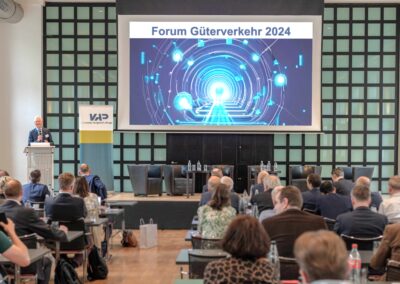
Wagonload transport can become competitive
Forum Freight Transport, 7 May 2024. Nationwide wagonload transport has a very high market share in domestic transport throughout Europe. In export and import transport, on the other hand, it is declining despite long distances. This is due to market compartmentalisation and outdated production structures. Exclusively state railways, exclusively on their home market is the motto. Wagonload transport is seen as system transport. Cooperation in networks, as is common and successfully applied on the roads, is not envisaged on the railway.
However, it is possible to transform wagonload transport into an automated, digitally networked and internationally open railway system. The states are offering the railway sector political and financial support for this.
That’s the point:
- Leading minds from the European transport and logistics industry in Zurich at the Freight Transport Forum
- Morning with an overview of the current legal framework
- Afternoon topic: Transformation of rail freight transport
- Focus on shaping a sustainable freight transport landscape
On 7 May 2024, leading figures from the European transport and logistics industry gathered at the Freight Transport Forum in Zurich to discuss the future of rail freight transport.
In his welcoming address, Frank Furrer, Secretary General of the VAP Association of the Logistics Industry, looked back on the previous forums from 2018 to 2024, at which an ongoing discussion was held on the development of freight transport. The focus was on topics such as multimodality, safety, innovation and digitalisation. He particularly emphasised the role of transport policy as a driver of change. In 2024, the focus will now be on new framework conditions for sustainable freight transport, in particular the transformation of rail freight transport. Frank Furrer emphasised the importance of favourable framework conditions for competition in order to enable multimodality, innovation and environmental protection. He cited the partnership between politics and business, cooperation between rail freight operators, logistics providers and shippers as well as the principle of subsidiarity as fundamental principles. The current bill to modernise rail freight transport was discussed in parliament. The VAP supports measures such as the introduction of digital automatic coupling (DAK) and bridging funding for single wagonload transport (EWLV) under certain conditions.
Dr Peter Füglistaler, Director of the Federal Office of Transport (FOT), gave an overview of the current legal framework and challenges in Swiss freight transport. For him, the temporary financial support for wagonload transport is a last attempt to save inland freight transport by rail. The DAK is the necessary means to achieve this, and with a subsidy of 30% to the owners, it is a good offer. Peter Westenberger, Managing Director of Die Güterbahnen in Deutschland, presented the digital railway and the VDV charter from a German perspective. He called for financial support for wagonload transport exclusively via the service routes, i.e. the reactivation or increase in volume at as many service points as possible. It is very difficult for competitors, as the data situation is extremely opaque. Claudia Nemeth from the Federal Ministry for Climate Protection, Environment, Energy, Mobility, Innovation and Technology (BMK) in Austria explained the instruments and strategies of Austrian transport policy with regard to rail freight transport and compared the per capita investments in Switzerland, Germany and Austria. Austria is committed to actively monitoring the measures of the Freight Transport Masterplan 2030 and recently presented the first monitoring report in this regard. One of these measures is the establishment of a modal shift coach at the end of 2023, who advises companies and municipalities on the modal shift to rail. Together with German Transport Minister Wissmann and Federal Councillor Rösti, Austrian Minister Leonore Gewessler supports the rapid introduction of the DAK. Ueli Maurer, Head of Intermodal Network at Bertschi AG, provided valuable feedback from a business perspective. Waiting for the DAK is impossible in view of the progress made on the road; it must be implemented immediately. The current construction sites, which are still completely inadequately coordinated internationally, as well as energy and track prices are currently fundamentally threatening the marketability of rail freight transport. He also called on infrastructure managers to pass on the savings from complete closures to rail freight transport as compensation for their additional costs.
In the panel discussion that followed, Westenberger spoke about the current chaotic construction site situation and the associated additional costs and called for an improvement in the quality of rail freight transport. Nemeth agreed, but was optimistic about the future of rail freight transport and compared the current challenges to a small child learning to walk: there are setbacks, but it gets better. Füglistaler emphasised that there is no alternative to the corridor renovations and stressed the need for investment in infrastructure. Dr Jens Engelmann, who moderated the panel discussion, raised the issue of the effectiveness of funding measures and discussed the various approaches to supporting rail freight transport. Füglistaler and Nemeth defended the role of the state railways for single wagonload transport. Engelmann concluded the discussion by saying that rail makes an important contribution to sustainability and must continue to be promoted, but that challenges such as capacity bottlenecks and the costs of technological innovations must also be overcome.
After a short break, the event focussed on the transformation of rail freight transport in the future. Gilles Peterhans, Secretary General of the International Union of Wagon Keepers (UIP), shed light on the current status of digital automatic coupling (DAK). He emphasised the difference between technical retrofitting and the associated transformation of archaic rail freight transport. The latter is to be seriously reorganised to make it competitive and transformed into a completely new rail system. Gregor Ochsenbein, Deputy Head of the Data for an Efficient Mobility System programme at the FOT and Jürgen Maier-Gyomlay, Head of the Logistics Working Group / IG WLV at the VAP, highlighted the importance of data ecosystems for efficient logistics. Peter Sutterlüti, CEO of Cargo sous terrain AG, presented the Cargo Sous Terrain (CST) concept. The purely privately financed logistics solution is available exclusively for general cargo. The interplay of underground main leg and overground fine distribution has the potential to significantly complement rail and road transport. Stefan Kirch, Co-Founder and Member of the Management Board at NEVOMO, presented the potential of maglev technology for a more effective and higher-capacity freight transport solution. In particular, autonomous driving of freight wagons in large-scale sidings with a large number of loading and unloading stations as well as consolidation points for dispatch and receipt offer exceptional potential for savings.
The event culminated in another panel discussion, which focussed on the future of logistics in 2035. In addition to the voluntary nature of data disclosure, the challenges of digital transformation, particularly in terms of costs and collaboration with various stakeholders, were also discussed. In conclusion, it was emphasised that we should be open to innovative solutions and not let problems hold us back. Frank Furrer summarised the event with a statement that was as confident as it was challenging: Anything is possible, as long as all industry players join forces and close ranks to move forward pragmatically and with a willingness to compromise.
It was a day full of exciting encounters, informative presentations, stimulating discussions and a clear focus on shaping a sustainable freight transport landscape. The participants left the conference with new insights and impulses for the further development of the industry.
We are already looking forward to the Freight Transport Forum 2025!
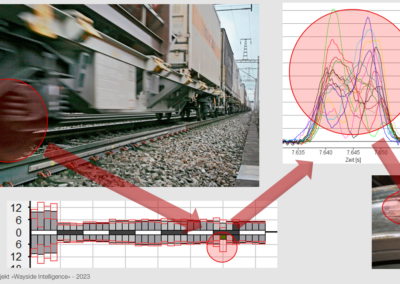
Digital rolling stock inspections: Win-win for everyone involved
The fixed train control systems for goods trains and their rolling stock are constantly being refined. The digital control system Wayside Intelligence (WIN) not only increases safety in rail freight transport, but also helps wagon keepers to plan their maintenance work more efficiently. It is therefore all the more important that they contribute their experience to the further development of the system.
That’s what it’s all about:
- Maintenance of rolling stock: central to safety
- Complex checks between regular maintenance appointments
- Digitalisation increases predictability
- Targeted use of data from the infrastructure manager
- Maintaining the state of the art and planning with foresight
- Testing and further developing WIN
Maintenance of rolling stock: central to safety
Wagon keepers are responsible for the proper maintenance of their vehicles, as required by the current Safety and Interoperability Directive. In doing so, they make a significant contribution to safe rail transport (see blog article «Gotthard Base Tunnel (#2): Automatic train control systems»). The central element is the periodic maintenance of wagons by certified specialist workshops (Entity in Charge of Maintenance, ECM). These are commissioned by the keeper. Based on operating experience, the common safety objectives and methods, those responsible should schedule the scheduled workshop visits of the rolling stock in such a way that the safety-relevant components, assuming expected wear and tear, have a degree of wear and tear suitable for operation according to general experience and the normal course of events until the next periodic workshop visit.
Extensive checks between regular maintenance appointments
However, several years pass between two regular workshop visits. In daily freight transport, the railway undertakings (RUs) and infrastructure managers are responsible for the safe operation of freight wagons. Before the trains depart, the RUs inspect all wagons for visible damage and defects in the loads. Damaged wagons are stripped and sent for unscheduled maintenance in accordance with the General Contract of Use for Freight Wagons (GCU). Such extraordinary manoeuvres disrupt the planned operating schedule, can lead to delays and mean extra work and loss of income for the affected rail transport companies.
Digitalisation increases predictability
To enable keepers to better fulfil their responsibility for the operational suitability of their wagons in operation in future, they are obliged to document all maintenance measures and to evaluate the experience gained during maintenance. For the ongoing evaluation of their maintenance plans, they need reliable technical data on the behaviour and current degree of wear of system-relevant components. Thanks to advancing digitalisation, this data is increasingly available to them.
Targeted use of data
The Swiss standard-gauge network is equipped with stationary train control systems operated by the infrastructure manager SBB Infrastructure (SBBI). This system is called Wayside Intelligence, or WIN for short. It records safety-relevant measured values from every passing train. The focus of these checks is on operational safety and the prevention of incidents. Unacceptable deviations lead to the train being stopped promptly and the defective or incorrectly loaded wagon being discarded if necessary.
Wagon keepers can also use this continuously recorded data with little initialisation effort to obtain a real picture of the condition of system-relevant components in their wagons. To do this, they must equip their wagons with an RFID tag (EN 17230) and set up an interface for data transmission that is coordinated with the SBBI, for example via an application programming interface API web-based GUI.
Maintaining the state of the art and planning with foresight
SBBI can currently transmit the recorded data on the wheelset condition of its identified wagons to every registered keeper. The keeper can configure the data flow according to their needs. The change in the dynamic wheel load coefficient over time provides a reliable picture of the wear development of the wheel tread. The collected data allows the wagon keeper to continuously develop the maintenance plans so that he can always maintain the state of the art. In addition, he can initiate an extra-periodic maintenance measure with foresight, without the need for an unscheduled outage.
Testing and further developing WIN
Development work is currently underway to automatically evaluate the images captured by the camera system at the ZKE site for systematic analysis and comparison of operating data. The aim is to recognise anomalies in the braking equipment and running gear during operation. Interested parties from freight railways and wagon keepers can actively contribute to the development of this system by sharing their information requirements and participating in tests. Interested parties should contact:
Jörg Bisang
SBB AG, Train Control Units
+41 79 698 22 41
joerg.bisang@sbb.ch
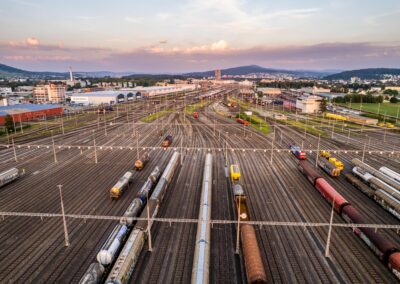
Setting the right track for inland freight transport by rail
The Federal Council released its message on the Goods Transport Act to the Parliament in January. It aims to modernize the comprehensive single-wagon load transport (EWLV) and establish the foundation for its economic viability. Despite various reservations, the Federal Council proposes investment subsidies, temporary operating compensations, and incentives for shippers.
Key Points:
- Federal Council aims for economic viability
- EWLV to undergo fundamental restructuring and modernization
- Support for EWLV operation during the modernization phase
- BAV criticizes industry guidelines
- Overview of the proposal
- What’s next
Federal Council aims for economic viability
On January 10, 2024, the Federal Council adopted the message on the Goods Transport Act (in German) for Parliament. We, from VAP, welcome the continued pursuit of the favored Variant 1. With this proposal, the Federal Council intends to modernize rail freight transport technically and organizationally, strengthen multimodal transport chains, and better integrate shipping. The overarching goals are to enhance supply security nationwide, promote multimodality, and contribute to the federal environmental and energy targets. This involves securing current area coverage, gradually increasing the share of rail freight transport, and laying the groundwork for economically independent operation.
EWLV to undergo fundamental restructuring and modernization
The basis for this is a comprehensive restructuring of the EWLV, or network traffic, with associated technological modernization (especially digitization), integration into the Swiss logistics system, and the establishment of non-discriminatory intramodal competition. The latter is expected to significantly improve the quality and efficiency of logistics services and simplify future innovations. The proposal allocates investment funds of CHF 180 million for the introduction of digital automatic coupling (DAK). Additional investment funds are earmarked for digitized process optimizations, data exchange platforms, and similar initiatives.
Support for EWLV operation during the modernization phase
To maintain current area coverage, the operation will be financially supported for eight years during the modernization phase. Allegedly uncovered costs will be covered, and compensations will decrease in line with the progress of the restructuring, determined in multi-year performance agreements with all freight railways involved in network traffic.
BAV criticizes industry guidelines
To ensure the success of this transformation and stable EWLV operation during the restructuring phase, the industry has proposed guidelines for specific measures and support criteria. However, the Federal Office of Transport (BAV) criticizes these as insufficient and demands further revisions. It particularly highlights the lack of perspective for a comprehensive redesign to enhance efficiency and utilization, foreseeing a tendency towards structural maintenance and further service reduction. The VAP understands the BAV’s reservations, as the guidelines represent a compromise between shippers and freight railways, with significant concessions made by VAP in the interest of the cause. Substantial revisions are now necessary, especially from the perspective of freight transport customers as users of logistics services.
We are prepared to significantly support further development. A comprehensive operational control system is seen as a crucial prerequisite for this transformation, serving as an evaluation tool for the effectiveness of measures and incentives, along with the establishment of a digital platform. The transformation should be methodically structured and implemented in a targeted manner as a project.
Overview of the proposal
- Investment subsidies: The Federal Council allocates CHF 180 million for the introduction of DAK, covering approximately one-third of the restructuring costs. The conversion of rolling stock must be coordinated across Europe and is expected to be completed by 2033. DAK is anticipated to substantially improve the productivity and quality of rail freight transport.
DAK Factsheet (PDF, 971 kB) - Operating compensations: To maintain EWLV at the current comprehensive level during the restructuring phase, the Federal Council proposes to financially support it for eight years on a degressive basis. By the end of this period, economic viability should be achieved. For the first four years, it requests CHF 260 million.
Freight Transport Factsheet (PDF, 712 kB) - Incentives for shippers: Permanently planned are handling and loading contributions, along with compensation for the uncovered costs of the ordered freight transport service, totaling CHF 60 million per year.
Read the complete message on the Goods Transport Act.
What’s next
- In the first half of 2024, open points between BAV and the industry will be discussed, and guidelines will be supplemented and clarified accordingly.
- Within this framework and following the approval of the revised law, a tendering process for various service packages within network traffic is expected to start by the end of 2024.
- Negotiations on potential performance agreements are planned for 2025, allowing any support measures to take effect in early 2026.
For further details, refer to this joint press release from VAP, LITRA, ASTAG, IG Kombinierter Verkehr, and VöV.

Ready for the next level of digitalisation
Without digital automatic coupling (DAC) there is no digitalisation and without digitalisation there is no competitiveness. This is how the modernisation of the rail freight sector could be described. However, it’s not quite that simple. Here is an overview of the status quo and the next steps to be taken.
This is what it’s all about:
- Combining hardware and software in a targeted manner
- Financing must provide the initial spark
- «Management Deployment DAK-CH» coordinates the migration
- Test phase: Switzerland at the forefront
Combining hardware and software in a targeted manner
The DAK gets the comprehensive digitalisation of the railway rolling. This is because it offers more than just fully automatic coupling or various tracking functions for individual wagons. It enables a leap forward in Swiss rail freight transport by supplying power and data to the entire train. But that’s not all. Data ecosystems are also required for digitally inspired business models in rail freight transport. The state mobility data infrastructure «MODI» is setting a good example here (see blog post «Data ecosystems: Sharing data to double its added value»). In order to combine hardware and software in such a way that the rail freight sector becomes competitive in multimodal logistics, high initial investments are required. Private companies in the freight transport sector will not be able to bear this alone.
Funding must provide the initial impetus
In Switzerland, the Federal Council adopts its dispatch on freight transport in January 2024 and forwards it to Parliament. A central component of this bill is the funding for migration to the DAK. The Federal Council envisages a funding contribution of CHF 180 million. The calculated investment volume for nationwide DAC migration in Switzerland amounts to CHF 500 million. We at the VAP are taking a leading role in the planning of financial resources. The federal government wants to finance the MODI data ecosystem for the first 10 years and then charge user fees. The European Union (EU) has also yet to fund DAC migration. The EU Commission intends to provide around EUR 200 million for the planned field tests from 2026.
«Management Deployment DAK-CH» coordinates the migration
The cross-industry committee «Management Deployment DAK-CH» will be responsible for coordinating the migration implementation in Switzerland. Among other things, this committee is responsible for the active exchange with Europe’s Rail, the planning of workshop capacities, the material disposition and the verification of the conversions. It must schedule the conversion of the vehicles in advance together with the keepers, as well as with the railway companies and other logistics players. In the meantime, the rail freight companies should determine their requirements for converted wagons according to the volume of traffic.
Test phase: Switzerland at the forefront
The functions and processes of the DAK must be harmonised throughout Europe. One milestone is the definition of the «Starter Package». This defines which functions the DAK migration will start with in Europe. Switzerland is currently actively involved in operational tests of new systems and is contributing pioneering results to the European working groups. Here is an overview of the current tests and projects with Swiss participation:
- The EU is having the rail technology specifications drawn up for the implementation of the «Greening Freight Traffic Package» of the European DAC Delivery Programme (EDDP). Switzerland is actively involved here.
- With «Power-Line-Plus», data is sent via the power supply lines. The Lucerne University of Applied Sciences and Arts is conducting operational tests together with SBB Cargo and providing key insights into data transmission quality. From 2024, proof of operational suitability is to be provided with all the functions of the «Starter Package» and transmission via «Power-Line-Plus», making commercial journeys possible. The FOT is supporting this development financially.
- From 2026, extensive field tests for the operational suitability and reliability of the DAK are planned in Europe with around 100 trains. After that, the aim is to migrate DAK efficiently, including in Switzerland.
- MODI consists of two main elements: The National Data Networking Infrastructure Mobility (NADIM) enables the standardised exchange of mobility data. The national geodata infrastructure «Transport Network CH» can ensure a standardised, digital representation of Switzerland’s entire transport system. MODI is currently only intended for passenger transport. However, freight transport could also benefit from this, for example through the digital networking of public authorities, transport and spatial planning authorities and all stakeholders involved. For this reason, the VAP is in close contact with the responsible offices of the federal administration in order to quickly integrate freight transport into the project.
